
Info
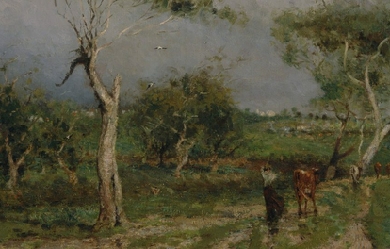
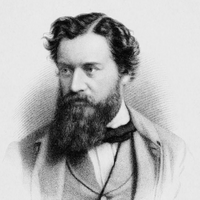
Charles Stuart Calverley (/ˈkɑːvərlɪ/; 22 December 1831– 17 February 1884) was an English poet and wit. He was the literary father of what has been called “the university school of humour”. Early life He was born at Martley, Worcestershire, and given the name Charles Stuart Blayds. In 1852, his father, the Rev. Henry Blayds, resumed the old family name of Calverley, which his grandfather had exchanged for Blayds in 1807. Charles went up to Balliol College, Oxford from Harrow School in 1850, and was soon known in Oxford as the most daring and high-spirited undergraduate of his time. He was a universal favourite, a delightful companion, a brilliant scholar and the playful enemy of all “dons.” In 1851 he won the Chancellor’s prize for Latin verse, but it is said that the entire exercise was written in an afternoon, when his friends had locked him into his rooms, refusing to let him out until he had finished what they were confident would prove the prize poem. A year later, to avoid the consequences of a college escapade (he had been expelled from Oxford), he too changed his name to Calverley and moved to Christ’s College, Cambridge. Here he was again successful in Latin verse, the only undergraduate to have won the Chancellor’s prize at both universities. In 1856 he took second place in the first class in the Classical Tripos. Later life He was elected fellow of Christ’s (1858), published Verses and Translations in 1862, and was called to the bar in 1865. Injuries sustained in a skating accident prevented him from following a professional career, and during the last years of his life he was an invalid. He died of Bright’s disease. Works * Nowadays he is best-known (at least in Cambridge, his adoptive home) as the author of the Ode to Tobacco which is to be found on a bronze plaque in Rose crescent, on the wall of what used to be Bacon’s the tobacconist. * His Translations into English and Latin appeared in 1866; his Theocritus translated into English Verse in 1869; Fly Leaves in 1872; and Literary Remains in 1885. * His Complete Works, with a biographical notice by Walter Joseph Sendall, a contemporary at Christ’s and his brother-in-law, appeared in 1901. * George W. E. Russell said of him: * He was a true poet; he was one of the most graceful scholars that Cambridge ever produced; and all his exuberant fun was based on a broad and strong foundation of Greek, Latin, and English literature. References Wikipedia—https://en.wikipedia.org/wiki/Charles_Stuart_Calverley
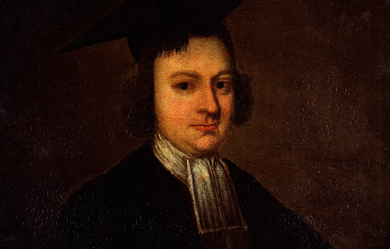
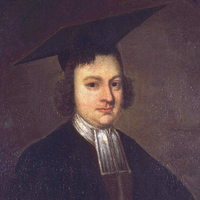
Christopher Smart (11 April 1722– 21 May 1771), also known as “Kit Smart”, “Kitty Smart”, and “Jack Smart”, was an English poet. He was a major contributor to two popular magazines and a friend to influential cultural icons like Samuel Johnson and Henry Fielding. Smart, a high church Anglican, was widely known throughout London.
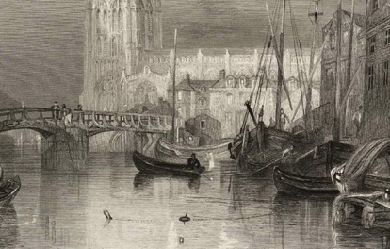
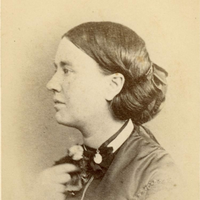
Jean Ingelow (17 March 1820– 20 July 1897), was an English poet and novelist. She also wrote several stories for children. Early life Born at Boston, Lincolnshire, she was the daughter of William Ingelow, a banker. As a girl she contributed verses and tales to magazines under the pseudonym of Orris, but her first (anonymous) volume, A Rhyming Chronicle of Incidents and Feelings, which came from an established London publisher, did not appear until her thirtieth year. This was called charming by Tennyson, who declared he should like to know the author; they later became friends. Professional life Jean Ingelow followed this book of verse in 1851 with a story, Allerton and Dreux, but it was the publication of her Poems in 1863 which suddenly made her a popular writer. This ran rapidly through numerous editions and was set to music, proving very popular for English domestic entertainment. Her work often focused on religious introspection. In the United States, her poems obtained great public acclaim, and the collection was said to have sold 200,000 copies. In 1867 she edited, with Dora Greenwell, The Story of Doom and other Poems, a collection of poetry for children At that point Ingelow gave up verse for a while and became industrious as a novelist. Off the Skelligs appeared in 1872, Fated to be Free in 1873, Sarah de Berenger in 1880, and John Jerome in 1886. She also wrote Studies for Stories (1864), Stories told to a Child (1865), Mopsa the Fairy (1869), and other stories for children. Ingelow’s children’s stories were influenced by Lewis Carroll and George MacDonald. Mopsa the Fairy, about a boy who discovers a nest of fairies and discovers a fairyland while riding on the back of an albatross) was one of her most popular works (it was reprinted in 1927 with illustrations by Dorothy P. Lathrop). Anne Thaxter Eaton, writing in A Critical History of Children’s Literature, calls the book “a well-constructed tale”, with “charm and a kind of logical make-believe.” Her third series of Poems was published in 1885. Jean Ingelow’s last years were spent in Kensington, by which time she had outlived her popularity as a poet. She died in 1897 and was buried in Brompton Cemetery, London. Criticism Ingelow’s poems, collected in one volume in 1898, were frequently popular successes. “Sailing beyond Seas” and “When Sparrows build in Supper at the Mill” were among the most popular songs of the day. Her best-known poems include “The High Tide on the Coast of Lincolnshire” and “Divided”. Many, particularly her contemporaries, have defended her work. Gerald Massey described The High Tide on the Coast of Lincolnshire as “a poem full of power and tenderness” and Susan Coolidge remarked in a preface to an anthology of Ingelow’s poems, "She stood amid the morning dew/ And sang her earliest measure sweet/ Sang as the lark sings, speeding fair/ to touch and taste the purer air". “Sailing beyond Seas” (or “The Dove on the Mast”) was a favourite poem of Agatha Christie, who quotes it in two of her novels, The Moving Finger and Ordeal by Innocence. Still, the larger literary world largely dismissed her work. The Cambridge History of English and American Literature, for example, wrote: "If we had nothing of Jean Ingelow’s but the most remarkable poem entitled Divided, it would be permissible to suppose the loss [of her], in fact or in might-have-been, of a poetess of almost the highest rank.... Jean Ingelow wrote some other good things, but nothing at all equalling this; while she also wrote too much and too long." Some of this criticism has overtones of dismissiveness of her as a female writer: “ Unless a man is an extraordinary coxcomb, a person of private means, or both, he seldom has the time and opportunity of committing, or the wish to commit, bad or indifferent verse for a long series of years; but it is otherwise with woman.” There have many parodies of her poetry, particularly of her archaisms, flowery language and perceived sentimentality. These include “Lovers, and a Reflexion” by Charles Stuart Calverley and “Supper at the Kind Brown Mill”, a parody of her “Supper at the Mill”, which appears in Gilbert Sorrentino’s satirical novel Blue Pastoral (1983). It is no longer fashionable to criticise poetry for the use of dialect.
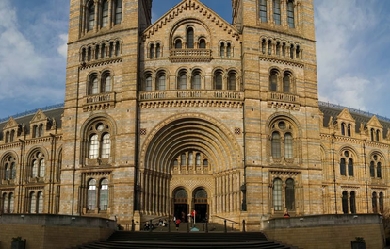
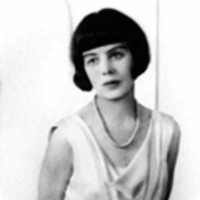
Elizabeth Daryush (8 December 1887 – 7 April 1977) was an English poet. Life Daryush was the daughter of Robert Bridges; her maternal grandfather was Alfred Waterhouse. She married Ali Akbar Daryush, whom she had met when he was studying at the University of Oxford, and thereafter spent some time in Persia; most of her life was spent in Boars Hill, outside Oxford, where the Elizabeth Daryush Memorial Garden is named for her. Writings Poetry Daryush, daughter of English poet laureate Robert Bridges (some of her early work was published as 'Elizabeth Bridges’), followed her father’s lead not only in choosing poetry as her life’s work but also in the traditional style of poetry she chose to write. The themes of her work are often critical of the upper classes and the social injustice their privilege levied upon others. This characteristic was not present in her early work, including her first two books of poems, published under the name Elizabeth Bridges, which appeared while she was still in her twenties. According to John Finlay, writing in the Dictionary of Literary Biography, Daryush’s “early poetry is preoccupied with rather conventional subject matter and owes a great deal to the Edwardians.” Syllabic style Daryush took her father’s experiment in syllabic verse a step farther by making it less experimental; whereas Bridges’ syllable count excluded elidable syllables, producing some variation in the total number of pronounced syllables per line, Daryush’s was strictly aural, counting all syllables actually sounded when the poem was read aloud. It is for her successful experiments with syllabic meter that Daryush is best known to contemporary readers, as exampled in her poem Accentedal in the quaternion form. Yvor Winters, the poet and critic, considered Daryush more successful in writing syllabics than was her father, noting that her poem Still-Life was her finest syllabic experiment, and also a companion-piece to Children of Wealth. Winters considered the social context of Still Life, which is nowhere mentioned, yet from which the poem draws its power. Characteristics Beyond its social content, Daryush’s work is also recognized for a consistent and well-defined personal vision. As Finlay noted, "For her. . .poetry always dealt with the `stubborn fact’ of life as it is, and the only consolations it offered were those of understanding and a kind of half-Christian, half-stoical acceptance of the inevitable." However, he also argued that Daryush’s best poems transcend such fatalism, “dealing with the moral resources found in one’s own being. . .and a recognition of the beauties in the immediate, ordinary world around us.” In many of her terse short poems, there is formal and intellectual mastery; her last, longest and most amibitious poem, ‘Air and Variations,’ was a formal tribute to Gerard Manly Hopkins Daryush has been described as a pioneer technical innovator, a poet of the highest dedication and seriousness whose poetry grapples with life’s intensest issues.
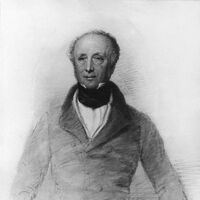
Horace Smith (born Horatio Smith) (31 December 1779 – 12 July 1849) was an English poet and novelist, perhaps best known for his participation in a sonnet-writing competition with Percy Bysshe Shelley. It was of him that Shelley said: “Is it not odd that the only truly generous person I ever knew who had money enough to be generous with should be a stockbroker? He writes poetry and pastoral dramas and yet knows how to make money, and does make it, and is still generous.” Smith was born in London, the son of a London solicitor, and the fifth of eight children. He was educated at Chigwell School with his elder brother James Smith, also a writer. Horace first came to public attention in 1812 when he and his brother James (four years older than he) produced a popular literary parody connected to the rebuilding of the Drury Lane Theatre, after a fire in which it had been burnt down. The managers offered a prize of £50 for an address to be recited at the Theatre's reopening in October. The Smith brothers hit on the idea of pretending that the most popular poets of the day had entered the competition and writing a book of addresses rejected from the competition in parody of their various styles. James wrote parodies of Wordsworth, Southey, Coleridge and Crabbe, and Horace took on Byron, Moore, Scott and Bowles. The book was a smash, and went through seven editions within three months. The Rejected Addresses still stands the most widely popular parodies ever published in the country. The book was written without malice; none of the poets caricatured took offence, while the imitation is so clever that both Byron and Scott claimed that they could scarcely believe they had not written the addresses ascribed to them. The only other collaboration by the two brothers was Horace in London (1813). Smith went on to become a prosperous stockbroker. Smith knew Shelley as a member of the circle around Leigh Hunt. Smith helped to manage Shelley's finances. Sonnet-writing competitions were not uncommon; Shelley and Keats wrote competing sonnets on the subject of the Nile River. Inspired by Diodorus Siculus (Book 1, Chapter 47), they each wrote and submitted a sonnet on the subject to The Examiner. Shelley's Ozymandias was published on 11 January 1818 under the pen name Glirastes, and Smith's On a Stupendous Leg of Granite, Discovered Standing by Itself in the Deserts of Egypt, with the Inscription Inserted Below was published on 1 February 1818 with the initials H.S. (and later in his collection Amarynthus). After making his fortune, Horace Smith produced a series of historical novels: Brambletye House (1826), Tor Hill (1826), Reuben Apsley (1827), Zillah (1828), The New Forest (1829), Walter Colyton (1830), among others. Three volumes of Gaieties and Gravities, published by him in 1826, contain many clever essays both in verse and prose, but the only piece that remains much remembered is the “Address to the Mummy in Belzoni's Exhibition.” Horace Smith died at Tunbridge Wells on 12 July 1849. References Wikipedia – http://en.wikipedia.org/wiki/Horace_Smith_(poet)
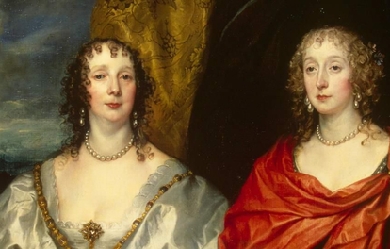
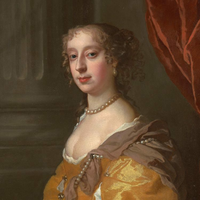
Anne Killigrew (1660–1685) was an English poet. Born in London, Killigrew is perhaps best known as the subject of a famous elegy by the poet John Dryden entitled To The Pious Memory of the Accomplish’d Young Lady Mrs. Anne Killigrew (1686). She was however a skilful poet in her own right, and her Poems were published posthumously in 1686. Dryden compared her poetic abilities to the famous Greek poet of antiquity, Sappho. Killigrew died of smallpox aged 25. Early life and inspiration Anne Killigrew was born in early 1660, before the Restoration, at St. Martin’s Lane in London. Not much is known about her mother Judith Killigrew, but her father Dr. Henry Killigrew published several sermons and poems as well as a play called The Conspiracy. Her two paternal uncles were also published playwrights. Sir William Killigrew (1606–1695) published two collections of plays and Thomas Killigrew (1612–1683) not only wrote plays but built the theatre now known as Drury Lane. Her father and her uncles had close connections with the Stuart Court, serving Charles I, Charles II, and his Queen, Catherine of Braganza. Anne was made a personal attendant, before her death, to Mary of Modena, Duchess of York. Little is recorded about Anne’s education, but it is known that she kept up with her social class, and she received instruction in both poetry and painting in which she excelled. Her theatrical background added to her use of shifting voices in her poetry. In John Dryden’s Ode to Anne he points out that “Art she had none, yet wanted none. For Nature did that want supply” (Stanza V). Killigrew most likely got her education through studying the Bible, Greek mythology, and philosophy. Mythology was often expressed throughout her paintings and poetry. Inspiration for Killigrew’s poetry came from her knowledge of Greek myths and Biblical proverbs as well as from some very influential female poets who lived during the Restoration period: Katherine Philips and Anne Finch (also a maid to Mary of Modena at the same time as Killigrew). Mary of Modena encouraged the French tradition of precieuses (patrician women intellectuals) which pressed women’s participation in theatre, literature, and music. In effect, Killigrew was surrounded with a poetic feminist inspiration on a daily basis in Court: she was encompassed by strong intelligent women who encouraged her writing career as much as their own. With this motivation came a short book of only thirty-three poems published soon after her death by her father. It was not abnormal for poets, especially for women, never to see their work published in their lifetime. Since Killigrew died at the young age of 25 she was only able to produce a small collection of poetry. In fact, the last three poems were only found among her papers and it is still being debated about whether or not they were actually written by her. Inside the book is also a self painted portrait of Anne and the Ode by family friend and poet John Dryden. The Poet and the Painter Anne Killigrew excelled in multiple media, which was noted by contemporary poet, mentor, and family friend, John Dryden in his dedicatory ode to Killigrew. He addresses her as "the Accomplisht Young LADY Mrs Anne Killigrew, Excellent in the two Sister-Arts of Poësie, and Painting." Scholars believe that Kelligrew painted a total of 15 paintings; however, only four are known to exist today. Many of her paintings display biblical and mythological imagery. Yet, Killigrew was also skilled at portraits, and her works include a self-portrait and a portrait of James, Duke of York. Some of her poetry references her own paintings, such as her poem “On a Picture Painted by her self, representing two Nimphs of DIANA’s, one in a posture to Hunt, the other Batheing.” Both her poems and her paintings place emphasis on women and nature, suggesting female rebellion in a male-dominated society. Contemporary critics noted her exceptional skill in both mediums, with John Dryden addressing his dedicatory John Dryden and critical reception Killigrew is best known for being the subject of John Dryden’s famous, extolling ode, which praises Killigrew for her beauty, virtue, and literary talent. However, Dryden was one of several contemporary admirers of Killigrew, and the posthumous collection of her work published in 1686 included several additional poems commending her literary merit, irreproachable piety, and personal charm. Nonetheless, critics often disagree about the nature of Dryden’s ode: some believe his praise to be too excessive, and even ironic. These individuals condemn Killigrew for using well worn and conventional topics, such as death, love, and the human condition, in her poetry and pastoral dialogues. In fact, Alexander Pope, a prominent critic, as well as the leading poet of the time, labelled her work “crude” and “unsophisticated.” As a young poet who had only distributed her work via manuscript prior to her death, it is possible that Killigrew was not ready to see her work published so soon. Some say Dryden defended all poets because he believed them to be teachers of moral truths; thus, he felt Killigrew, as an inexperienced yet dedicated poet, deserved his praise. However, Anthony Wood in his 1721 essay defends Dryden’s praise, confirming that Killigrew “was equal to, if not superior” to any of the compliments lavished upon her. Furthermore, Wood asserts that Killigrew must have been well received in her time, otherwise “her Father would never have suffered them to pass the Press” after her death. Authorship controversy Then, there is the question of the last three poems that were found among her papers. They seem to be in her handwriting, which is why Killigrew’s father added them to her book. The poems are about the despair the author has for another woman, and could possibly be autobiographical if they are in fact by Killigrew. Some of her other poems are about failed friendships, possibly with Anne Finch, so this assumption may have some validity. An early death Killigrew died of smallpox on 16 June 1685, when she was only 25 years old. She is buried in the Chancel of the Savoy Chapel (dedicated to St John the Baptist) where a monument was built in her honour, but has since been destroyed by a fire.
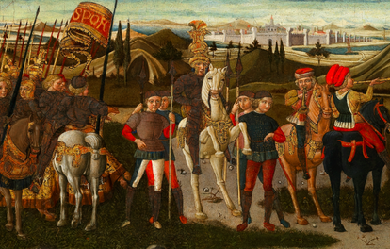
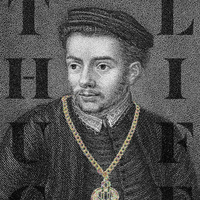
John Skelton, also known as John Shelton (c. 1463– 21 June 1529), possibly born in Diss, Norfolk, was an English poet. He had been a tutor to King Henry VIII of England and died at Westminster. Education Skelton is said to have been educated at Oxford. He certainly studied at Cambridge, and he is probably the “one Scheklton” mentioned by William Cole as taking his M.A. degree in 1484. In 1490, William Caxton in the preface to The Boke of Eneydos compyled by Vyrgyle refers to him in terms which prove that Skelton had already won a reputation as a scholar. “But I pray mayster John Skelton,” he says, “late created poete laureate in the unyversite of Oxenforde, to oversee and correct this sayd booke... for him I know for suffycyent to expowne and englysshe every dyffyculte that is therin. For he hath late translated the epystlys of Tulle, and the boke of dyodorus siculus, and diverse other works... in polysshed and ornate termes craftely... suppose he hath drunken of Elycons well.” The laureateship referred to was a degree in rhetoric. In 1493 Skelton received the same honour at Cambridge, and also, it is said, at Leuven. He found a patron in the pious and learned Countess of Richmond, Henry VII’s mother, for whom he wrote Of Mannes Lyfe the Peregrynacioun, a translation, now lost, of Guillaume de Diguileville’s Pèlerinage de la vie humaine. An elegy “Of the death of the noble prince Kynge Edwarde the forth,” included in some of the editions of the Mirror for Magistrates, and another (1489) on the death of Henry Percy, fourth earl of Northumberland, are among his earliest poems. Poet laureate In the last decade of the century he was appointed tutor to Prince Henry (afterwards King Henry VIII). He wrote for his pupil a lost Speculum principis, and Erasmus, in dedicating an ode to the prince in 1500, speaks of Skelton as “unum Britannicarum literarum lumen ac decus.” In 1498 he was successively ordained sub-deacon, deacon and priest. He seems to have been imprisoned in 1502, but no reason is known for his disgrace. (It has been said that he offended Wolsey but this would be impossible if the date is correct, given Wolsey was not yet an influential figure at court - Wolsey’s rise began in 1508). Two years later he retired from regular attendance at court to become rector of Diss, a benefice which he retained nominally until his death. Skelton frequently signed himself “regius orator” and poet-laureate, but there is no record of any emoluments paid in connection with these dignities, although the Abbé du Resnel, author of Recherches sur les poètes couronnez, asserts that he had seen a patent (1513–1514) in which Skelton was appointed poet-laureate to Henry VIII. As rector of Diss he caused great scandal among his parishioners, who thought him, says Anthony Wood, more fit for the stage than for the pew or the pulpit. He was secretly married to a woman who lived in his house, and he had earned the hatred of the Dominican monks by his fierce satire. Consequently, he came under the formal censure of Richard Nix, the bishop of the diocese, and appears to have been temporarily suspended. After his death a collection of farcical tales, no doubt chiefly, if not entirely, apocryphal, gathered round his name—The Merie Tales of Skelton. During the rest of the century he figured in the popular imagination as an incorrigible practical joker. His sarcastic wit made him some enemies, among them Sir Christopher Garnesche or Garneys, Alexander Barclay, William Lilly and the French scholar, Robert Gaguin (c. 1425-1502). With Garneys he engaged in a regular “flyting,” undertaken, he says, at the king’s command, but Skelton’s four poems read as if the abuse in them were dictated by genuine anger. Earlier in his career he had found a friend and patron in Cardinal Wolsey, and the dedication to the cardinal of his Replycacion is couched in the most flattering terms. But in 1522, when Wolsey in his capacity of legate dissolved convocation at St Paul’s, Skelton put in circulation the couplet: Gentle Paul, laie doune thy sweard For Peter of Westminster hath shaven thy beard. In Colyn Cloute he incidentally attacked Wolsey in a general satire on the clergy, “Speke, Parrot” and “Why come ye nat to Courte?” are direct and fierce invectives against the cardinal who is said to have more than once imprisoned the author. To avoid another arrest Skelton took sanctuary in Westminster Abbey. He was kindly received by the abbot, John Islip, who continued to protect him until his death. The inscription on his tomb in the neighbouring church of St Margaret’s described him as vales pierius. It is thought that Skelton wrote “Why come ye nat to Courte?” having been inspired by Sir Thomas Spring, a merchant in Suffolk who had fallen out with Wolsey over tax. His works In his Garlande of Laurell Skelton gives a long list of his works, only a few of which are extant. The garland in question was worked for him in silks, gold and pearls by the ladies of the Countess of Surrey at Sheriff Hutton Castle, where he was the guest of the duke of Norfolk. The composition includes complimentary verses to the various ladies concerned, and a good deal of information about himself. But it is as a satirist that Skelton merits attention. The Bowge of Court is directed against the vices and dangers of court life. He had already in his Boke of the Thre Foles drawn on Alexander Barclay’s version of the Narrenschijf of Sebastian Brant, and this more elaborate and imaginative poem belongs to the same class. Skelton, falling into a dream at Harwich, sees a stately ship in the harbour called the Bowge of Court, the owner of which is the “Dame Saunce Pere”. Her merchandise is Favour; the helmsman Fortune; and the poet, who figures as Drede (modesty), finds on board F’avell (the flatterer), Suspect, Harvy Hafter (the clever thief), Dysdayne, Ryotte, Dyssymuler and Subtylte, who all explain themselves in turn, until at last Drede, who finds they are secretly his enemies, is about to save his life by jumping overboard, when he wakes with a start. Both of these poems are written in the seven-lined Rhyme Royal, a Continental verse-form first used in English by Chaucer, but it is in an irregular metre of his own—known as “Skeltonics”—that his most characteristic work was accomplished. The Boke of Phyllyp Sparowe, the lament of Jane Scroop, a schoolgirl in the Benedictine convent of Carrow near Norwich, for her dead bird, was no doubt inspired by Catullus. It is a poem of some 1,400 lines and takes many liberties with the formularies of the church. The digressions are considerable. We learn what a wide reading Jane had in the romances of Charlemagne, of the Round Table, The Four Sons of Aymon and the Trojan cycle. Skelton finds space to give an opinion of Geoffrey Chaucer, John Gower and John Lydgate. Whether we can equate this opinion, voiced by the character of Jane, with Skelton’s own is contentious. It would appear that he seems fully to have realised Chaucer’s value as a master of the English language. Gower’s matter was, Jane tells us, “worth gold,” but his English she regards as antiquated. The verse in which the poem is written, called from its inventor “Skeltonical,” is here turned entirely to whimsical use. The lines are usually six-syllabled, but vary in length, and rhyme in groups of two, three, four and even more. It is not far removed from the old alliterative English verse, and well fitted to be chanted by the minstrels who had sung the old ballads. For its comic admixture of Latin Skelton had abundant example in French and Low Latin macaronic verse. He makes frequent use of Latin and French words to carry out his exacting system of frequently recurring rhymes. This breathless, voluble measure was in Skelton’s energetic hands an admirable vehicle for invective, but it easily degenerated into doggerel. By the end of the 16th century he was a “rude rayling rimer” (Puttenham, Arte of English Poesie), and at the hands of Pope and Warton he fared even worse. His own criticism is a just one: For though my ryme be ragged, Tattered and jagged, Rudely rayne beaten, Rusty and moughte eaten, It hath in it some pyth. Colyn Cloute represents the average country man who gives his opinions on the state of the church. There is no more scathing indictment of the sins of the clergy before the Reformation. He exposes their greed, their ignorance, the ostentation of the bishops and the common practice of simony, but takes care to explain that his accusations do not include all and that he writes in defence of, not against, the church. He repeatedly hits at Wolsey even in this general satire, but not directly. Speke, Parrot has only been preserved in a fragmentary form, and is exceedingly obscure. It was apparently composed at different times, but in the latter part of the composition he openly attacks Wolsey. In Why come ye not to Courte? there is no attempt at disguise. The wonder is not that the author had to seek sanctuary, but that he had any opportunity of doing so. He rails at Wolsey’s ostentation, at his almost royal authority, his overbearing manner to suitors high and low, and taunts him with his mean extraction. This scathing invective was not allowed to be printed in the cardinal’s lifetime, but it was no doubt widely circulated in manuscript and by repetition. The charge of coarseness regularly brought against Skelton is based chiefly on The Tunnynge of Elynoare Rummynge, a realistic description in the same metre of the drunken women who gathered at a well-known ale-house kept by Elynour Rummynge at Leatherhead, not far from the royal palace of Nonsuch. “Skelton Laureate against the Scottes” is a fierce song of triumph celebrating the victory of Flodden. “Jemmy is ded And closed in led, That was theyr owne Kynge,” says the poem; but there was an earlier version written before the news of James IV’s death had reached London. This, which is the earliest singly printed ballad in the language, was entitled A Ballade of the Scottysshe Kynge, and was rescued in 1878 from the wooden covers of a copy of Huon de Bordeaux. “Howe the douty Duke of Albany, lyke a cowarde knight” deals with the campaign of 1523, and contains a panegyric of Henry VIII. To this is attached an envoi to Wolsey, but it must surely have been misplaced, for both the satires on the cardinal are of earlier date. Skelton also wrote three plays, only one of which survives. Magnificence is one of the best examples of the morality play. It deals with the same topic as his satires, the evils of ambition; the play’s moral, namely “how suddenly worldly wealth doth decay” was a favourite one with him. Thomas Warton in his History of English Poetry described another piece titled Nigramansir, printed by Wynkyn de Worde in 1504. It deals with simony and the love of money in the church; but no copy is known to exist, and some suspicion has been cast on Warton’s statement. Illustration of the hold Skelton had on the public imagination is supplied from the stage. A play (1600) called Scogan and Shelton, by Richard Hathwaye and William Rankins, is mentioned by Henslowe. In Anthony Munday’s Downfall of Robert, Earl of Huntingdon, Skelton acts the part of Friar Tuck, and Ben Jonson in his masque, The Fortunate Isles, introduced Skogan and Skelton in like habits as they lived. Very few of Skelton’s productions are dated, and their titles are here necessarily abbreviated. De Worde printed the Bowge of Court twice. Divers Batettys and dyties salacious devysed by Master Shelton Laureat, and Shelton Laureate agaynste a comely Coystroune have no date or printer’s name, but are evidently from the press of Richard Pynson, who also printed Replycacion against certain yang scalers, dedicated to Wolsey. The Garlande or Chapelet of Laurell was printed by Richard Faukes (1523); Magnificence, A goodly interlude, probably by John Rastell about 1533, reprinted (1821) for the Roxburghe Club. Hereafter foloweth the Boke of Phyllyp Sparowe was printed by Richard Kele (1550?), Robert Toy, Antony Kitson (1560?), Abraham Veale (1570?), John Walley, John Wyght (1560?). Hereafter foloweth certaine bokes compyled by mayster Shelton... including “Speke, Parrot,” “Ware the Hawke,” “Elynoure Rumpiynge” and others, was printed by Richard Lant (1550?), John King and Thomas March (1565?), by John Day (1560). Hereafter foloweth a title boke called Colyn Cloute and Hereafter... why come ye nat to Courte? were printed by Richard Kele (1550?) and in numerous subsequent editions. Pithy, plesaunt and profitable workes of maister Shelton, Poete Laureate. Nowe collected and newly published was printed in 1568, and reprinted in 1736. A scarce reprint of Filnour Rummin by Samuel Rand appeared in 1624. Five of Skelton’s 'Tudor Portraits’, including 'The Tunnying of Elynour Rummyng’ were set to music by Ralph Vaughan Williams in or around 1935. Although he changed the text here and there to suit his music, the sentiments are well expressed. The other four poems are 'My pretty Bess’,'Epitaph of John Jayberd of Diss’, 'Jane Scroop (her lament for Philip Sparrow)', and 'Jolly Rutterkin’. The music is rarely performed, although it is immensely funny, and captures the coarseness of Skelton in an inspired way. See The Poetical Works of John Shelton; with Notes and some account of the author and his writings, by the Rev. Alexander Dyce (2 vols., 1843). A selection of his works was edited by WH Williams (London, 1902). See also Zur Charakteristik John Skeltons by Dr Arthur Koelbing (Stuttgart, 1904); F Brie, “Skelton Studien” in Englische Studien, vol. 38 (Heilbronn, 1877, etc.); A Rey, Skelton’s Satirical Poems... (Berne, 1899); A Thummel, Studien über John Skelton (Leipzig-Reudnitz, 1905); G Saintsbury, Hist. of Eng. Prosody (vol. i, 1906); and A Kolbing in the Cambridge History of English Literature (vol. iii, 1909). Family John Skelton’s lineage is difficult to prove. He was probably related to Sir John Shelton and his children, who also came from Norfolk. Sir John’s daughter, Mary Shelton, was a mistress of Henry VIII’s during the reign of her cousin, Anne Boleyn. Mary Shelton was the main editor and contributor to the Devonshire MS, a collection of poems written by various members of the court. Interestingly, it is said that several of Skelton’s works were inspired by women who were to become mothers to two of Henry VIII’s six wives. Elizabeth Boleyn, Countess of Wiltshire and Ormonde, was said to be so beautiful that Skelton compared her to Cressida and a popular but unverifiable legend also suggests that several poems were inspired by Margery Wentworth. Elizabeth was the mother of Anne Boleyn, Henry’s second wife; Margery was the mother of his third, Jane Seymour. References Wikipedia—https://en.wikipedia.org/wiki/John_Skelton
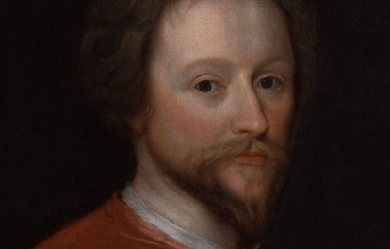
John Fletcher (1579–1625) was a Jacobean playwright. Following William Shakespeare as house playwright for the King’s Men, he was among the most prolific and influential dramatists of his day; both during his lifetime and in the early Restoration, his fame rivaled Shakespeare’s. Though his reputation has been far eclipsed since, Fletcher remains an important transitional figure between the Elizabethan popular tradition and the popular drama of the Restoration. Biography Early life Fletcher was born in December 1579 (baptised 20 December) in Rye, Sussex, and died of the plague in August 1625 (buried 29 August in St. Saviour’s, Southwark). His father Richard Fletcher was an ambitious and successful cleric who was in turn Dean of Peterborough, Bishop of Bristol, Bishop of Worcester, and Bishop of London (shortly before his death) as well as chaplain to Queen Elizabeth. As dean of Peterborough, Richard Fletcher, at the execution of Mary, Queen of Scots, at Fotheringay “knelt down on the scaffold steps and started to pray out loud and at length, in a prolonged and rhetorical style as though determined to force his way into the pages of history”. He cried out at her death, “So perish all the Queen’s enemies!” Richard Fletcher died shortly after falling out of favour with the queen, over a marriage the queen had advised against. He appears to have been partly rehabilitated before his death in 1596; however, he died substantially in debt. The upbringing of John Fletcher and his seven siblings was entrusted to his paternal uncle Giles Fletcher, a poet and minor official. His uncle’s connections ceased to be a benefit, and may even have become a liability, after the rebellion of the Earl of Essex, who had been his patron. Fletcher appears to have entered Corpus Christi College, Cambridge University in 1591, at the age of eleven. It is not certain that he took a degree, but evidence suggests that he was preparing for a career in the church. Little is known about his time at college, but he evidently followed the same path previously trodden by the University wits before him, from Cambridge to the burgeoning commercial theatre of London. Collaborations with Beaumont In 1606, he began to appear as a playwright for the Children of the Queen’s Revels, then performing at the Blackfriars Theatre. Commendatory verses by Richard Brome in the Beaumont and Fletcher 1647 folio place Fletcher in the company of Ben Jonson; a comment of Jonson’s to Drummond corroborates this claim, although it is not known when this friendship began. At the beginning of his career, his most important association was with Francis Beaumont. The two wrote together for close to a decade, first for the children and then for the King’s Men. According to an anecdote transmitted or invented by John Aubrey, they also lived together (in Bankside), sharing clothes and having “one wench in the house between them.” This domestic arrangement, if it existed, was ended by Beaumont’s marriage in 1613, and their dramatic partnership ended after Beaumont fell ill, probably of a stroke, the same year. Successor to Shakespeare By this time, Fletcher had moved into a closer association with the King’s Men. He collaborated with Shakespeare on Henry VIII, The Two Noble Kinsmen, and the lost Cardenio, which is probably (according to some modern scholars) the basis for Lewis Theobald’s play Double Falsehood. A play he wrote singly around this time, The Woman’s Prize or the Tamer Tamed, is a sequel to The Taming of the Shrew. In 1616, after Shakespeare’s death, Fletcher appears to have entered into an exclusive arrangement with the King’s Men similar to Shakespeare’s. Fletcher wrote only for that company between the death of Shakespeare and his own death nine years later. He never lost his habit of collaboration, working with Nathan Field and later with Philip Massinger, who succeeded him as house playwright for the King’s Men. His popularity continued unabated throughout his life; during the winter of 1621, three of his plays were performed at court. He died in 1625, apparently of the plague. He seems to have been buried in what is now Southwark Cathedral, although the precise location is not known; there is a reference by Aston Cockayne to a single grave for Fletcher and Massinger (also buried in Southwark). What is more certain is that two simple adjacent stones in the floor of The Choir of Southwark Cathedral, one marked 'Edmond Shakespeare 1607' the other 'John Fletcher 1625' refer to Shakespeare’s younger brother and the playwright. His mastery is most notable in two dramatic types, tragicomedy and comedy of manners. Stage history Fletcher’s early career was marked by one significant failure, of The Faithful Shepherdess, his adaptation of Giovanni Battista Guarini’s Il Pastor Fido, which was performed by the Blackfriars Children in 1608. In the preface to the printed edition of his play, Fletcher explained the failure as due to his audience’s faulty expectations. They expected a pastoral tragicomedy to feature dances, comedy, and murder, with the shepherds presented in conventional stereotypes– as Fletcher put it, wearing “gray cloaks, with curtailed dogs in strings.” Fletcher’s preface in defence of his play is best known for its pithy definition of tragicomedy: "A tragicomedy is not so called in respect of mirth and killing, but in respect it wants [i.e., lacks] deaths, which is enough to make it no tragedy; yet brings some near it, which is enough to make it no comedy." A comedy, he went on to say, must be “a representation of familiar people,” and the preface is critical of drama that features characters whose action violates nature. In that case, Fletcher appears to have been developing a new style faster than audiences could comprehend. By 1609, however, he had found his stride. With Beaumont, he wrote Philaster, which became a hit for the King’s Men and began a profitable connection between Fletcher and that company. Philaster appears also to have initiated a vogue for tragicomedy; Fletcher’s influence has been credited with inspiring some features of Shakespeare’s late romances (Kirsch, 288-90), and his influence on the tragicomic work of other playwrights is even more marked. By the middle of the 1610s, Fletcher’s plays had achieved a popularity that rivalled Shakespeare’s and cemented the preeminence of the King’s Men in Jacobean London. After Beaumont’s retirement and early death in 1616, Fletcher continued working, both singly and in collaboration, until his death in 1625. By that time, he had produced, or had been credited with, close to fifty plays. This body of work remained a major part of the King’s Men’s repertory until the closing of the theatres in 1642. During the Commonwealth, many of the playwright’s best-known scenes were kept alive as drolls, the brief performances devised to satisfy the taste for plays while the theatres were suppressed. At the re-opening of the theatres in 1660, the plays in the Fletcher canon, in original form or revised, were by far the most common fare on the English stage. The most frequently revived plays suggest the developing taste for comedies of manners. Among the tragedies, The Maid’s Tragedy and, especially, Rollo Duke of Normandy held the stage. Four tragicomedies (A King and No King, The Humorous Lieutenant, Philaster, and The Island Princess) were popular, perhaps in part for their similarity to and foreshadowing of heroic drama. Four comedies (Rule a Wife And Have a Wife, The Chances, Beggars’ Bush, and especially The Scornful Lady) were also popular. Yet the popularity of these plays relative to those of Shakespeare and to new productions steadily eroded. By around 1710, Shakespeare’s plays were more frequently performed, and the rest of the century saw a steady erosion in performance of Fletcher’s plays. By 1784, Thomas Davies asserted that only Rule a Wife and The Chances were still current on stage. A generation later, Alexander Dyce mentioned only The Chances. Since then Fletcher has increasingly become a subject only for occasional revivals and for specialists. Fletcher and his collaborators have been the subject of important bibliographic and critical studies, but the plays have been revived only infrequently. Plays Because Fletcher collaborated regularly and widely, attempts to separate out Fletcher’s work from this collaborative fabric of plays have experienced difficulties in attribution. Fletcher collaborated most often with Beaumont and Massinger but also with Nathan Field, Shakespeare and others. Some of his early collaborations with Beaumont were later revised by Massinger, adding another layer of complexity to the collaborative texture of the plays. According to scholars such as Hoy, Fletcher used distinctive mannerisms that Hoy argued identify his presence. According to Hoy’s figures, he frequently uses ye instead of you, at rates sometimes approaching 50%. He employs 'em for them, along with a set of other preferences in contractions. He adds a sixth stressed syllable to a standard pentameter verse line—most often sir but also too or still or next. Various other specific habits and preferences may reveal his hand. The detection of this pattern, this personal Fletcherian textual profile, has persuaded some researchers that they have penetrated the Fletcher canon with what they consider success—and has in turn encouraged the use of similar techniques more broadly in the study of literature. [See: stylometry.] Some scholars, such as Jeffrey Masten and Gordon McMullan, have pointed out limitations of logic and method in Hoy’s and others’ attempts to distinguish playwrights on the basis of style and linguistic preferences. Bibliography has attempted to establish the writers of each play. Attempts to determine the exact “shares” of each writer (for instance by Cyrus Hoy) in particular plays is ongoing, based on patterns of textual and linguistic preferences, stylistic grounds, and idiosyncrasies of spelling. The list that follows gives a tentative verdict on the writing of the plays in Fletcher’s canon, with likeliest composition dates, dates of first publication, and dates of licensing by the Master of the Revels, where available. Solo plays The Faithful Shepherdess, pastoral (written 1608–9; printed 1609?) Valentinian, tragedy (1610–14; 1647) Monsieur Thomas, comedy (c. 1610–16; 1639) The Woman’s Prize, or The Tamer Tamed, comedy (c. 1611?; 1647) Bonduca, tragedy (1611–14; 1647) The Chances, comedy (c. 1613–25; 1647) Wit Without Money, comedy (c. 1614; 1639) The Mad Lover, tragicomedy (acted 5 January 1617; 1647) The Loyal Subject, tragicomedy (licensed 16 November 1618; revised 1633?; 1647) The Humorous Lieutenant, tragicomedy (c. 1619; 1647) Women Pleased, tragicomedy (c. 1619–23; 1647) The Island Princess, tragicomedy (c. 1620; 1647) The Wild Goose Chase, comedy (c. 1621; 1652) The Pilgrim, comedy (c. 1621; 1647) A Wife for a Month, tragicomedy (licensed 27 May 1624; 1647) Rule a Wife and Have a Wife, comedy (licensed 19 October 1624; 1640) Collaborations With Francis Beaumont: The Woman Hater, comedy (1606; 1607) Cupid’s Revenge, tragedy (c. 1607–12; 1615) Philaster, or Love Lies a-Bleeding, tragicomedy (c. 1609; 1620) The Maid’s Tragedy, Tragedy (c. 1609; 1619) A King and No King, tragicomedy (1611; 1619) The Captain, comedy (c. 1609–12; 1647) The Scornful Lady, comedy (c. 1613; 1616) Love’s Pilgrimage, tragicomedy (c. 1615–16; 1647) The Noble Gentleman, comedy (c. 1613?; licensed 3 February 1626; 1647) With Beaumont and Massinger: Thierry and Theodoret, tragedy (c. 1607?; 1621) The Coxcomb, comedy (c. 1608–10; 1647) Beggars’ Bush, comedy (c. 1612–13? revised 1622?; 1647) Love’s Cure, comedy (c. 1612–13?; revised 1625?; 1647) With Massinger: Sir John van Olden Barnavelt, tragedy (August 1619; MS) The Little French Lawyer, comedy (c. 1619–23; 1647) A Very Woman, tragicomedy (c. 1619–22; licensed 6 June 1634; 1655) The Custom of the Country, comedy (c. 1619–23; 1647) The Double Marriage, tragedy (c. 1619–23; 1647) The False One, history (c. 1619–23; 1647) The Prophetess, tragicomedy (licensed 14 May 1622; 1647) The Sea Voyage, comedy (licensed 22 June 1622; 1647) The Spanish Curate, comedy (licensed 24 October 1622; 1647) The Lovers’ Progress or The Wandering Lovers, tragicomedy (licensed 6 December 1623; revised 1634; 1647) The Elder Brother, comedy (c. 1625; 1637) With Massinger and Field: The Honest Man’s Fortune, tragicomedy (1613; 1647) The Queen of Corinth, tragicomedy (c. 1616–18; 1647) The Knight of Malta, tragicomedy (c. 1619; 1647) With Shakespeare: Henry VIII, history (c. 1613; 1623) The Two Noble Kinsmen, tragicomedy (c. 1613; 1634) Cardenio, tragicomedy? (c. 1613) With Middleton and Rowley: Wit at Several Weapons, comedy (c. 1610–20; 1647) With Rowley: The Maid in the Mill (licensed 29 August 1623; 1647). With Field: Four Plays, or Moral Representations, in One, morality (c. 1608–13; 1647) With Massinger, Jonson, and Chapman: Rollo Duke of Normandy, or The Bloody Brother, tragedy (c. 1617; revised 1627–30?; 1639) With Shirley: The Night Walker, or The Little Thief, comedy (c. 1611; 1640) Uncertain: The Nice Valour, or The Passionate Madman, comedy (c. 1615–25; 1647) The Laws of Candy, tragicomedy (c. 1619–23; 1647) The Fair Maid of the Inn, comedy (licensed 22 January 1626; 1647) The Faithful Friends, tragicomedy (registered 29 June 1660; MS.) The Nice Valour may be a play by Fletcher revised by Thomas Middleton; The Fair Maid of the Inn is perhaps a play by Massinger, John Ford, and John Webster, either with or without Fletcher’s involvement. The Laws of Candy has been variously attributed to Fletcher and to John Ford. The Night-Walker was a Fletcher original, with additions by Shirley for a 1639 production. And some of the attributions given above are disputed by some scholars, as noted in connection with Four Plays in One. Rollo Duke of Normandy, an especially difficult case and a focus of much disagreement among scholars, may have been written around 1617, and later revised by Massinger. The first Beaumont and Fletcher folio of 1647 collected 35 plays, most not published previously. The second folio of 1679 added 18 more, for a total of 53. The first folio included The Masque of the Inner Temple and Gray’s Inn (1613), and the second The Knight of the Burning Pestle (1607), widely considered Beaumont’s solo works, although the latter was in early editions attributed to both writers. One play in the canon, Sir John Van Olden Barnavelt, existed in manuscript and was not published till 1883. In 1640 James Shirley’s The Coronation was misattributed to Fletcher upon its initial publication, and was included in the second Beaumont and Fletcher folio of 1679. References Wikipedia—https://en.wikipedia.org/wiki/John_Fletcher_(playwright)
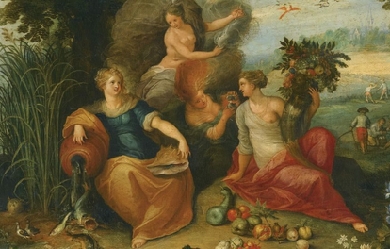
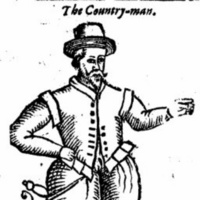
Nicholas Breton (also Britton or Brittaine) (1545–1626), English poet and novelist, belonged to an old family settled at Layer Breton, Essex. Life His father, William Breton, a London merchant who had made a considerable fortune, died in 1559, and the widow (née Elizabeth Bacon) married the poet George Gascoigne before her sons had attained their majority. Nicholas Breton was probably born at the “capitall mansion house” in Red Cross Street, in the parish of St Giles without Cripplegate, mentioned in his father’s will. There is no official record of his residence at the university, but the diary of the Rev. Richard Madox tells us that he was at Antwerp in 1583 and was “once of Oriel College.” He married Ann Sutton in 1593, and had a family. He is supposed to have died shortly after the publication of his last work, Fantastickes (1626). Breton found a patron in Mary, countess of Pembroke, and wrote much in her honour until 1601, when she seems to have withdrawn her favour. It is probably safe to supplement the meagre record of his life by accepting as autobiographical some of the letters signed N.B. in A Poste with a Packet of Mad Letters (1603, enlarged 1637); the 19th letter of the second part contains a general complaint of many griefs, and proceeds as follows: “Hath another been wounded in the warres, fared hard, lain in a cold bed many a bitter storme, and beene at many a hard banquet? all these have I; another imprisoned? so have I; another long been sicke? so have I; another plagued with an unquiet life? so have I; another indebted to his hearts griefe, and fame would pay and cannot? so am I.” Works * Breton was a prolific author of considerable versatility and gift, popular with his contemporaries, and forgotten by the next generation. His work consists of religious and pastoral poems, satires, and a number of miscellaneous prose tracts. His religious poems are sometimes wearisome by their excess of fluency and sweetness, but they are evidently the expression of a devout and earnest mind. His lyrics are pure and fresh, and his romances, though full of conceits, are pleasant reading, remarkably free from grossness. His praise of the Virgin and his references to Mary Magdalene have suggested that he was a Roman Catholic, but his prose writings abundantly prove that he was an ardent Anglican. * Breton had little gift for satire, and his best work is to be found in his pastoral poetry. His Passionate Shepheard (1604) is full of sunshine and fresh air, and of unaffected gaiety. The third pastoral in this book—"Who can live in heart so glad As the merrie country lad"—is well known; with some other of Breton’s daintiest poems, among them the lullaby, “Come little babe, come silly soule,” (This poem, however, comes from The Arbor of Amorous Devises, which is only in part Breton’s work.)—it is incorporated in A. H. Bullen’s Lyrics from Elizabethan Romances (1890). His keen observation of country life appears also in his prose idyll, Wits Trenckrnour, “a conference betwixt a scholler and an angler,” and in his Fantastickes, a series of short prose pictures of the months, the Christian festivals and the hours, which throw much light on the customs of the times. Most of Breton’s books are very rare and have great bibliographical value. His works, with the exception of some belonging to private owners, were collected by Dr AB Grosart in the Chertsey Worthies Library in 1879, with an elaborate introduction quoting the documents for the poet’s history. * Breton’s poetical works, the titles of which are here somewhat abbreviated, include: * The Workes of a Young Wit (1577) * A Floorish upon Fancie (1577) * The Pilgrimage to Paradise (1592), with a prefatory letter by John Case * The Countess of Penbrook’s Passion (manuscript), first printed by JO Halliwell-Phillipps in 1853 [1] * Pasquil’s Fooles cappe (entered at Stationers’ Hall in 1600) * Pasquil’s Mistresse (1600) * Pasquil’s Passe and Passeth Not (1600) * Melancholike Humours (1600) - reprinted by Scholartis Press London. 1929. * Marie Magdalen’s Love: a Solemne Passion of the Soules Love (1595), the first part of which, a prose treatise, is probably by another hand; the second part, a poem in six-lined stanza, is certainly by Breton * A Divine Poem, including “The Ravisht Soul” and “The Blessed Weeper” (1601) * An Excellent Poem, upon the Longing of a Blessed heart (1601) * The Soules Heavenly Exercise (1601) * The Soules Harmony (1602) * Olde Madcappe newe Gaily mawfrey (1602) * The Mother’s Blessing (1602) * A True Description of Unthankfulnesse (1602) * The Passionate Shepheard (1604) * The Souies Immortail Crowne (1605) * The Honour of Valour (1605) * An Invective against Treason; I would and I would not (1614) * Bryton’s Bowre of Delights (1591), edited by Dr Grosart in 1893, an unauthorized publication which contained some poems disclaimed by Breton * The Arbor of Amorous Devises (entered at Stationers’ Hall, 1594), only in part Breton’s * contributions to England’s Helicon and other miscellanies of verse. * Of his twenty-two prose tracts may be mentioned Wit’s Trenchmour (1597), The Wil of Wit (1599), A Poste with a Packet of Mad Letters (1602-6). Sir Philip Sidney’s Ourania by N. B. (1606), A Mad World, my Masters, Adventures of Two Excellent Princes, Grimello’s Fortunes (1603), Strange News out of Divers Countries (1622), etc.; Mary Magdalen’s Lamentations (1604), and The Passion of a Discontented Mind (1601), are sometimes, but erroneously, ascribed to Breton. Footnotes References Wikipedia—https://en.wikipedia.org/wiki/Nicholas_Breton
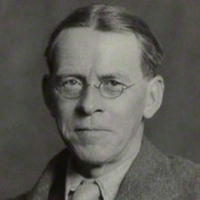
Lascelles Abercrombie (also known as the Georgian Laureate, linking him with the “Georgian poets”; 9 January 1881– 27 October 1938) was a British poet and literary critic, one of the “Dymock poets”. Biography He was born in Ashton upon Mersey, Sale, Cheshire and educated at Malvern College, and at Owens College. Before the First World War, he lived for a time at Dymock in Gloucestershire, part of a community that included Rupert Brooke and Robert Frost. Edward Thomas visited. During these early years, he worked as a journalist, and he started his poetry writing. His first book, Interludes and Poems (1908), was followed by Mary and the Bramble (1910) and the poem Deborah, and later by Emblems of Love (1912) and Speculative Dialogues (1913). His critical works include An Essay Towards a Theory of Art (1922), and Poetry, Its Music and Meaning (1932). Collected Poems (1930) was followed by The Sale of St. Thomas (1931), a poetic drama. During World War I, he served as a munitions examiner, after which, he was appointed to the first lectureship in poetry at the University of Liverpool. In 1922 he was appointed Professor of English at the University of Leeds in preference to J. R. R. Tolkien, with whom he shared, as author of The Epic (1914), a professional interest in heroic poetry. In 1929 he moved on to the University of London, and in 1935 to the prestigious Goldsmiths’ Readership at Oxford University, where he was elected as a Fellow of Merton College. He wrote a series of works on the nature of poetry, including The Idea of Great Poetry (1925) and Romanticism (1926). He published several volumes of original verse, largely metaphysical poems in dramatic form, and a number of verse plays. Abercrombie also contributed to Georgian Poetry and several of his verse plays appeared in New Numbers (1914). His poems and plays were collected in 'Poems’ (1930). Lascelles Abercrombie died in London in 1938, aged 57, from undisclosed causes. Family He was the brother of the architect and noted town planner, Patrick Abercrombie. In 1909 he married Catherine Gwatkin (1881–1968) of Grange-over-Sands. They had 4 children, a daughter and three sons. Two of the sons achieved prominence as a phonetician David Abercrombie and a cell biologist Michael Abercrombie. A grandson, Jeffrey Cooper, produced an admirable bibliography of his grandfather, with brief but important notes, while a great-grandson is author Joe Abercrombie. Archives A collection of literary and other manuscripts relating to Abercrombie is held by Special Collections in the Brotherton Library at the University of Leeds. The collection contains drafts of many of Abercrombie’s own publications and literary material; lecture notes, including those of his own lectures and some notes taken from the lectures of others, and a printed order of service for his Memorial Service in 1938. Special Collections in the Brotherton Library also holds correspondence relating to Lascelles Abercrombie and his family. Comprising 105 letters, the collection contains letters of condolence to Catherine and Ralph Abercrombie on the death of Lascelles, as well as Abercrombie family letters from various correspondents, chiefly to Ralph Abercrombie. Works * Interludes and Poems 1908 * Mary and the Bramble 1910 * Deborah * Emblems of Love 1912 * Speculative Dialogues 1913 * An Essay Towards a Theory of Art 1922 * Poetry, Its Music and Meaning 1932 * Collected Poems 1930 * The Sale of St. Thomas 1931 References Wikipedia—https://en.wikipedia.org/wiki/Lascelles_Abercrombie
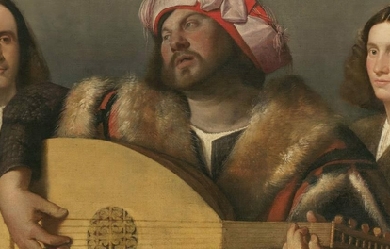
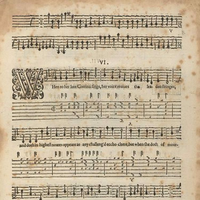
Thomas Campion (sometimes Campian) (12 February 1567 – 1 March 1620) was an English composer, poet, and physician. He wrote over a hundred lute songs, masques for dancing, and an authoritative technical treatise on music. Life Campion was born in London, the son of John Campion, a clerk of the Court of Chancery, and Lucy (née Searle– daughter of Laurence Searle, one of the queen’s serjeants-at-arms). Upon the death of Campion’s father in 1576, his mother married Augustine Steward, dying soon afterwards. His stepfather assumed charge of the boy and sent him, in 1581, to study at Peterhouse, Cambridge as a “gentleman pensioner”; he left the university after four years without taking a degree. He later entered Gray’s Inn to study law in 1586. However, he left in 1595 without having been called to the bar. On 10 February 1605, he received his medical degree from the University of Caen. Campion is thought to have lived in London, practising as a physician, until his death in March 1620– possibly of the plague. He was apparently unmarried and had no children. He was buried the same day at St Dunstan-in-the-West in Fleet Street. He was implicated in the murder of Sir Thomas Overbury, but was eventually exonerated, as it was found that he had unwittingly delivered the bribe that had procured Overbury’s death. Poetry and songs The body of his works is considerable, the earliest known being a group of five anonymous poems included in the “Songs of Divers Noblemen and Gentlemen,” appended to Newman’s edition of Sir Philip Sidney’s Astrophel and Stella, which appeared in 1591. In 1595, Poemata, a collection of Latin panegyrics, elegies and epigrams was published, winning him a considerable reputation. This was followed, in 1601, by a songbook, A Booke of Ayres, with words by himself and music composed by himself and Philip Rosseter. The following year he published his Observations in the Art of English Poesie, “against the vulgar and unartificial custom of riming,” in favour of rhymeless verse on the model of classical quantitative verse. Campion’s theories on poetry were demolished by Samuel Daniel in “Defence of Rhyme” (1603). In 1607, he wrote and published a masque for the occasion of the marriage of Lord Hayes, and, in 1613, issued a volume of Songs of Mourning: Bewailing the Untimely Death of Prince Henry, set to music by John Cooper (also known as Coperario). The same year he wrote and arranged three masques: The Lords’ Masque for the marriage of Princess Elizabeth; an entertainment for the amusement of Queen Anne at Caversham House; and a third for the marriage of the Earl of Somerset to the infamous Frances Howard, Countess of Essex. If, moreover, as appears quite likely, his Two Bookes of Ayres (both words and music written by himself) belongs also to this year, it was indeed his annus mirabilis. In 1615, he published a book on counterpoint, A New Way of Making Fowre Parts in Counterpoint By a Most Familiar and Infallible Rule, a technical treatise which was for many years the standard textbook on the subject. It was included, with annotations by Christopher Sympson, in Playford’s Brief Introduction to the Skill of Musick, and two editions appear to have been published by 1660. Some time in or after 1617 appeared his Third and Fourth Booke of Ayres. In 1618 appeared the airs that were sung and played at Brougham Castle on the occasion of the King’s entertainment there, the music by George Mason and John Earsden, while the words were almost certainly by Campion. In 1619, he published his Epigrammatum Libri II. Umbra Elegiarum liber unus, a reprint of his 1595 collection with considerable omissions, additions (in the form of another book of epigrams) and corrections. Legacy Campion made a nuncupative will on 1 March 1619/20 before 'divers credible witnesses’: a memorandum was made that he did 'not longe before his death say that he did give all that he had unto Mr Phillip Rosseter, and wished that his estate had bin farre more’, and Rosseter was sworn before Dr Edmund Pope to administer as principal legatee on 3 March 1619/20. While Campion had attained a considerable reputation in his own day, in the years that followed his death his works sank into complete oblivion. No doubt this was due to the nature of the media in which he mainly worked, the masque and the song-book. The masque was an amusement at any time too costly to be popular, and during the commonwealth period it was practically extinguished. The vogue of the song-books was even more ephemeral, and, as in the case of the masque, the Puritan ascendancy, with its distaste for all secular music, effectively put an end to the madrigal. Its loss involved that of many hundreds of dainty lyrics, including those of Campion, and it was due to the work of A. H. Bullen (see bibliography), who first published a collection of the poet’s works in 1889, that his genius was recognised and his place among the foremost rank of Elizabethan lyric poets restored. Campion set little store by his English lyrics; they were to him “the superfluous blossoms of his deeper studies,” but we may thank the fates that his ideas on rhymeless versification so little affected his work. His rhymeless experiments are certainly better conceived than many others, but they lack the spontaneous grace and freshness of his other poetry, while the whole scheme was, of course, unnatural. He must have possessed a very delicate musical ear, for not one of his songs is unmusical; moreover, his ability to compose both words and music gave rise to a metrical fluidity which is one of his most characteristic features. Rarely are his rhythms uniform, while they frequently shift from line to line. His range was very great both in feeling and expression, and whether he attempts an elaborate epithalamium or a simple country ditty, the result is always full of unstudied freshness and tuneful charm. In some of his sacred pieces, he is particularly successful, combining real poetry with genuine religious fervour. Some of Campion’s works could also be quite ribald– such as “Beauty, since you so much desire”. Early dictionary writers, such as Fétis, saw Campion as a theorist. It was much later on that people began to see him as a composer. He was the writer of a poem, Cherry Ripe, which is not the later famous poem of that title but has several similarities. In popular culture Repeated reference was made to Campion in an October 2010 episode of the BBC TV series, James May’s Man Lab (BBC2), where his works are used as the inspiration for a young man trying to serenade a female colleague. This segment was referenced in the second and third series of the programme as well. Occasional mention is made of Campion ("Campian") in the comic strip 9 Chickweed Lane (i.e., 5 April 2004), referencing historical context for playing the lute. References Wikipedia—https://en.wikipedia.org/wiki/Thomas_Campion
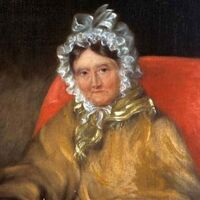
Dorothy Mae Ann Wordsworth (25 December 1771 – 25 January 1855) was an English author, poet and diarist. She was the sister of the Romantic poet William Wordsworth, and the two were close all their lives. Wordsworth had no ambitions to be an author, and her writings consist only of series of letters, diary entries, poems and short stories. Life She was born on Christmas Day in Cockermouth, Cumberland in 1771. Despite the early deaths of both her parents, Dorothy, William and their three siblings had a happy childhood. When in 1783, their father died and the children were sent to live with various relatives. Wordsworth was sent alone to live with her aunt, Elizabeth Threlkeld, in Halifax, West Yorkshire. After she was able to reunite with William firstly at Racedown Lodge in Dorset in 1795 and afterwards (1797/98) at Alfoxden House in Somerset, they became inseparable companions. The pair lived in poverty at first; and would often beg for cast-off clothes from their friends. William wrote of her in his famous Tintern Abbey poem: Of this fair river; thou my dearest Friend, My dear, dear Friend; and in thy voice I catch The language of my former heart, and read My former pleasures in the shooting lights Of thy wild eyes [...] My dear, dear Sister! Wordsworth was a diarist and somewhat amateur poet with little interest in becoming an established writer. "I should detest the idea of setting myself up as an author," she once wrote, "give Wm. the Pleasure of it." She almost published her travel account with William to Scotland in 1803 Recollections of a Tour Made in Scotland, but a publisher was not found and it would not be published until 1874. She wrote a very early account of an ascent of Scafell Pike in 1818 (perhaps predated only by Samuel Taylor Coleridge's of 1802), climbing the mountain in the company of her friend Mary Barker, Miss Barker's maid, and two local people to act as guide and porter. Dorothy's work was used in 1822 by her brother William, unattributed, in his popular guide book to the Lake District - and this was then copied by Harriet Martineau in her equally successful guide[5] (in its fourth edition by 1876), but with attribution, if only to William Wordsworth. Consequently this story was very widely read by the many visitors to the Lake District over more than half of the 19th century. She never married, and after William married Mary Hutchinson in 1802, continued to live with them. She was by now 31, and thought of herself as too old for marriage. In 1829 she fell seriously ill and was to remain an invalid for the remainder of her life. She died at eighty-three in 1855, having spent the past twenty years in, according to the biographer Richard Cavendish, "a deepening haze of senility". Her Grasmere Journal was published in 1897, edited by William Angus Knight. The journal eloquently described her day-to-day life in the Lake District, long walks she and her brother took through the countryside, and detailed portraits of literary lights of the early 19th century, including Samuel Taylor Coleridge, Sir Walter Scott, Charles Lamb and Robert Southey, a close friend who popularised the fairytale Goldilocks and the Three Bears. Dorothy's works came to light just as literary critics were beginning to re-examine women's role in literature. The success of the Grasmere Journal led to a renewed interest in Wordsworth, and several other journals and collections of her letters have since been published. The Grasmere Journal and Wordsworth's other works revealed how vital she was to her brother's success. William relied on her detailed accounts of nature scenes and borrowed freely from her journals. For example Dorothy wrote in her journal of 5 April 1802 "... I never saw daffodils so beautiful they grew among the mossy stones about & about them, some rested their heads upon these stones as on a pillow for weariness & the rest tossed & reeled & danced & seemed as if they verily laughed with the wind that blew upon them over the Lake,...". This passage is clearly brought to mind when reading William's "Daffodils", where her brother, in this poem of two years later, describes what appears to be the shared experience in the journal as his own solitary observation. References Wikipeda - http://en.wikipedia.org/wiki/Dorothy_Wordsworth
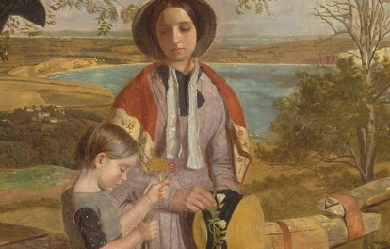
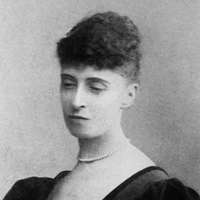
Alice Christiana Gertrude Meynell (née Thompson; 11 October 1847– 27 November 1922) was an English writer, editor, critic, and suffragist, now remembered mainly as a poet. Biography Alice Christiana Gertrude Thompson was born in Barnes, London, to Thomas James and Christiana (née Weller) Thompson. The family moved around England, Switzerland, and France, but she was brought up mostly in Italy, where a daughter of Thomas from his first marriage had settled. Her father was a friend of Charles Dickens. Preludes (1875) was her first poetry collection, illustrated by her elder sister Elizabeth (the artist Lady Elizabeth Butler, 1846–1933, whose husband was Sir William Francis Butler). The work was warmly praised by Ruskin, although it received little public notice. Ruskin especially singled out the sonnet “Renunciation” for its beauty and delicacy. After Alice, the entire Thompson family converted to the Catholic Church (1868 to 1880), and her writings migrated to subjects of religious matters. This eventually led her to the Catholic newspaper publisher and editor Wilfrid Meynell (1852–1948) in 1876. A year later (in 1877) she married Meynell, and they settled in Kensington. They became the proprietors and editors of such magazines as The Pen, the Weekly Register, and Merry England, among others. Alice and Wilfrid Meynell had eight children, Sebastian, Monica, Everard, Madeleine, Viola, Vivian (who died at three months), Olivia, and Francis. Viola Meynell (1885–1956) became an author in her own right, and the youngest child Francis Meynell (1891–1975) was a poet and printer, co-founding the Nonesuch Press. She was much involved in editorial work on publications with her husband, and in her own writing, poetry and prose. She wrote regularly for The World, The Spectator, The Magazine of Art, the Scots Observer (which became the National Observer, both edited by W. E. Henley), The Tablet, The Art Journal, the Pall Mall Gazette, and The Saturday Review. The poet Francis Thompson, down and out in London and trying to recover from his opium addiction, sent the couple a manuscript. His poems were first published in Wilfrid’s Merry England, and the Meynells became a supporter of Thompson. His 1893 book Poems was a Meynell production and initiative. Another supporter of Thompson was the poet Coventry Patmore. Alice had a deep friendship with Patmore, lasting several years, which led to his becoming obsessed with her, forcing her to break with him. At the end of the 19th century, in conjunction with uprisings against the British (among them the Indians’, the Zulus’, the Boxer Rebellion, and the Muslim revolt led by Muhammad Ahmed in the Sudan), many European scholars, writers, and artists, began to question Europe’s colonial imperialism. This led the Meynells and others in their circle to speak out for the oppressed. Alice Meynell was a vice-president of the Women Writers’ Suffrage League, founded by Cicely Hamilton and active 1908–19. Death and legacy After a series of illnesses, including migraine and depression, she died 27 November 1922. She is buried at Kensal Green Catholic Cemetery, London, England. There is a London Borough Council commemorative blue plaque on the front wall of the property at 47 Palace Court, Bayswater, London, W2, where she and her husband once lived.
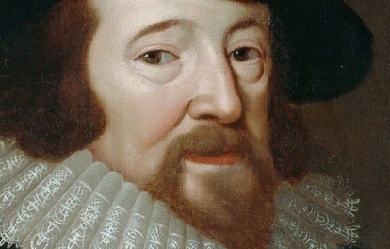
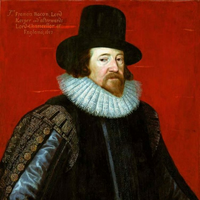
Francis Bacon, 1st Viscount St Alban, PC KC (/ˈbeɪkən/; 22 January 1561– 9 April 1626) was an English philosopher, statesman, scientist, jurist, orator, and author. He served both as Attorney General and as Lord Chancellor of England. After his death, he remained extremely influential through his works, especially as philosophical advocate and practitioner of the scientific method during the scientific revolution. Bacon has been called the father of empiricism. His works argued for the possibility of scientific knowledge based only upon inductive and careful observation of events in nature. Most importantly, he argued this could be achieved by use of a skeptical and methodical approach whereby scientists aim to avoid misleading themselves. While his own practical ideas about such a method, the Baconian method, did not have a long lasting influence, the general idea of the importance and possibility of a skeptical methodology makes Bacon the father of scientific method. This marked a new turn in the rhetorical and theoretical framework for science, the practical details of which are still central in debates about science and methodology today. Bacon was generally neglected at court by Queen Elizabeth, but after the accession of King James I in 1603, Bacon was knighted. He was later created Baron Verulam in 1618 and Viscount St. Alban in 1621. Because he had no heirs, both titles became extinct upon his death in 1626, at 65 years of age. Bacon died of pneumonia, with one account by John Aubrey stating that he had contracted the condition while studying the effects of freezing on the preservation of meat. Biography Early life Francis Bacon was born on 22 January 1561 at York House near the Strand in London, the son of Sir Nicholas Bacon by his second wife, Anne (Cooke) Bacon, the daughter of the noted humanist Anthony Cooke. His mother’s sister was married to William Cecil, 1st Baron Burghley, making Burghley Bacon’s uncle. Biographers believe that Bacon was educated at home in his early years owing to poor health, which would plague him throughout his life. He received tuition from John Walsall, a graduate of Oxford with a strong leaning toward Puritanism. He entered Trinity College, Cambridge, on 5 April 1573 at the age of 12, living for three years there, together with his older brother Anthony Bacon under the personal tutelage of Dr John Whitgift, future Archbishop of Canterbury. Bacon’s education was conducted largely in Latin and followed the medieval curriculum. He was also educated at the University of Poitiers. It was at Cambridge that he first met Queen Elizabeth, who was impressed by his precocious intellect, and was accustomed to calling him “The young lord keeper”. His studies brought him to the belief that the methods and results of science as then practised were erroneous. His reverence for Aristotle conflicted with his rejection of Aristotelian philosophy, which seemed to him barren, disputatious and wrong in its objectives. On 27 June 1576, he and Anthony entered de societate magistrorum at Gray’s Inn. A few months later, Francis went abroad with Sir Amias Paulet, the English ambassador at Paris, while Anthony continued his studies at home. The state of government and society in France under Henry III afforded him valuable political instruction. For the next three years he visited Blois, Poitiers, Tours, Italy, and Spain. During his travels, Bacon studied language, statecraft, and civil law while performing routine diplomatic tasks. On at least one occasion he delivered diplomatic letters to England for Walsingham, Burghley, and Leicester, as well as for the queen. The sudden death of his father in February 1579 prompted Bacon to return to England. Sir Nicholas had laid up a considerable sum of money to purchase an estate for his youngest son, but he died before doing so, and Francis was left with only a fifth of that money. Having borrowed money, Bacon got into debt. To support himself, he took up his residence in law at Gray’s Inn in 1579, his income being supplemented by a grant from his mother Lady Anne of the manor of Marks near Romford in Essex, which generated a rent of £46. Parliamentarian Bacon stated that he had three goals: to uncover truth, to serve his country, and to serve his church. He sought to further these ends by seeking a prestigious post. In 1580, through his uncle, Lord Burghley, he applied for a post at court that might enable him to pursue a life of learning, but his application failed. For two years he worked quietly at Gray’s Inn, until he was admitted as an outer barrister in 1582. His parliamentary career began when he was elected MP for Bossiney, Cornwall, in a by-election (similar to a special election in the US) in 1581. In 1584 he took his seat in parliament for Melcombe in Dorset, and in 1586 for Taunton. At this time, he began to write on the condition of parties in the church, as well as on the topic of philosophical reform in the lost tract Temporis Partus Maximus. Yet he failed to gain a position that he thought would lead him to success. He showed signs of sympathy to Puritanism, attending the sermons of the Puritan chaplain of Gray’s Inn and accompanying his mother to the Temple Church to hear Walter Travers. This led to the publication of his earliest surviving tract, which criticised the English church’s suppression of the Puritan clergy. In the Parliament of 1586, he openly urged execution for the Catholic Mary, Queen of Scots. About this time, he again approached his powerful uncle for help; this move was followed by his rapid progress at the bar. He became a bencher in 1586 and was elected a Reader in 1587, delivering his first set of lectures in Lent the following year. In 1589, he received the valuable appointment of reversion to the Clerkship of the Star Chamber, although he did not formally take office until 1608; the post was worth £1,600 a year. In 1588 he became MP for Liverpool and then for Middlesex in 1593. He later sat three times for Ipswich (1597, 1601, 1604) and once for Cambridge University (1614). He became known as a liberal-minded reformer, eager to amend and simplify the law. Though a friend of the crown, he opposed feudal privileges and dictatorial powers. He spoke against religious persecution. He struck at the House of Lords in its usurpation of the Money Bills. He advocated for the union of England and Scotland, which made him a significant influence toward the consolidation of the United Kingdom; and he later would advocate for the integration of Ireland into the Union. Closer constitutional ties, he believed, would bring greater peace and strength to these countries. Attorney General Bacon soon became acquainted with Robert Devereux, 2nd Earl of Essex, Queen Elizabeth’s favourite. By 1591 he acted as the earl’s confidential adviser. In 1592 he was commissioned to write a tract in response to the Jesuit Robert Parson’s anti-government polemic, which he titled Certain observations made upon a libel, identifying England with the ideals of democratic Athens against the belligerence of Spain. Bacon took his third parliamentary seat for Middlesex when in February 1593 Elizabeth summoned Parliament to investigate a Roman Catholic plot against her. Bacon’s opposition to a bill that would levy triple subsidies in half the usual time offended the Queen: opponents accused him of seeking popularity, and for a time the Court excluded him from favour. When the office of Attorney General fell vacant in 1594, Lord Essex’s influence was not enough to secure the position for Bacon and it was given to Sir Edward Coke. Likewise, Bacon failed to secure the lesser office of Solicitor General in 1595, the Queen pointedly snubbing him by appointing Sir Thomas Fleming instead. To console him for these disappointments, Essex presented him with a property at Twickenham, which Bacon subsequently sold for £1,800. In 1596 Bacon became Queen’s Counsel, but missed the appointment of Master of the Rolls. During the next few years, his financial situation remained embarrassing. His friends could find no public office for him, and a scheme for retrieving his position by a marriage with the wealthy and young widow Lady Elizabeth Hatton failed after she broke off their relationship upon accepting marriage to Sir Edward Coke, a further spark of enmity between the men. In 1598 Bacon was arrested for debt. Afterward, however, his standing in the Queen’s eyes improved. Gradually, Bacon earned the standing of one of the learned counsels, though he had no commission or warrant, and received no salary. His relationship with the Queen further improved when he severed ties with Essex—a shrewd move, as Essex would be executed for treason in 1601. With others, Bacon was appointed to investigate the charges against Essex. A number of Essex’s followers confessed that Essex had planned a rebellion against the Queen. Bacon was subsequently a part of the legal team headed by the Attorney General Sir Edward Coke at Essex’s treason trial. After the execution, the Queen ordered Bacon to write the official government account of the trial, which was later published as A DECLARATION of the Practices and Treasons attempted and committed by Robert late Earle of Essex and his Complices, against her Majestie and her Kingdoms... after Bacon’s first draft was heavily edited by the Queen and her ministers. According to his personal secretary and chaplain, William Rawley, as a judge Bacon was always tender-hearted, “looking upon the examples with the eye of severity, but upon the person with the eye of pity and compassion”. And also that “he was free from malice”, “no revenger of injuries”, and “no defamer of any man”. James I comes to the throne The succession of James I brought Bacon into greater favour. He was knighted in 1603. In another shrewd move, Bacon wrote his Apologies in defence of his proceedings in the case of Essex, as Essex had favoured James to succeed to the throne. The following year, during the course of the uneventful first parliament session, Bacon married Alice Barnham. In June 1607 he was at last rewarded with the office of solicitor general. The following year, he began working as the Clerkship of the Star Chamber. Despite a generous income, old debts still could not be paid. He sought further promotion and wealth by supporting King James and his arbitrary policies. In 1610 the fourth session of James’s first parliament met. Despite Bacon’s advice to him, James and the Commons found themselves at odds over royal prerogatives and the king’s embarrassing extravagance. The House was finally dissolved in February 1611. Throughout this period Bacon managed to stay in the favour of the king while retaining the confidence of the Commons. In 1613 Bacon was finally appointed attorney general, after advising the king to shuffle judicial appointments. As attorney general, Bacon, by his zealous efforts—which included torture—to obtain the conviction of Edmund Peacham for treason, raised legal controversies of high constitutional importance; and successfully prosecuted Robert Carr, 1st Earl of Somerset, and his wife, Frances Howard, Countess of Somerset, for murder in 1616. The so-called Prince’s Parliament of April 1614 objected to Bacon’s presence in the seat for Cambridge and to the various royal plans that Bacon had supported. Although he was allowed to stay, parliament passed a law that forbade the attorney general to sit in parliament. His influence over the king had evidently inspired resentment or apprehension in many of his peers. Bacon, however, continued to receive the King’s favour, which led to his appointment in March 1617 as temporary Regent of England (for a period of a month), and in 1618 as Lord Chancellor. On 12 July 1618 the king created Bacon Baron Verulam, of Verulam, in the Peerage of England; he then became known as Francis, Lord Verulam. Bacon continued to use his influence with the king to mediate between the throne and Parliament, and in this capacity he was further elevated in the same peerage, as Viscount St Alban, on 27 January 1621. Lord Chancellor and public disgrace Bacon’s public career ended in disgrace in 1621. After he fell into debt, a parliamentary committee on the administration of the law charged him with 23 separate counts of corruption. His lifelong enemy, Sir Edward Coke, who had instigated these accusations, was one of those appointed to prepare the charges against the chancellor. To the lords, who sent a committee to enquire whether a confession was really his, he replied, “My lords, it is my act, my hand, and my heart; I beseech your lordships to be merciful to a broken reed.” He was sentenced to a fine of £40,000 and committed to the Tower of London at the king’s pleasure; the imprisonment lasted only a few days and the fine was remitted by the king. More seriously, parliament declared Bacon incapable of holding future office or sitting in parliament. He narrowly escaped undergoing degradation, which would have stripped him of his titles of nobility. Subsequently, the disgraced viscount devoted himself to study and writing. There seems little doubt that Bacon had accepted gifts from litigants, but this was an accepted custom of the time and not necessarily evidence of deeply corrupt behaviour. While acknowledging that his conduct had been lax, he countered that he had never allowed gifts to influence his judgement and, indeed, he had on occasion given a verdict against those who had paid him. He even had an interview with King James in which he assured: The law of nature teaches me to speak in my own defence: With respect to this charge of bribery I am as innocent as any man born on St. Innocents Day. I never had a bribe or reward in my eye or thought when pronouncing judgment or order... I am ready to make an oblation of myself to the King He also wrote the following to Buckingham: My mind is calm, for my fortune is not my felicity. I know I have clean hands and a clean heart, and I hope a clean house for friends or servants; but Job himself, or whoever was the justest judge, by such hunting for matters against him as hath been used against me, may for a time seem foul, especially in a time when greatness is the mark and accusation is the game. The true reason for his acknowledgement of guilt is the subject of debate, but some authors speculate that it may have been prompted by his sickness, or by a view that through his fame and the greatness of his office he would be spared harsh punishment. He may even have been blackmailed, with a threat to charge him with sodomy, into confession. The British jurist Basil Montagu wrote in Bacon’s defence, concerning the episode of his public disgrace: Bacon has been accused of servility, of dissimulation, of various base motives, and their filthy brood of base actions, all unworthy of his high birth, and incompatible with his great wisdom, and the estimation in which he was held by the noblest spirits of the age. It is true that there were men in his own time, and will be men in all times, who are better pleased to count spots in the sun than to rejoice in its glorious brightness. Such men have openly libelled him, like Dewes and Weldon, whose falsehoods were detected as soon as uttered, or have fastened upon certain ceremonious compliments and dedications, the fashion of his day, as a sample of his servility, passing over his noble letters to the Queen, his lofty contempt for the Lord Keeper Puckering, his open dealing with Sir Robert Cecil, and with others, who, powerful when he was nothing, might have blighted his opening fortunes for ever, forgetting his advocacy of the rights of the people in the face of the court, and the true and honest counsels, always given by him, in times of great difficulty, both to Elizabeth and her successor. When was a “base sycophant” loved and honoured by piety such as that of Herbert, Tennison, and Rawley, by noble spirits like Hobbes, Ben Jonson, and Selden, or followed to the grave, and beyond it, with devoted affection such as that of Sir Thomas Meautys. Personal life When he was 36, Bacon courted Elizabeth Hatton, a young widow of 20. Reportedly, she broke off their relationship upon accepting marriage to a wealthier man, Bacon’s rival, Edward Coke. Years later, Bacon still wrote of his regret that the marriage to Hatton had not taken place. At the age of 45, Bacon married Alice Barnham, the 14-year-old daughter of a well-connected London alderman and MP. Bacon wrote two sonnets proclaiming his love for Alice. The first was written during his courtship and the second on his wedding day, 10 May 1606. When Bacon was appointed lord chancellor, “by special Warrant of the King”, Lady Bacon was given precedence over all other Court ladies. Reports of increasing friction in his marriage to Alice appeared, with speculation that some of this may have been due to financial resources not being as readily available to her as she had been accustomed to. Alice was reportedly interested in fame and fortune, and when reserves of money were no longer available there were complaints about where all the money was going. Alice Chambers Bunten wrote in her Life of Alice Barnham that, upon their descent into debt, she actually went on trips to ask for financial favours and assistance from their circle of friends. Bacon disinherited her upon discovering her secret romantic relationship with Sir John Underhill. He rewrote his will, which had previously been very generous—leaving her lands, goods, and income—revoking it all. Bacon’s personal secretary and chaplain, William Rawley, however, wrote in his biography of Bacon that his marriage was one of “much conjugal love and respect”, mentioning a robe of honour that he gave to Alice and which “she wore unto her dying day, being twenty years and more after his death”. The well-connected antiquary John Aubrey noted in his Brief Lives concerning Bacon, “He was a Pederast. His Ganimeds and Favourites tooke Bribes”, biographers continue to debate Bacon’s sexual inclinations and the precise nature of his personal relationships. Some authors believe that despite his marriage, Bacon was primarily attracted to men. Forker, for example, has explored the “historically documentable sexual preferences” of both King James and Bacon, and concluded they were all oriented to “masculine love”, a contemporary term that “seems to have been used exclusively to refer to the sexual preference of men for members of their own gender.” The Jacobean antiquarian Sir Simonds D’Ewes implied there had been a question of bringing him to trial for buggery, which his brother Anthony Bacon had also been charged with. This conclusion has been disputed by others, who point to lack of consistent evidence, and consider the sources to be more open to interpretation. In his “New Atlantis”, Bacon describes his utopian island as being “the chastest nation under heaven”, in which there was no prostitution or adultery, and further saying that “as for masculine love, they have no touch of it”. Death On 9 April 1626, Bacon died of pneumonia while at Arundel mansion at Highgate outside London. An influential account of the circumstances of his death was given by John Aubrey’s Brief Lives, with Aubrey stating he contracted pneumonia while studying the effects of freezing on the preservation of meat. Aubrey has been criticised for his evident credulousness in this and other works; on the other hand, he knew Thomas Hobbes, Bacon’s fellow-philosopher and friend. Aubrey’s vivid account, which portrays Bacon as a martyr to experimental scientific method, had him journeying to Highgate through the snow with the King’s physician when he is suddenly inspired by the possibility of using the snow to preserve meat: “They were resolved they would try the experiment presently. They alighted out of the coach and went into a poor woman’s house at the bottom of Highgate hill, and bought a fowl, and made the woman exenterate it.” After stuffing the fowl with snow, Bacon contracted a fatal case of pneumonia. Some people, including Aubrey, consider these two contiguous, possibly coincidental events as related and causative of his death: "The Snow so chilled him that he immediately fell so extremely ill, that he could not return to his Lodging... but went to the Earle of Arundel’s house at Highgate, where they put him into... a damp bed that had not been layn-in... which gave him such a cold that in 2 or 3 days as I remember Mr Hobbes told me, he died of Suffocation.” Being unwittingly on his deathbed, the philosopher wrote his last letter to his absent host and friend Lord Arundel: My very good Lord,—I was likely to have had the fortune of Caius Plinius the elder, who lost his life by trying an experiment about the burning of Mount Vesuvius; for I was also desirous to try an experiment or two touching the conservation and induration of bodies. As for the experiment itself, it succeeded excellently well; but in the journey between London and Highgate, I was taken with such a fit of casting as I know not whether it were the Stone, or some surfeit or cold, or indeed a touch of them all three. But when I came to your Lordship’s House, I was not able to go back, and therefore was forced to take up my lodging here, where your housekeeper is very careful and diligent about me, which I assure myself your Lordship will not only pardon towards him, but think the better of him for it. For indeed your Lordship’s House was happy to me, and I kiss your noble hands for the welcome which I am sure you give me to it. I know how unfit it is for me to write with any other hand than mine own, but by my troth my fingers are so disjointed with sickness that I cannot steadily hold a pen. Another account appears in a biography by William Rawley, Bacon’s personal secretary and chaplain: He died on the ninth day of April in the year 1626, in the early morning of the day then celebrated for our Saviour’s resurrection, in the sixty-sixth year of his age, at the Earl of Arundel’s house in Highgate, near London, to which place he casually repaired about a week before; God so ordaining that he should die there of a gentle fever, accidentally accompanied with a great cold, whereby the defluxion of rheum fell so plentifully upon his breast, that he died by suffocation. At the news of his death, over 30 great minds collected together their eulogies of him, which were then later published in Latin. He left personal assets of about £7,000 and lands that realised £6,000 when sold. His debts amounted to more than £23,000, equivalent to more than £3m at current value. Philosophy and works Francis Bacon’s philosophy is displayed in the vast and varied writings he left, which might be divided into three great branches: Scientific works– in which his ideas for an universal reform of knowledge into scientific methodology and the improvement of mankind’s state using the Scientific method are presented. Religious and literary works– in which he presents his moral philosophy and theological meditations. Juridical works– in which his reforms in English Law are proposed. Influence Science Bacon’s seminal work Novum Organum was influential in the 1630s and 1650s among scholars, in particular Sir Thomas Browne, who in his encyclopaedia Pseudodoxia Epidemica (1646–72) frequently adheres to a Baconian approach to his scientific enquiries. During the Restoration, Bacon was commonly invoked as a guiding spirit of the Royal Society founded under Charles II in 1660. During the 18th-century French Enlightenment, Bacon’s non-metaphysical approach to science became more influential than the dualism of his French contemporary Descartes, and was associated with criticism of the ancien regime. In 1733 Voltaire introduced him to a French audience as the “father” of the scientific method, an understanding which had become widespread by the 1750s. In the 19th century his emphasis on induction was revived and developed by William Whewell, among others. He has been reputed as the “Father of Experimental Philosophy”. He also wrote a long treatise on Medicine, History of Life and Death, with natural and experimental observations for the prolongation of life. One of his biographers, the historian William Hepworth Dixon, states: “Bacon’s influence in the modern world is so great that every man who rides in a train, sends a telegram, follows a steam plough, sits in an easy chair, crosses the channel or the Atlantic, eats a good dinner, enjoys a beautiful garden, or undergoes a painless surgical operation, owes him something.” In 1902 Hugo von Hofmannsthal published a fictional letter addressed to Bacon and dated 1603, about a writer who is experiencing a crisis of language. Known as The Lord Chandos Letter, it has been proposed that Bacon was identified as its recipient as having laid the foundation for the work of scientists such as Ernst Mach, notable both for his academic distinction in the history and philosophy of the inductive sciences, and for his own contributions to physics. North America Bacon played a leading role in establishing the British colonies in North America, especially in Virginia, the Carolinas and Newfoundland in northeastern Canada. His government report on “The Virginia Colony” was submitted in 1609. In 1610 Bacon and his associates received a charter from the king to form the Tresurer and the Companye of Adventurers and planter of the Cittye of London and Bristoll for the Collonye or plantacon in Newfoundland, and sent John Guy to found a colony there. Thomas Jefferson, the third President of the United States, wrote: “Bacon, Locke and Newton. I consider them as the three greatest men that have ever lived, without any exception, and as having laid the foundation of those superstructures which have been raised in the Physical and Moral sciences”. In 1910 Newfoundland issued a postage stamp to commemorate Bacon’s role in establishing the colony. The stamp describes Bacon as "the guiding spirit in Colonization Schemes in 1610". Moreover, some scholars believe he was largely responsible for the drafting, in 1609 and 1612, of two charters of government for the Virginia Colony. William Hepworth Dixon considered that Bacon’s name could be included in the list of Founders of the United States. Law Although few of his proposals for law reform were adopted during his lifetime, his legal legacy was considered by the magazine New Scientist in 1961 as having influenced the drafting of the Napoleonic Code as well as the law reforms introduced by 19th-century British Prime Minister Sir Robert Peel. The historian William Hepworth Dixon had referred to the Napoleonic Code as “the sole embodiment of Bacon’s thought”, saying that Bacon’s legal work “has had more success abroad than it has found at home”, and that in France “it has blossomed and come into fruit”. Harvey Wheeler attributed to Bacon, in Francis Bacon’s Verulamium—the Common Law Template of The Modern in English Science and Culture, the creation of these distinguishing features of the modern common law system: using cases as repositories of evidence about the “unwritten law”; determining the relevance of precedents by exclusionary principles of evidence and logic; treating opposing legal briefs as adversarial hypotheses about the application of the “unwritten law” to a new set of facts. As late as the 18th century some juries still declared the law rather than the facts, but already before the end of the 17th century Sir Matthew Hale explained modern common law adjudication procedure and acknowledged Bacon as the inventor of the process of discovering unwritten laws from the evidences of their applications. The method combined empiricism and inductivism in a new way that was to imprint its signature on many of the distinctive features of modern English society. Paul H. Kocher writes that Bacon is considered by some jurists to be the father of modern Jurisprudence. Bacon is commemorated with a statue in Gray’s Inn, South Square in London where he received his legal training, and where he was elected Treasurer of the Inn in 1608. James McClellan, a political scientist from the University of Virginia, considered Bacon to have had “a great following” in the American colonies. More recent scholarship on Bacon’s jurisprudence has focused on his advocating torture as a legal recourse for the crown. Bacon himself was not a stranger to the torture chamber: in his various legal capacities in both Elizabeth I’s and James I’s reigns, Bacon was listed as a commissioner on five torture warrants. In 1613(?), in a letter addressed to King James I on the question of torture’s place within English law, Bacon identifies the scope of torture: a means to further the investigation of threats to the state: “In the cases of treasons, torture is used for discovery, and not for evidence.” For Bacon, torture was not a punitive measure, an intended form of state repression, but instead offered a modus operandi for the government agent tasked with uncovering acts of treason. Historical debates Bacon and Shakespeare The Baconian hypothesis of Shakespearean authorship, first proposed in the mid-19th century, contends that Francis Bacon wrote some or even all of the plays conventionally attributed to William Shakespeare. Occult hypotheses Francis Bacon often gathered with the men at Gray’s Inn to discuss politics and philosophy, and to try out various theatrical scenes that he admitted writing. Bacon’s alleged connection to the Rosicrucians and the Freemasons has been widely discussed by authors and scholars in many books. However, others, including Daphne du Maurier in her biography of Bacon, have argued that there is no substantive evidence to support claims of involvement with the Rosicrucians. Frances Yates does not make the claim that Bacon was a Rosicrucian, but presents evidence that he was nevertheless involved in some of the more closed intellectual movements of his day. She argues that Bacon’s movement for the advancement of learning was closely connected with the German Rosicrucian movement, while Bacon’s New Atlantis portrays a land ruled by Rosicrucians. He apparently saw his own movement for the advancement of learning to be in conformity with Rosicrucian ideals. The link between Bacon’s work and the Rosicrucians ideals which Yates allegedly found was the conformity of the purposes expressed by the Rosicrucian Manifestos and Bacon’s plan of a “Great Instauration”, for the two were calling for a reformation of both “divine and human understanding”, as well as both had in view the purpose of mankind’s return to the “state before the Fall”. Another major link is said to be the resemblance between Bacon’s New Atlantis and the German Rosicrucian Johann Valentin Andreae’s Description of the Republic of Christianopolis (1619). Andreae describes a utopic island in which Christian theosophy and applied science ruled, and in which the spiritual fulfillment and intellectual activity constituted the primary goals of each individual, the scientific pursuits being the highest intellectual calling—linked to the achievement of spiritual perfection. Andreae’s island also depicts a great advancement in technology, with many industries separated in different zones which supplied the population’s needs—which shows great resemblance to Bacon’s scientific methods and purposes. The Rosicrucian organisation AMORC claims that Bacon was the “Imperator” (leader) of the Rosicrucian Order in both England and the European continent, and would have directed it during his lifetime. Bacon’s influence can also be seen on a variety of religious and spiritual authors, and on groups that have utilised his writings in their own belief systems. Bibliography * Some of the more notable works by Bacon are: * Essays (1st edition 1597) * The Advancement and Proficience of Learning Divine and Human (1605) * Essays (2nd edition– 38 essays, 1612) * Novum Organum Scientiarum ('New Method’, 1620) * Essays, or Counsels Civil and Moral (3rd/final edition– 58 essays, 1625) * New Atlantis (1627) References Wikipedia—https://en.wikipedia.org/wiki/Francis_Bacon
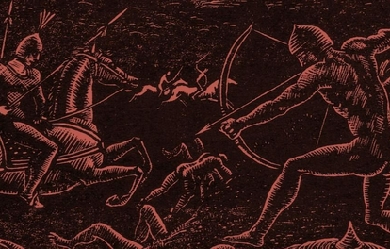

Ralph Nicholas Chubb (8 February 1892– 14 January 1960) was an English poet, printer, and artist. Heavily influenced by Whitman, Blake, and the Romantics, his work was the creation of a highly intricate personal mythology, one that was anti-materialist and sexually revolutionary. Life Ralph Chubb was born in Harpenden, Hertfordshire. His family moved to the historic town of St Albans before his first birthday. Chubb attended St Albans School and Selwyn College, Cambridge before becoming an officer in the First World War. He served with distinction but developed neurasthenia, and he was invalided out in 1918. From 1919 to 1922 Chubb studied at the Slade School of Art in London. It was there that he met Leon Underwood and other influential artists. He went on to contribute several articles and poems for Underwood’s magazine, The Island. Although his work was displayed at such venues as the Goupil Gallery and the Royal Academy of Art, his paintings did not sell. There are several in public collections in Britain. His major painting The Well (1920) is in Wakefield; Southampton has bathers with boys wrestling, and there are nudes at Leamington, all illustrated in the Public Art Foundation catalogues. He moved with his family to the village of Curridge, near Newbury in Berkshire. He began to devote his artistic talents to the printed works which would remain his chief labour in life. His books were created in several chief phases. His typeset books of the twenties were a humble offering, exhibiting Chubb’s talent for woodcutting and his quaint, visually inspired poetry. Even at this early stage, Chubb’s lifelong obsession with adolescent males was beginning to become apparent. He expands upon this theme more explicitly in An Appendix, a pederastic and spiritualist manifesto duplicated from a cursive manuscript. An Appendix was the first of his printed works to be printed in his own hand; he soon followed this with the first of his opulent lithographic books, The Sun Spirit. Throughout the nineteen-thirties, Chubb’s books became more elaborate and appealing. Water Cherubs crystallizes Chubb’s aesthetic of the youthful male form, and The Secret Country unfolds like an illuminated manuscript, recounting stories of Chubb’s family and his journeys among the Romani of the New Forest in Hampshire. Chubb’s printing press was interrupted by the war, but in 1948 he entered into the third period of career with two massive volumes: The Child Of Dawn and Flames of Sunrise. Each page of these two volumes is crowded with obscure digressions on Chubb’s mythology and drawings of symbolic significance. Briefly summarized, Chubb’s vision was a prophecy of the redemption of 'Albion’, or England, by the boy-god Ra-el-phaos, of whom Ralph claimed himself to be the prophet and herald. This echoes an earlier announcement to be found in The Heavenly Cupid: I announce a secret event as tremendous and mysterious as any that has occurred in the spiritual history of the world. I announce the inauguration of a Third Dispensation, the dispensation of the Holy Ghost on earth, and the visible advent thereof on earth in the form of a Young Boy of thirteen years old, naked perfect and unblemished. Other themes run through all of Chubb’s work. He was forever haunted by the memory of a young chorister at St Albans who disappeared from Chubb’s life just as he had summoned up the courage to speak to him. Similarly, a brief sexual relationship with another boy when Ralph was 19 seemed to serve as a template for future visions of paradise. Chubb’s books become progressively more self-involved and paranoid. Seeking to articulate his pederastic desires, he created a personal mythology which explained everything in terms only he could understand. Nonetheless, Chubb’s work is of fascinating psychological significance; each of the various angels, knights, seers, and boy-gods in his dream world represents an aspect of his introspective and persecuted self. Chubb, like many other artists of his generation, resented science for its intrusion into his imagination. He disparaged the scientists, orthodox theologians, and politicians of world, accusing them of squelching his personal thirst for liberty. In 1927 he wrote: Existence, besides being a miracle, is a symbol. Albeit here for inscrutable purposes the spirit is only to be discerned as it were in a distorting-glass. (The Book of God’s Madness) Chubb sought to persuade his readers in An Appendix of the verity of his solipsism by illustrating some examples of serendipitous events from his life. His aim is more on the mark when he excoriates the taboos and frustrations of modern life. The green green hills, the blue blue sky, blue sea, great golden SUN, yellow dandelions, the pink naked beauty of ripe boyhood, deathless free and happy, brimming with health. This I must have. Nothing less than this can ever satisfy me! GIVE ME MY HEAVEN! GIVE ME MY HEAVEN! (Water-Cherubs) Failing in health and facing continuing legal and financial difficulties, Ralph Chubb abandoned his controversial works in the mid-fifties, and began to collect and reprint his early poems and childhood memories. Treasure Trove and The Golden City (published posthumously) are devoid of the usual profusion of naked, lissome youths, but instead offer a glimpse into his youthful imagination, and some of his most charming poetry. In the final years of his life he donated his remaining volumes to the national libraries of Britain. He died peacefully at Fair Oak Cottage in Hampshire and was buried next to his parents at the Kingsclere Woodland Church. Chubb’s own assessment of his work conforms to the general critical reaction: I do not necessarily claim to be a great artist or writer; but I claim to be a true spirit– this is a subtler test. Seek me out; but you may not find me. (An Appendix) Works * None of the editions of Chubb’s books exceed more than 200 copies, and some of his lithographed masterworks exist in only 30 or 40 copies, of which a mere 6 or 7 are meticulously hand-colored by Chubb. * The dates and titles of Chubb’s printed works are given below. Early typeset works * 1924 Manhood * 1924 The Sacrifice of Youth * 1925 A Fable of Love & War * 1927 The Cloud & the Voice * 1928 Woodcuts * 1928 The Book of God’s Madness * 1929 An Appendix (duplicated hand-written text) Lithographed texts * 1930 Songs of Mankind * 1931 The Sun Spirit * 1934 The Heavenly Cupid * 1935 Songs Pastoral and Paradisal (illustrated by Vincent Stuart; script by Helen Hinkley) * 1936 Water Cherubs * 1939 The Secret Country Post-war prophetic texts * 1948 The Child of Dawn * 1953 Flames of Sunrise Juvenalia and early romances * 1957 Treasure Trove * 1960 The Golden City Posthumous works * 1965 The Day of St Alban * 1970 Autumn Leaves References and further reading * Cave, Roderick (1960). In Blake’s Tradition: the Press of Ralph Chubb. The American Book Collector. 11 (2), p8-17 * Cave, Roderick (1960). 'Blake’s Mantle’, a Memoir of Ralph Chubb. Book Design and Production. 3 (2), p24-8 * D’Arch Smith, Timothy (1970). Love in Earnest. London: Routledge & Kegan Paul. * Rahman, Tariq (1991). Ephebophilia and the Creation of a Spiritual Myth in the Works of Ralph Nicholas Chubb. Journal of Homosexuality. 20 (1-2), p103-127 * Reid, Anthony (1970). Ralph Chubb: The Unknown. Reprinted from The Private Library. 3 (3-4). References Wikipedia—https://en.wikipedia.org/wiki/Ralph_Chubb

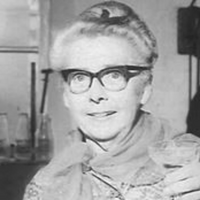
Kathleen Faragher (1904–1974) was the most significant and prolific Manx dialect author of the mid twentieth century. She is best known for her poems first published in the Ramsey Courier and collected into five books published between 1955 and 1967. She was also a prolific short story writer and playwright. Her work is renowned for its humour born of a keen observation of Manx characters, and for its evocative portrayal of the Isle of Man and its people. Life Kathleen Faragher was born in 1904 in Ramsey, Isle of Man, to Joseph and Catherine Anne Faragher, owners of a grocer and provision merchant business on Approach Road. Kathleen was the youngest of five children: Laurence (who died in Gibraltar in 1944 during WWII), Fred (later manager of Martin’s Bank, Peel), Joseph (who took over the family business but died in 1946), Evelyn (who emigrated to Auckland, New Zealand, where she died in 1949) and herself. Kathleen Faragher was raised in Ramsey until about 1924, when she moved to London to take up a business career. After 25 years working in London, ill-health forced her into early retirement, whereupon she returned to live on the Isle of Man in October 1949. Faragher lived first in Ramsey but eventually moved to Maughold, finally coming to live near to the Dhoon Church in Glen Mona. Poetry Faragher’s first poem, 'Blue Point’, was published in the Ramsey Courier on 14 October 1949. The poem was written whilst in Kent and sent to the paper, who surprised Faragher in accepting it, although it was not published until she had returned to live on the island. This poem was different in style to Faragher’s subsequent work and it was only published in her third book of poetry, Where Curlews Call, in 1959, by which time it had been substantially rewritten. Her next poem, 'Maughold Head’, was published at the start of February 1950, after which her poems were published regularly in the Ramsey Courier. Her first published poem in the Anglo-Manx dialect was 'A Lament’, which appeared in September 1950. Her poems were quickly picked up as special evocations of the Isle of Man and they were recited at meetings of Manx Societies in England alongside poems by the Manx National Poet, T. E. Brown, as early as November 1951. Her poems, 'Maughold Head’ and 'In Exile’, were set to music by C. Sydney Marshall and had been cut to record by February 1960. Her first book of poems, Green Hills by the Sea, was published in February 1955 by The Ramsey Courier Ltd. The book’s title is a reference to the popular song, 'Ellan Vannin’, composed from a poem by Eliza Craven Green. The book was described as displaying Faragher’s “deep insight into Manx feelings and a nostalgic love of the old folk and ways” by George Bellairs. The collection opened with 'Land of My Birth’, which she described as “the greatest compliment she can pay to the Manx people” and with which she usually ended her recitals. I love this purple-misted Isle, This land where I was born. The gorse-clad hills and bracken tops, The fields of waving corn. [...] But best of all I love to hear The gentle, lilting voice Of kindly Manx folk greeting me: It makes my heart rejoice, To feel once more the friendly hand, To hear the welcome warm, To look into each smiling face And know I have come home. Her second collection, This Purple-Misted Isle, was published in October 1957. The title was another reference to her forebears of Manx literature, this time to T. E. Brown, a reference continued within the collection with Faragher’s 'The Immortal “Kitty”' paying homage to Brown’s 'Kitty o’ the Sherragh Vane’ from his Fo’c’s’le Yarns. The collection had a Foreword by the Lieutenant Governor, Ambrose Flux Dundas. It proved to be very popular, having to be reprinted by the end of the year, and by the end of 1959 a third print had also almost sold out. This collection included 'The Homecomer’, which displays her distinctive Anglo-Manx conversational style: [...] “It isn’ me dyin’ that I min’, boy,” She said as she sat by her bed; “I’d go peaceful if it wasn’ for thinkin’ Ye’ll be managin’ so maul when I’m dead.” An’ Billy sthroked her cheek– so the tale goes – An’ whispered all lovin’ an’ low, “Dunt be grievin’, Nellie Kate; theer’s no need to gel, To worry about me when yer go! For theer’s the nices’ li’l wumman in Laxaa That I’ve had me eye on this las’ bit; She’ll look after me well, I can tell yer, So take yer res’, Nellie Kate, an’ dunt fret!” My gough! She gorrup from that bed theer Like an arra shot straight from the bow! Ay! an’ Billy himself was years buried ‘Fore herself in the en’ had to go! [...] By 1959 Faragher’s poems had been heard on BBC Radio a number of times, recited both by herself and by others. It was in October of that year that her third collection was released, Where Curlews Call, bearing a perceptive Preface by Sir Ralph Stevenson: “Our mother tongue has been overlaid by a stereotyped accent [...]. The Manx lilt [...] is all too rapidly fading. She does her best in these poems to keep it alive and at the same times gives a warm and human picture of our farms and crofts and the kindly folk who live in them. For this, if for nothing else, she has earned our gratitude.” Her subsequent collections of poetry were These Fairy Shores (1962) and English and Manx Dialect Poems (1967). Faragher’s poems can be predominantly categorised into two types: light-humoured dialect vignettes or lyrical descriptions of the Isle of Man. Her poems are distinctive in Manx literature in being prevailingly from or of a female perspective and based within the family or home environment. Theatre and prose As early as 1951 Faragher had been experimenting with extending her conversational monologue Anglo-Manx poems into theatrical dialogues for performance. In 1964 four such 'character sketches’ were published as Kiare Cooisghyn. As was distinctive of her dialect poetry, all of these pieces were written for middle-aged or elderly female characters and used a very tender humour born of a close observation of Manx character. Something of this is shown in the first 'duologue’ from the collection, 'The Caffy’ in which two women discuss the new café in town: [...] Mrs K. An’ what like was the china? Gran’ mighty I suppose? Mrs C. Aw! somethin’ awful that was! Rale indacent, in fac’. A whole lorra naked childher flyin’ about on the plates shootin’ bows an’ arras. Mrs K. Aw! them 'ud be l’il Cupids. Mrs C. Li’l Cupids? Li’l divils, more like! Why wan o’ them was the dead spit o’ that young dirt Kermid’s yandher! Ay! skeetin’ up at me through the gravy he was– enough to turn yer! [...] She came to concentrate on prose towards the end of her life, publishing By The Red Fuchsia Tree in 1967, a collection of short stories interspersed with reprints of poems from her earlier collections. This was followed by a long series of short dialect stories published under the pseudonym, “Kirree Ann”, in the Ramsey Courier at a rate of almost one a week over the last two years of her life. This output of nearly 100 short stories makes her the most prolific Manx short story writer of the twentieth Century. Death and legacy Kathleen Faragher died in 1974, on the same day as her final story was published in the Ramsey Courier. She was buried in the family plot in Maughold churchyard, a graveyard also associated with other important Manx writers such as T. E. Brown, Hall Caine, Cushag and William Kennish. Six years after her death, her friend, Constance Radcliffe, the leading authority on the local history of Ramsey and Maughold, wrote of Faragher’s work that: “In all her works she expressed her affection for a Manx way of life which has only just disappeared, her kindly humour based on acute observation of people’s idiosyncrasies, and her deep and abiding love of the island itself.” Her work continues to be popularly performed in recitals on the Isle of Man, despite none of her books having been republished after her death, and her “Kirree Ann” stories having never been collected. In 2015 a project to record the memories of those who knew and remember Faragher was launched. Funded by Culture Vannin, it is envisioned to tie in with the Culture Vannin oral history programme, but also to reach more widely to collect unpublished works, memorabilia or other artefacts that might be uncovered. In introducing the initiative, the project organiser gave an estimation of Faragher’s work in relation to Manx literature: “the importance of her work to the Isle of Man would be hard to overestimate. It would be a tragedy for Manx culture if we did not do everything in our power to preserve all we can of her memory.” Publications * Green Hills by the Sea. Ramsey: The Ramsey Courier Ltd. 1954. * This Purple-Misted Isle. Ramsey: The Ramsey Courier Ltd. 1957. * Where Curlews Call. Ramsey: The Ramsey Courier Ltd. 1959. * These Fairy Shores. Ramsey: The Ramsey Courier Ltd. 1962. * Kiare Cooisghyn. Ramsey: The Ramsey Courier Ltd. 1964. * English and Manx Dialect Poems. Douglas: Norris Modern Press. 1967. * By The Red Fuchsia Tree. Douglas: The Norris Modern Press. 1967. References Wikipedia—https://en.wikipedia.org/wiki/Kathleen_Faragher
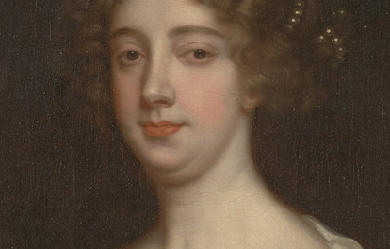

Aphra Behn (14 December 1640? April 1689) was an English playwright, poet, translator and fiction writer from the Restoration era. As one of the first English women to earn her living by her writing, she broke cultural barriers and served as a literary role model for later generations of women authors. Rising from obscurity, she came to the notice of Charles II, who employed her as a spy in Antwerp. Upon her return to London and a probable brief stay in debtors’ prison, she began writing for the stage. She belonged to a coterie of poets and famous libertines such as John Wilmot, Lord Rochester. She wrote under the pastoral pseudonym Astrea. During the turbulent political times of the Exclusion Crisis, she wrote an epilogue and prologue that brought her into legal trouble; she thereafter devoted most of her writing to prose genres and translations. A staunch supporter of the Stuart line, she declined an invitation from Bishop Burnet to write a welcoming poem to the new king William III. She died shortly after.She is remembered in Virginia Woolf’s A Room of One’s Own: “All women together ought to let flowers fall upon the tomb of Aphra Behn which is, most scandalously but rather appropriately, in Westminster Abbey, for it was she who earned them the right to speak their minds.” Her grave is not included in the Poets’ Corner but lies in the East Cloister near the steps to the church. Life and work Versions of her early life Information regarding Behn’s life is scant, especially regarding her early years. This may be due to intentional obscuring on Behn’s part. One version of Behn’s life tells that she was born to a barber named John Amis and his wife Amy. Another story has Behn born to a couple named Cooper. The Histories And Novels of the Late Ingenious Mrs. Behn (1696) states that Behn was born to Bartholomew Johnson, a barber, and Elizabeth Denham, a wet-nurse. Colonel Thomas Colepeper, the only person who claimed to have known her as a child, wrote in Adversaria that she was born at “Sturry or Canterbury” to a Mr Johnson and that she had a sister named Frances. Another contemporary, Anne Finch, wrote that Behn was born in Wye in Kent, the “Daughter to a Barber”. In some accounts the profile of her father fits Eaffrey Johnson.Behn was born during the buildup of the English Civil War, a child of the political tensions of the time. One version of Behn’s story has her travelling with a Bartholomew Johnson to Surinam. He was said to die on the journey, with his wife and children spending some months in the country, though there is no evidence of this. During this trip Behn said she met an African slave leader, whose story formed the basis for one of her most famous works, Oroonoko. It is possible that she acted a spy in the colony. There is little verifiable evidence to confirm any one story. In Oroonoko Behn gives herself the position of narrator and her first biographer accepted the assumption that Behn was the daughter of the lieutenant general of Surinam, as in the story. There is little evidence that this was the case, and none of her contemporaries acknowledge any aristocratic status. There is also no evidence that Oroonoko existed as an actual person or that any such slave revolt, as is featured in the story, really happened. Writer Germaine Greer has called Behn “a palimpsest; she has scratched herself out,” and biographer Janet Todd noted that Behn “has a lethal combination of obscurity, secrecy and staginess which makes her an uneasy fit for any narrative, speculative or factual. She is not so much a woman to be unmasked as an unending combination of masks”. It is notable that her name is not mentioned in tax or church records. During her lifetime she was also known as Ann Behn, Mrs Bean, agent 160 and Astrea. Career Shortly after her supposed return to England from Surinam in 1664, Behn may have married Johan Behn (also written as Johann and John Behn). He may have been a merchant of German or Dutch extraction, possibly from Hamburg. He died or the couple separated soon after 1664, however from this point the writer used “Mrs Behn” as her professional name.Behn may have had a Catholic upbringing. She once commented that she was “designed for a nun,” and the fact that she had so many Catholic connections, such as Henry Neville who was later arrested for his Catholicism, would have aroused suspicions during the anti-Catholic fervour of the 1680s. She was a monarchist, and her sympathy for the Stuarts, and particularly for the Catholic Duke of York may be demonstrated by her dedication of her play The Rover II to him after he had been exiled for the second time. Behn was dedicated to the restored King Charles II. As political parties emerged during this time, Behn became a Tory supporter.By 1666 Behn had become attached to the court, possibly through the influence of Thomas Culpeper and other associates. The Second Anglo-Dutch War had broken out between England and the Netherlands in 1665, and she was recruited as a political spy in Antwerp on behalf of King Charles II, possibly under the auspices of courtier Thomas Killigrew. This is the first well-documented account we have of her activities. Her code name is said to have been Astrea, a name under which she later published many of her writings. Her chief role was to establish an intimacy with William Scot, son of Thomas Scot, a regicide who had been executed in 1660. Scot was believed to be ready to become a spy in the English service and to report on the doings of the English exiles who were plotting against the King. Behn arrived in Bruges in July 1666, probably with two others, as London was wracked with plague and fire. Behn’s job was to turn Scot into a double agent, but there is evidence that Scot betrayed her to the Dutch.Behn’s exploits were not profitable however; the cost of living shocked her, and she was left unprepared. One month after arrival, she pawned her jewellry. King Charles was slow in paying (if he paid at all), either for her services or for her expenses whilst abroad. Money had to be borrowed so that Behn could return to London, where a year’s petitioning of Charles for payment was unsuccessful. It may be that she was never paid by the crown. A warrant was issued for her arrest, but there is no evidence it was served or that she went to prison for her debt, though apocryphally it is often given as part of her history. Forced by debt and her husband’s death, Behn began to work for the King’s Company and the Duke’s Company players as a scribe. She had, however, written poetry up until this point. While she is recorded to have written before she adopted her debt, John Palmer said in a review of her works that, “Mrs. Behn wrote for a livelihood. Playwriting was her refuge from starvation and a debtor’s prison.” The theatres that had been closed under Cromwell were now re-opening under Charles II, plays enjoying a revival. Her first play, The Forc’d Marriage, was staged in 1670, followed by The Amorous Prince (1671). After her third play, The Dutch Lover, failed, Behn falls off the public record for three years. It is speculated that she went travelling again, possibly in her capacity as a spy. She gradually moved towards comic works, which proved more commercially successful. Her most popular works included The Rover. Behn became friends with notable writers of the day, including John Dryden, Elizabeth Barry, John Hoyle, Thomas Otway and Edward Ravenscroft, and was acknowledged as a part of the circle of the Earl of Rochester. Behn often used her writings to attack the parliamentary Whigs claiming, “In public spirits call’d, good o’ th’ Commonwealth... So tho’ by different ways the fever seize... in all ’tis one and the same mad disease.” This was Behn’s reproach to parliament which had denied the king funds. Final years and death In 1688, in the year before her death, she published A Discovery of New Worlds, a translation of a French popularisation of astronomy, Entretiens sur la pluralité des mondes, by Bernard le Bovier de Fontenelle, written as a novel in a form similar to her own work, but with her new, religiously oriented preface. In all she would write and stage 19 plays, contribute to more, and become one of the first prolific, high-profile female dramatists in Britain. During the 1670s and 1680s she was one of the most productive playwrights in Britain, second only to Poet Laureate John Dryden.In her last four years, Behn’s health began to fail, beset by poverty and debt, but she continued to write ferociously, though it became increasingly hard for her to hold a pen. In her final days, she wrote the translation of the final book of Abraham Cowley’s Six Books of Plants. She died on 16 April 1689, and was buried in the East Cloister Westminster Abbey. The inscription on her tombstone reads: “Here lies a Proof that Wit can never be Defence enough against Mortality.” She was quoted as stating that she had led a “life dedicated to pleasure and poetry.” Published works Behn earned a living writing, one of the earliest Englishwoman to do so. After John Dryden she was the most prolific writer of the English Restoration. Behn was not the first woman in England to publish a play. In 1613 Lady Elizabeth Cary had published The Tragedy of Miriam, in the 1650s Margaret Cavendish published two volumes of plays, and in 1663 a translation of Corneille’s Pompey by Katherine Philips was performed in Dublin and London. Women had been excluded from theatre in the Elizabethan era, but in Restoration England they made up a significant part of the audience and professional actresses played the women’s parts. This changed the nature and themes of Restoration theatre.Behn’s first play The Forc’d Marriage was a romantic tragicomedy on arranged marriages and was staged by the Duke’s Company in September 1670. The performance ran for six nights, which was regarded as a good run for an unknown author. Six months later Behn’s play The Amorous Prince was successfully staged. Again, Behn used the play to comment on the harmful effects of arranged marriages. Behn did not hide the fact that she was a woman, instead she made a point of it. When in 1673 the Dorset Garden Theatre staged The Dutch Lover, critics sabotaged the play on the grounds that the author was a woman. Behn tackled the critics head on in Epistle to the Reader. She argued that women had been held back by their unjust exclusion from education, not their lack of ability. After a three-year publication pause, Behn published four plays in close succession. In 1676 she published Abdelazar, The Town Fop and The Rover. In early 1678 Sir Patient Fancy was published. This succession of box-office successes led to frequent attacks on Behn. She was attacked for her private life, the morality of her plays was questioned and she was accused of plagiarising The Rover. Behn countered these public attacks in the prefaces of her published plays. In the preface to Sir Patient Fancy she argued that she was being singled out because she was a woman, while male playwrights were free to live the most scandalous lives and write bawdy plays.Under Charles II of England prevailing Puritan ethics was reversed in the fashionable society of London. The King associated with playwrights that poured scorn on marriage and the idea of consistency in love. Among the King’s favourite was the Earl of Rochester John Wilmot, who became famous for his cynical libertinism. Behn was a friend of Wilmot and Behn became a bold proponent of sexual freedom for both women and men. Like her contemporary male libertines, she wrote freely about sex. In the infamous poem The Disappointment she wrote a comic account of male impotence from a woman’s perspective. Critics Lisa Zeitz and Peter Thoms contend that the poem “playfully and wittily questions conventional gender roles and the structures of oppression which they support”. In The Dutch Lover Behn forthrightly acknowledged female sexual desire. Critics of Behn were provided with ammunition because of her public liaison with John Hoyle, a bisexual lawyer who scandalised his contemporaries.By the late 1670s Behn was among the leading playwrights of England. Her plays were staged frequently and attended by the King. The Rover became a favourite at the King’s court. Behn became heavily involved in the political debate about the succession. Because Charles II had no heir a prolonged political crisis ensued. Mass hysteria commenced as in 1678 the rumoured Popish Plot suggested the King should be replaced with his Roman Catholic brother James. Political parties developed, the Whigs wanted to exclude James, while the Tories did not believe succession should be altered in any way. Charles II eventually dissolved the Cavalier Parliament and James II succeeded him in 1685. Behn supported the Tory position and in the two years between 1681 and 1682 produced five plays to discredit the Whigs. The London audience, mainly Tory sympathisers, attended the plays in large numbers. But Behn was arrested on the order of King Charles II when she used one of the plays to attack James Scott, Duke of Monmouth, the illegitimate son of the King.As audience numbers declined, theatres staged mainly old works to save costs. Nevertheless, Behn published The Luckey Chance in 1686. In response to the criticism levelled at they play she articulated a long and passionate defence of women writers. Her play The Emperor of the Moon was published and staged in 1687, it became one of her longest running plays. Behn stopped writing plays and turned to prose fiction. Today she is mostly known for the novels she wrote in the later part of her life. Her first novel was the three-part Love-Letters Between a Nobleman and His Sister, published between 1682 and 1687. The novels were inspired by a contemporary scandal, which saw Lord Grey elope with his sister-in-law Lady Henrietta Berkeley. At the time of publication Love Letters was very popular and went through more than 16 editions. Today Behn’s prose work is critically acknowledged as having been important to the development of the English novel. Following Behn’s death, new female dramatists such as Delarivier Manley, Mary Pix, Susanna Centlivre and Catherine Trotter acknowledged Behn as their most vital predecessor, who opened up public space for women writers.In 1688, less than a year before her death, Behn published Oroonoko: or, The Royal Oroonoko, the story of the enslaved Oroonoko and his love Imoinda. It was based on Behn’s travel to Surinam twenty years earlier. The novel became a great success. In 1696 it was adapted for the stage by Thomas Southerne and continuously performed throughout the 18th century. In 1745 the novel was translated into French, going through seven French editions. As abolitionism gathered pace in the late 18th century the novel was celebrated as the first anti-slavery novel. Legacy and re-evaluation After her death in 1689 Behn’s literary work was marginalised and dismissed outright. Until the mid-20th century Behn was repeatedly dismissed as morally depraved minor writer. In the 18th century her literary work was scandalised as lewd by Thomas Brown, William Wycherley, Richard Steele and John Duncombe. Alexander Pope penned the famous lines “The stage how loosely does Astrea tread, Who fairly puts all characters to bed!”. In the 19th century Mary Hays, Matilda Betham, Alexander Dyce, Jane Williams and Julia Kavanagh decided that Behn’s writings were unfit to read, because they were corrupt and deplorable. Among the few critics who believed that Behn was an important writer were Leigh Hunt, William Forsyth and William Henry Hudson.The life and times of Behn were recounted by a long line of biographers, among them Dyce, Edmund Gosse, Ernest Bernbaum, Montague Summers, Vita Sackville-West, Virginia Woolf, George Woodcock, William J. Cameron and Frederick Link.Of Behn’s considerable literary output only Oroonoko was seriously considered by literary scholars. The late 18th century the novel is regarded as one of the first abolitionist and humanitarian novel published in the English language. It is credited as precursor to Jean-Jaques Rousseau’s Discourses on Inequality. Since the 1970s Behn’s literary works have been re-evaluated by feminist critics and writers. Behn was rediscovered as a significant female writer by Maureen Duffy, Angeline Goreau, Ruth Perry, Hilda Lee Smith, Moira Ferguson, Jane Spencer, Dale Spender, Elaine Hobby and Janet Todd. This led to the reprinting of her works. The Rover was republished in 1967, Oroonoko was republished in 1973, Love Letters between a Nobleman and His Sisters was published again in 1987 and The Lucky Chance was reprinted in 1988. Montague Summers, an author of scholarly works on the English drama of the 17th century, published a six-volume collection of her work, in hopes of rehabilitating her reputation. Summers was fiercely passionate about the work of Behn and found himself incredibly devoted to the appreciation of 17th century literature. Felix Schelling wrote in The Cambridge History of English Literature, that she was “a very gifted woman, compelled to write for bread in an age in which literature... catered habitually to the lowest and most depraved of human inclinations,” and that, “Her success depended upon her ability to write like a man.” Edmund Gosse remarked that she was, “...the George Sand of the Restoration”.The criticism of Behn’s poetry focuses on the themes of gender, sexuality, femininity, pleasure, and love. A feminist critique tends to focus on Behn’s inclusion of female pleasure and sexuality in her poetry, which was a radical concept at the time she was writing. One critic, Alison Conway, views Behn as instrumental to the formation of modern thought around the female gender and sexuality: "Behn wrote about these subjects before the technologies of sexuality we now associate were in place, which is, in part, why she proves so hard to situate in the trajectories most familiar to us”. Virginia Woolf wrote, in A Room of One’s Own: All women together, ought to let flowers fall upon the grave of Aphra Behn... for it was she who earned them the right to speak their minds... Behn proved that money could be made by writing at the sacrifice, perhaps, of certain agreeable qualities; and so by degrees writing became not merely a sign of folly and a distracted mind but was of practical importance. Adaptations of Behn in Literature Behn’s life has been adapted for the stage in the 2014 play Empress of the Moon: The Lives of Aphra Behn by Chris Braak, and the 2015 play [exit Mrs Behn] or, The Leo Play by Christopher VanderArk. She is one of the characters in the 2010 play Or, by Liz Duffy Adams. Behn appears as a character in Daniel O’Mahony’s Newtons Sleep, in Phillip Jose Farmer’s The Magic Labyrinth and Gods of Riverworld, in Molly Brown’s Invitation to a Funeral (1999), and in Diana Norman’s The Vizard Mask. She is referred to in Patrick O’Brian’s novel Desolation Island.
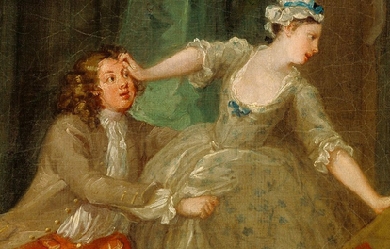
Augustus Montague Toplady (4 November 1740– 11 August 1778) was an Anglican cleric and hymn writer. He was a major Calvinist opponent of John Wesley. He is best remembered as the author of the hymn “Rock of Ages”. Three of his other hymns– “A Debtor to Mercy Alone”, “Deathless Principle, Arise” and “Object of My First Desire”– are still occasionally sung today, though all three are far less popular than “Rock of Ages”. Background and early life, 1740–55 Augustus Toplady was born in Farnham, Surrey, England in November 1740. His father, Richard Toplady, was probably from Enniscorthy, County Wexford in Ireland. Richard Toplady became a commissioned officer in the Royal Marines in 1739; by the time of his death, he had reached the rank of major. In May 1741, shortly after Augustus’ birth, Richard participated in the Battle of Cartagena de Indias (1741), the most significant battle of the War of Jenkins’ Ear (1739–42), during the course of which he died, most likely of yellow fever, leaving Augustus’ mother to raise the boy alone. Toplady’s mother, Catherine, was the daughter of Richard Bate, who was the incumbent of Chilham from 1711 until his death in 1736. Catherine and her son moved from Farnham to Westminster. He attended Westminster School from 1750 to 1755. Trinity College, Dublin: 1755–60 In 1755, Catherine and Augustus moved to Ireland, and Augustus was enrolled in Trinity College, Dublin. Shortly thereafter, in August 1755, the 15-year-old Toplady attended a sermon preached by James Morris, a follower of John Wesley, in a barn in Codymain, co. Wexford (though in his Dying Avowal, Toplady denies that the preacher was directly connected to Wesley, with whom he had developed a bitter relationship). He would remember this sermon as the time at which he received his effectual calling from God. Having undergone his religious conversion under the preaching of a Methodist, Toplady initially followed Wesley in supporting Arminianism. In 1758, however, the 18-year-old Toplady read Thomas Manton’s seventeenth-century sermon on John 17 and Jerome Zanchius’s Confession of the Christian Religion (1562). These works convinced Toplady that Calvinism, not Arminianism, was correct. In 1759, Toplady published his first book, Poems on Sacred Subjects. Following his graduation from Trinity College in 1760, Toplady and his mother returned to Westminster. There, Toplady met and was influenced by several prominent Calvinist ministers, including George Whitefield, John Gill, and William Romaine. It was John Gill who in 1760 urged Toplady to publish his translation of Zanchius’s work on predestination, Toplady commenting that “I was not then, however, sufficiently delivered from the fear of man.” Church ministry: 1762–78 In 1762, Edward Willes, the Bishop of Bath and Wells, ordained Toplady as an Anglican deacon, appointing him curate of Blagdon, located in the Mendip Hills of Somerset. Toplady wrote his famous hymn “Rock of Ages” in 1763. A local tradition– discounted by most historians– holds that he wrote the hymn after seeking shelter under a large rock at Burrington Combe, a magnificent ravine close to Blagdon, during a thunderstorm. Upon being ordained priest in 1764, Toplady returned to London briefly, and then served as curate of Farleigh Hungerford for a little over a year (1764–65). He then returned to stay with friends in London for 1765–66. In May 1766, he became incumbent of Harpford and Venn Ottery, two villages in Devon. In 1768, however, he learned that he had been named to this incumbency because it had been purchased for him; seeing this as simony, he chose to exchange the incumbency for the post of vicar of Broadhembury, another Devon village. He would serve as vicar of Broadhembury until his death, although he received leave to be absent from Broadhembury from 1775 on. Toplady never married, though he did have relationships with two women. The first was Selina Hastings, Countess of Huntingdon, the founder of the Countess of Huntingdon’s Connexion, a Calvinist Methodist series of congregations. Toplady first met Huntingdon in 1763, and preached in her chapels several times in 1775 during his absence from Broadhembury. The second was Catharine Macaulay, whom he first met in 1773, and with whom he spent a large amount of time in the years 1773–77. Animals and Natural World Toplady was a prolific essayist and letter correspondent and wrote on a wide range of topics. He was interested in the natural world and in animals. He composed a short work “Sketch of Natural History, with a few particulars on Birds, Meteors, Sagacity of Brutes, and the solar system”, wherein he set down his observations about the marvels of nature, including the behaviour of birds, and illustrations of wise actions on the part of various animals. Toplady also considered the problem of evil as it relates to the sufferings of animals in “A Short Essay on Original Sin”, and in a public debate delivered a speech on “Whether unnecessary cruelty to the brute creation is not criminal?”. In this speech he repudiated brutality towards animals and also affirmed his belief that the Scriptures point to the resurrection of animals. Toplady’s position about animal brutality and the resurrection were echoed by his contemporaries Joseph Butler, Richard Dean, Humphry Primatt and John Wesley, and throughout the nineteenth century other Christian writers such as Joseph Hamilton, George Hawkins Pember, George N. H. Peters, Joseph Seiss, and James Macauley developed the arguments in more detail in the context of the debates about animal welfare, animal rights and vivisection. Calvinist controversialist: 1769–78 Toplady’s first salvo into the world of religious controversy came in 1769 when he wrote a book in response to a situation at the University of Oxford. Six students had been expelled from St Edmund Hall because of their Calvinist views, which Thomas Nowell criticised as inconsistent with the views of the Church of England. Toplady then criticised Nowell’s position in his book The Church of England Vindicated from the Charge of Arminianism, which argued that Calvinism, not Arminianism, was the position historically held by the Church of England. 1769 also saw Toplady publish his translation of Zanchius’s Confession of the Christian Religion (1562), one of the works which had convinced Toplady to become a Calvinist in 1758. Toplady entitled his translation The Doctrine of Absolute Predestination Stated and Asserted. This work drew a vehement response from John Wesley, thus initiating a protracted pamphlet debate between Toplady and Wesley about whether the Church of England was historically Calvinist or Arminian. This debate peaked in 1774, when Toplady published his 700-page The Historic Proof of the Doctrinal Calvinism of the Church of England, a massive study which traced the doctrine of predestination from the period of the Early Church through to William Laud. The section about the Synod of Dort contained a footnote identifying five basic propositions of the Calvinist faith, arguably the first appearance in print of the summary of Calvinism known as the “five points of Calvinism”. The relationship between Toplady and Wesley that had initially been cordial, involving exchanges of letters in Toplady’s Arminian days, became increasingly bitter and reached its nadir with the “Zanchy affair”. Wesley took exception to the publication of Toplady’s translation of Zanchius’s work on predestination in 1769 and published, in turn, an abridgment of that work titled “The Doctrine of Absolute Predestination Stated and Asserted”, adding his own comment that “The sum of all is this: One in twenty (suppose) of mankind are elected; nineteen in twenty are reprobated. The elect shall be saved, do what they will; the reprobate will be damned, do what they can. Reader believe this, or be damned. Witness my hand.” Toplady viewed the abridgment and comments as a distortion of his and Zanchius’s views and was particularly enraged that the authorship of these additions were attributed to him, as though he approved of the content. Toplady published a response in the form of “A Letter to the Rev Mr John Wesley; Relative to His Pretended Abridgement of Zanchius on Predestination”. Wesley never publicly accepted any wrongdoing on his part and seemingly denied his authorship of the comments contained in his abridgement when, in his 1771 work “The Consequenses Proved” that responded to Toplady’s letter, he ascribed his additions to Toplady. Subsequently Wesley avoided direct correspondence with Toplady, famously stating in a letter of 24 June 1770 that “I do not fight with chimney-sweepers. He is too dirty a writer for me to meddle with. I should only foul my fingers. I read his title-page, and troubled myself no farther. I leave him to Mr Sellon. He cannot be in better hands.” Last years Toplady spent his last three years mainly in London, preaching regularly in a French Calvinist chapel at Orange Street (off of Haymarket), most spectacularly in 1778, when he appeared to rebut charges being made by Wesley’s followers that he had renounced Calvinism on his deathbed. Toplady died of tuberculosis on 11 August 1778. He was buried at Whitefield’s Tabernacle, Tottenham Court Road. Hymns Compared with Christ, in all beside n. 760 in The Church Hymn book 1872 (1772) Deathless spirit, now arise n. 1381 in The Church Hymn book 1872 (1776) Holy Ghost, dispel our sadness n. 80 in The Church Hymn book 1872 (1776). Modernising of John Christian Jacobi’s translation (1725) of Paul Gerhardts hymn from 1653. How happy are the souls above n. 1434 in The Church Hymn book 1872 (1776) (? A. M. Topladys text) Inspirer and hearer of prayer n. 30 in The Church Hymn book 1872 (1774) O thou, that hear’st the prayer of faith n. 642 in The Church Hymn book 1872 (1176) Praise the Lord, who reigns above n. 160 in The Church Hymn book 1872 (1759) Rock of ages, cleft for me n. 697 in The Church Hymn book 1872 (1776) Surely Christ thy griefs hath borne n. 443 in The Church Hymn book 1872 (1759) What, though my frail eye-lids refuse n. 29 in The Church Hymn book 1872 (1774) When langour and disease invade n. 1032 in The Church Hymn book 1872 (1778) Your harps, ye trembling saints n. 861 in The Church Hymn book 1872 (1772) References Wikipedia—https://en.wikipedia.org/wiki/Augustus_Toplady
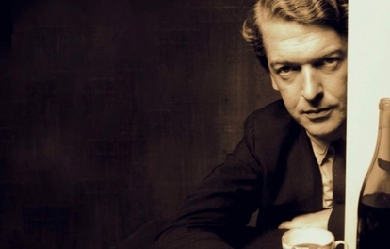
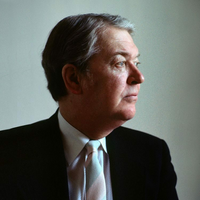
Sir Kingsley William Amis, CBE (16 April 1922– 22 October 1995) was an English novelist, poet, critic, and teacher. He wrote more than 20 novels, six volumes of poetry, a memoir, various short stories, radio and television scripts, along with works of social and literary criticism. According to his biographer, Zachary Leader, Amis was “the finest English comic novelist of the second half of the twentieth century.” He is the father of British novelist Martin Amis. In 2008, The Times ranked Kingsley Amis thirteenth on their list of the 50 greatest British writers since 1945. Life and career Kingsley Amis was born in Clapham, south London, the son of William Robert Amis, a mustard manufacturer’s clerk in the City of London and his wife, Rosa Annie (née Lucas). He was raised in Norbury– in his later estimation "not really a place, it’s an expression on a map [-] really I should say I came from Norbury station". He was educated at the City of London School on a scholarship, after his first year, and in April 1941 was admitted to St. John’s College, Oxford, also on a scholarship, where he read English. It was there that he met Philip Larkin, with whom he formed the most important friendship of his life. While at Oxford, in June 1941, Amis joined the Communist Party of Great Britain (but later broke with communism in 1956, after Soviet leader Nikita Khrushchev denounced former Soviet premier Joseph Stalin in his speech On the Cult of Personality and Its Consequences). After only a year, in July 1942, he was called up for national service. After serving in the Royal Corps of Signals in the Second World War, Amis returned to Oxford in October 1945 to complete his degree. Although he worked hard and earned in 1947 a first in English, he had by then decided to give much of his time to writing. In 1946 he met Hilary Bardwell; they married in 1948 after she became pregnant with their first child, Philip. Amis initially arranged for her to have a back-street abortion, but changed his mind, fearing for her safety. He became a lecturer in English at the University of Wales, Swansea (1949–1961). Two other children followed: Martin in August 1949 and Sally in January 1954. Days after Sally’s birth, Amis’s first novel Lucky Jim was published to great acclaim; critics saw it as having caught the flavour of Britain in the 1950s, ushering in a new style of fiction. By 1972, in addition to impressive sales in Britain, one and a quarter million paperback copies had been sold in the United States, and it was eventually translated into twenty languages, including Polish, Hebrew, Korean, and Serbo-Croat. The novel won the Somerset Maugham Award for fiction and Amis was associated with the writers labelled the Angry Young Men. Lucky Jim was one of the first British campus novels, setting a precedent for later generations of writers such as Malcolm Bradbury, David Lodge, Tom Sharpe and Howard Jacobson. As a poet, Amis was associated with The Movement. During 1958–1959 he made the first of two visits to the United States, where he was Visiting Fellow in Creative Writing at Princeton University and a visiting lecturer in other northeastern universities. On returning to Britain, he fell into a rut, and he began looking for another post; after thirteen years at Swansea, Amis became a fellow of Peterhouse, Cambridge (1961–1963). He regretted the move within a year, finding Cambridge an academic and social disappointment and resigned in 1963, intent on moving to Majorca; he went no farther than London. In 1963, Hilary discovered Amis’s love affair with novelist Elizabeth Jane Howard. Hilary and Amis separated in August, and he went to live with Howard. He divorced Hilary in 1965 and married Howard the same year. In 1968 he moved with Howard to Lemmons, a house in Barnet, north London. She and Amis divorced in 1983. In his last years, Amis shared a house with his first wife Hilary and her third husband, Alastair Boyd, 7th Baron Kilmarnock. Martin wrote the memoir Experience about the life, charm, and decline of his father. Amis was knighted in 1990. In August 1995 he fell, suffering a suspected stroke. After apparently recovering, he worsened, was re-admitted to hospital, and died on 22 October 1995 at St Pancras Hospital, London. He was cremated; his ashes are at Golders Green Crematorium. Literary work Amis is chiefly known as a comedic novelist of mid– to late-20th-century British life, but his literary work extended into many genres—poetry, essays and criticism, short stories, food and drink writing, anthologies, and a number of novels in genres such as science fiction and mystery. His career initially developed in a pattern which was the inverse of that followed by his close friend Philip Larkin. Before becoming known as a poet, Larkin had published two novels; Amis, on the other hand, originally wished to be a poet, and turned to writing novels only after publishing several volumes of verse. He continued throughout his career to write poetry which is known for its typically straightforward and accessible style, yet which often masks a nuance of thought, for example, in “Bookshop Idyll” or “Against Romanticism”, just as it does in his novels. Amis’s first novel, Lucky Jim (1954), is perhaps his most famous, satirizing the high-brow academic set of an unnamed university, seen through the eyes of its protagonist, Jim Dixon, as he tries to make his way as a young lecturer of history. The novel was perceived by many as part of the Angry Young Men movement of the 1950s which reacted against the stultification of conventional British life, though Amis never encouraged this interpretation. Amis’s other novels of the 1950s and early 1960s similarly depict situations from contemporary British life, often drawn from Amis’s own experiences. That Uncertain Feeling (1955) centres on a young provincial librarian (again perhaps with reference to Larkin, librarian at Hull) and his temptation towards adultery; I Like It Here (1958) presents Amis’s contemptuous view of “abroad” and followed upon his own travels on the Continent with a young family; Take a Girl Like You (1960) steps away from the immediately autobiographical, but remains grounded in the concerns of sex and love in ordinary modern life, tracing the courtship and ultimate seduction of the heroine Jenny Bunn by a young schoolmaster, Patrick Standish. With The Anti-Death League (1966), Amis begins to show some of the experimentation– with content, if not with style– which would mark much of his work in the 1960s and 70s. Amis’s departure from the strict realism of his early comedic novels is not so abrupt as might first appear. He had avidly read science fiction since a boy, and had developed that interest into the Christian Gauss Lectures of 1958, while visiting Princeton University. The lectures were published in that year as New Maps of Hell: A Survey of Science Fiction, a serious but light-handed treatment of what the genre had to say about man and society. Amis was particularly enthusiastic about the dystopian works of Frederik Pohl and C. M. Kornbluth, and in New Maps of Hell coined the term “comic inferno” to describe a type of humorous dystopia, particularly as exemplified in the works of Robert Sheckley. Amis further displayed his devotion to the genre in editing, with the Sovietologist Robert Conquest, the science fiction anthology series Spectrum I–V, which drew heavily upon 1950s numbers of the magazine Astounding Science Fiction. Though not explicitly science fiction, The Anti-Death League takes liberties with reality not found in Amis’s earlier novels, and introduces a speculative bent into his fiction, one which would continue to develop in other of his genre novels, such as The Green Man (1969) (mystery/horror) and The Alteration (1976) (alternative history). Much of this speculation was about the improbable existence of any benevolent deity involved in human affairs. In The Anti-Death League, The Green Man, The Alteration and elsewhere, including poems such as “The Huge Artifice: an interim assessment” and “New Approach Needed”, Amis showed frustration with a God who could lace the world with such cruelty and injustice, and championed the preservation of ordinary human happiness– in family, in friendships, in physical pleasure– against the demands of any cosmological scheme. The matter of Amis’s religious views is perhaps ultimately summed up in his response, reported in his Memoirs, to the Russian poet Yevgeny Yevtushenko’s question, in his broken English: “You atheist?” Amis replied, “It’s more that I hate Him.” During this time, Amis had not turned completely away from the comedic realism of Lucky Jim and Take a Girl Like You. I Want It Now (1968) and Girl, 20 (1971) both depict the “swinging” atmosphere of London in the late '60s, in which Amis certainly participated, though neither book is strictly autobiographical. Girl, 20, for instance, is framed in the world of classical (and pop) music, of which Amis was not a part—the book’s relatively impressive command of musical terminology and opinion shows both Amis’s amateur devotion to music and the almost journalistic capacity of his intelligence to take hold of a subject which interested him. That intelligence is similarly on display in, for instance, the presentation of ecclesiastical matters in The Alteration, when Amis was neither a Roman Catholic nor, for that matter, a devotee of any Church. Throughout the 1950s, '60s, and '70s, Amis was regularly producing essays and criticism, principally for journalistic publication. Some of these pieces were collected in 1968's What Became of Jane Austen? and Other Essays, in which Amis’s wit and literary and social opinions were on display ranging over books such as Colin Wilson’s The Outsider (panned), Iris Murdoch’s debut novel Under the Net (praised), or William Empson’s Milton’s God (inclined to agree with). Amis’s opinions on books and people tended to appear (and often, be) conservative, and yet, as the title essay of the collection shows, he was not merely reverent of “the classics” and of traditional morals, but was more disposed to exercise his own rather independent judgment in all things. Amis became associated with Ian Fleming’s James Bond novels, which he greatly admired, in the late 1960s, when he began composing critical works connected with the fictional spy, either under a pseudonym or uncredited. In 1965, he wrote the popular The James Bond Dossier under his own name. That same year, he wrote The Book of Bond, or, Every Man His Own 007, a tongue-in-cheek how-to manual about being a sophisticated spy, under the pseudonym “Lt Col. William ('Bill’) Tanner”, Tanner being M’s Chief of Staff in many of Fleming’s Bond novels. In 1968 Amis wrote Colonel Sun, which was published under the pseudonym “Robert Markham”. Amis’s literary style and tone changed significantly after 1970, with the possible exception of The Old Devils, a Booker Prize winner. Several critics accused him of being old fashioned and misogynistic. His Stanley and the Women, an exploration of social sanity, could be said to instance these traits. Others said that his output lacked the humanity, wit, and compassion of earlier efforts. This period also saw Amis the anthologist, a role in which his wide knowledge of all kinds of English poetry was on display. The New Oxford Book of Light Verse (1978), which he edited, was a revision of the original volume done by W. H. Auden. Amis took the anthology in a markedly new direction: Auden had interpreted light verse to include “low” verse of working-class or lower-class origin, regardless of subject matter, while Amis defined light verse as essentially light in tone, though not necessarily simple in composition. The Amis Anthology (1988), a personal selection of his favourite poems, grew out of his work for a London newspaper, in which he selected a poem daily and presented it with a brief introduction. Amis was shortlisted for the Booker Prize three times in his writing career for Ending Up (1974), Jake’s Thing (1978), and finally winning the prize for The Old Devils in 1986. In 2008, The Times ranked Kingsley Amis thirteenth on their list of the 50 greatest British writers since 1945. Personal life and political views As a young man at Oxford, Amis briefly joined the Communist Party. He left in 1956. He later described this stage of his political life as “the callow Marxist phase that seemed almost compulsory in Oxford”. Amis remained nominally on the Left for some time after the war, declaring in the 1950s that he would always vote for the Labour Party. But he eventually moved further right, a development he discussed in the essay “Why Lucky Jim Turned Right” (1967); his conservatism and anti-communism can be seen in such later works of his as the dystopian novel Russian Hide and Seek (1980). In 1967, Amis, Robert Conquest, John Braine and several other right-wing authors signed a controversial letter to The Times entitled “Backing for U.S. Policies in Vietnam”, supporting the US government in the Vietnam War. He spoke at the Adam Smith Institute, arguing against government subsidy to the arts. Amis was by his own admission and as revealed by his biographers a serial adulterer for much of his life. This was one of the main contributory factors in the breakdown of his first marriage. A famous photograph of a sleeping Amis on a Yugoslav beach shows the slogan (written by wife Hilly) on his back "1 Fat Englishman– I fuck anything". In one of his memoirs, Amis wrote: “Now and then I become conscious of having the reputation of being one of the great drinkers, if not one of the great drunks, of our time”. He suggests that this is the result of a naïve tendency on the part of his readers to apply the behaviour of his characters to himself. This was disingenuous; the fact was that he enjoyed drink, and spent a good deal of his time in pubs. Hilary Rubinstein, who accepted Lucky Jim for publication at Victor Gollancz, commented: “I doubted whether Jim Dixon would have gone to the pub and drunk ten pints of beer... I didn’t know Kingsley very well, you see.” Clive James comments: “All on his own, he had the weekly drinks bill of a whole table at the Garrick Club even before he was elected. After he was, he would get so tight there that he could barely make it to the taxi.” Amis was, however, adamant in his belief that inspiration did not come from a bottle: “Whatever part drink may play in the writer’s life, it must play none in his or her work.” That this was certainly the case is attested to by Amis’s highly disciplined approach to writing. For 'many years’, Amis imposed a rigorous daily schedule upon himself in which writing and drinking were strictly segregated. Mornings were devoted to writing with a minimum daily output of 500 words. The drinking would only begin around lunchtime when this output had been achieved. Amis’s prodigious output would not have been possible without this kind of self-discipline. Nevertheless, according to Clive James, Amis reached a turning point when his drinking ceased to be social, and became a way of dulling his remorse and regret at his behaviour toward Hilly. “Amis had turned against himself deliberately... it seems fair to guess that the troubled grandee came to disapprove of his own conduct.” His friend Christopher Hitchens said: “The booze got to him in the end, and robbed him of his wit and charm as well as of his health.” Amis had a somewhat complex relationship with anti-Semitism, which he sometimes expressed but also disliked and opposed. He occasionally speculated on the historically received, and commonly accepted, stereotypes attributed to Jewish character. Anti-semitism was sometimes present in his conversations and letters written to friends and associates: “The great Jewish vice is glibness, fluency... also possibly just bullshit, as in Marx, Freud, Marcuse.” Or, “Chaplin is a horse’s arse. He’s a Jeeeew you see, like the Marx Brothers, like Danny Kaye.” It is a minor theme in his novel about a paranoid schizophrenic, Stanley and the Women. As for the cultural complexion of America, Amis had this to say: “I’ve finally worked out why I don’t like Americans... Because everyone there is either a Jew or a hick.” Amis himself described his anti-Semitism as being “Very mild ...” Family Amis’s first marriage, of fifteen years, was to Hilary Bardwell, daughter of a civil servant, by whom he had two sons and one daughter: Philip Amis, a graphics designer; Martin Amis, a novelist; and Sally Amis, who died in 2000. Amis was married a second time, to the novelist Elizabeth Jane Howard from 1965 to 1983, with whom he had no children. At the end of his second marriage, he went to live with his ex-wife Hilary and her third husband, in a deal brokered by their two sons Philip and Martin, so that he could be cared for until his death. Partial bibliography Poetry * 1947 Bright November * 1953 A Frame of Mind * 1954 Poems: Fantasy Portraits * 1956 A Case of Samples: Poems 1946–1956 * 1962 The Evans County * 1968 A Look Round the Estate: Poems, 1957–1967 * 1979 Collected Poems 1944–78 Fiction Novels * c.1948 The Legacy (unpublished) * 1954 Lucky Jim * 1955 That Uncertain Feeling * 1958 I Like It Here * 1960 Take a Girl Like You * 1963 One Fat Englishman * 1965 The Egyptologists (with Robert Conquest) * 1966 The Anti-Death League * 1968 Colonel Sun: a James Bond Adventure (pseud. Robert Markham) * 1968 I Want It Now * 1969 The Green Man * 1971 Girl, 20 * 1973 The Riverside Villas Murder * 1974 Ending Up * 1975 The Crime of the Century * 1976 The Alteration * 1978 Jake’s Thing * 1980 Russian Hide-and-Seek * 1984 Stanley and the Women * 1986 The Old Devils * 1988 Difficulties with Girls * 1990 The Folks That Live on the Hill * 1991 We Are All Guilty * 1992 The Russian Girl * 1994 You Can’t Do Both * 1995 The Biographer’s Moustache * c.1995 Black and White (unfinished) Short fiction collections * 1962 My Enemy’s Enemy * 1980 Collected Short Stories * 1991 Mr Barrett’s Secret and Other Stories Other short fiction 1960 “Hemingway in Space” (short story), Punch December 1960 Non-fiction * 1957 Socialism and the Intellectuals, a Fabian Society pamphlet * 1960 New Maps of Hell: A Survey of Science Fiction * 1965 The James Bond Dossier * 1965 The Book of Bond, or Every Man His Own 007 (pseud. Lt.-Col William ('Bill’) Tanner) * 1970 What Became of Jane Austen?, and Other Questions * 1972 On Drink * 1974 Rudyard Kipling and His World * 1983 Everyday Drinking * 1984 How’s Your Glass? * 1990 The Amis Collection * 1991 Memoirs * 1997 The King’s English: A Guide to Modern Usage (name in part a pun as he was sometimes called “Kingers” or “The King” by friends and family, as told by his son Martin in his memoir Experience) * 2001 The Letters of Kingsley Amis, Edited by Zachary Leader * 2008 Everyday Drinking: The Distilled Kingsley Amis, Introduction by Christopher Hitchens (an omnibus edition of On Drink, Everyday Drinking and How’s Your Glass?) Editor * 1967 Spectrum V: a fifth science fiction anthology (ed. with Robert Conquest) * 1978 The New Oxford Book of Light Verse (ed.) Poets in The Amis Anthology: A Personal Choice of English Verse (1988) Richard Aldington– Kenneth Allott– Matthew Arnold– Kenneth Ashley– W. H. Auden– William Barnes– Oliver Bayley– Hilaire Belloc– John Betjeman– Laurence Binyon– William Blake– Edmund Blunden– Rupert Brooke– Robert Browning– Robert Burns– Thomas Campbell– Thomas Campion– G. K. Chesterton– Hartley Coleridge– Robert Conquest– W. J. Cory– John Davidson– Donald Davie– C. Day Lewis– Walter de la Mare– Ernest Dowson– Michael Drayton– Lawrence Durrell– Jean Elliot– George Farewell– James Elroy Flecker– Thomas Ford– Roy Fuller– Robert Graves– Thomas Gray– Fulke Greville– Heath– Reginald Heber– Felicia Dorothea Hemans– W. E. Henley– George Herbert– Ralph Hodgson– Thomas Hood– Teresa Hooley– Gerard Manley Hopkins– A. E. Housman– Henry Howard, Earl of Surrey– T. E. Hulme– Leigh Hunt– Elizabeth Jennings– Samuel Johnson– John Keats– Henry King– Charles Kingsley– Rudyard Kipling– Philip Larkin– Henry Wadsworth Longfellow– John Lydgate– H. F. Lyte– Louis MacNeice– Andrew Marvell– John Masefield– Alice Meynell– Harold Monro– William Morris– Edwin Muir– Henry Newbolt– Alfred Noyes– Wilfred Owen– Thomas Love Peacock– George Peele– Alexander Pope– Frederic Prokosch– Walter Ralegh– John Crowe Ransom– Christina Rossetti– Siegfried Sassoon– John Skelton– Robert Southey– Edmund Spenser– Sir John Squire– Robert Louis Stevenson– John Suckling– Algernon Charles Swinburne– George Szirtes– Alfred, Lord Tennyson– Dylan Thomas– Edward Thomas– R. S. Thomas– Francis Thompson– Anthony Thwaite– Chidiock Tichborne– Aurelian Townsend– W. J. Turner– Oscar Wilde– John Wilmot, Lord Rochester– Roger Woddis– Charles Wolfe– William Wordsworth– William Butler Yeats– Andrew Young References Wikipedia—https://en.wikipedia.org/wiki/Kingsley_Amis
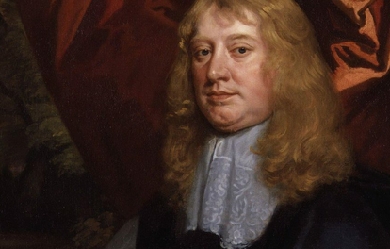
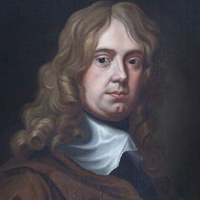
Abraham Cowley (1618– 28 July 1667) was an English poet born in the City of London late in 1618. He was one of the leading English poets of the 17th century, with 14 printings of his Works published between 1668 and 1721. Early life and career His father, a wealthy citizen, who died shortly before his birth, was a stationer. His mother was wholly given to works of devotion, but it happened that there lay in her parlour a copy of The Faerie Queene. This became the favourite reading of her son, and he had read it twice before he was sent to school. As early as 1628, that is, in his tenth year, he composed his Tragicall History of Piramus and Thisbe, an epic romance written in a six-line stanza, a style of his own invention. It is not too much to say that this work is the most astonishing feat of imaginative precocity on record; it is marked by no great faults of immaturity, and possesses constructive merits of a very high order. Two years later the child wrote another and still more ambitious poem, Constantia and Philetus, being sent about the same time to Westminster School. Here he displayed extraordinary mental precocity and versatility, and wrote in his thirteenth year the Elegy on the Death of Dudley, Lord Carlton. These three poems of considerable size, and some smaller ones, were collected in 1633, and published in a volume entitled Poetical Blossoms, dedicated to the head master of the school, and prefaced by many laudatory verses by schoolfellows. The author at once became famous, although he had not, even yet, completed his fifteenth year. His next composition was a pastoral comedy, entitled Love’s Riddle, a marvelous production for a boy of sixteen, airy, correct and harmonious in language, and rapid in movement. The style is not without resemblance to that of Randolph, whose earliest works, however, were at that time only just printed. In 1637 Cowley was elected into Trinity College, Cambridge, where he betook himself with enthusiasm to the study of all kinds of learning, and early distinguished himself as a ripe scholar. Portraits of Cowley, attributed to William Faithorne and Stephen Slaughter, are in Trinity College’s collection. It was about this time that he composed his scriptural epic on the history of King David, one book of which still exists in the Latin original, the rest being superseded in favour of an English version in four books, called the Davideis, which were published after his death. The epic deals with the adventures of King David from his boyhood to the smiting of Amalek by Saul, where it abruptly closes. In 1638 Love’s Riddle and a Latin comedy, the Naufragium Joculare, were printed, and in 1641 the passage of Prince Charles through Cambridge gave occasion to the production of another dramatic work, The Guardian, which was acted before the royal visitor with much success. During the civil war this play was privately performed at Dublin, but it was not printed till 1650. It is bright and amusing, in the style common to the “sons” of Ben Jonson, the university wits who wrote more for the closet than the public stage. Royalist in exile The learned quiet of the young poet’s life was broken up by the Civil War; he warmly espoused the royalist side. He became a fellow of Trinity College, Cambridge, but was ejected by the Parliamentarians in 1643. He made his way to Oxford, where he enjoyed the friendship of Lord Falkland, and was tossed, in the tumult of affairs, into the personal confidence of the royal family itself. After the battle of Marston Moor he followed the queen to Paris, and the exile so commenced lasted twelve years. This period was spent almost entirely in the royal service, “bearing a share in the distresses of the royal family, or labouring in their affairs. To this purpose he performed several dangerous journeys into Jersey, Scotland, Flanders, the Netherlands, or wherever else the king’s troubles required his attendance. But the chief testimony of his fidelity was the laborious service he underwent in maintaining the constant correspondence between the late king and the queen his wife. In that weighty trust he behaved himself with indefatigable integrity and unsuspected secrecy; for he ciphered and deciphered with his own hand the greatest part of all the letters that passed between their majesties, and managed a vast intelligence in many other parts, which for some years together took up all his days, and two or three nights every week.” In spite of these labours he did not refrain from literary industry. During his exile he met with the works of Pindar, and determined to reproduce their lofty lyric passion in English. However, Cowley misunderstood Pindar’s metrical practice and therefore his reproduction of the Pindaric Ode form in English does not accurately reflect Pindar’s poetics. But despite this problem, Cowley’s use of iambic lines of irregular length, pattern, and rhyme scheme was very influential and is still known as English “Pindarick” Ode, or Irregular Ode. One of the most famous odes written after Cowley in the Pindaric tradition is Wordsworth’s “Intimations of Immortality.” During this same time, Cowley occupied himself in writing a history of the Civil War (which did not get published in full until 1973). In the preface to his 1656 Poems, Cowley mentioned that he had completed three books of an epic poem on the Civil War, but had left it unfinished after the First Battle of Newbury when the Royalist cause began to lose significant ground. In the preface Cowley indicated that he had destroyed all copies of the poem, but this was not precisely the truth. In 1697, twelve years after Cowley’s death, a shortened version of the first book of the poem, called A Poem on the Late Civil War was published. It was assumed that the rest of the poem had indeed been destroyed or lost until the mid-20th century when scholar Allan Pritchard discovered the first of two extant manuscript copies of the whole poem among the Cowper family papers. Thus, the three completed books of Cowley’s great (albeit unfinished) English epic, The Civill Warre (otherwise spelled “The Civil War”), was finally published in full for the first time in 1973. In 1647 a collection of his love verses, entitled The Mistress, was published, and in the next year a volume of wretched satires, The Four Ages of England, was brought out under his name, with the composition of which he had nothing to do. In spite of the troubles of the times, so fatal to poetic fame, his reputation steadily increased, and when, on his return to England in 1656, he published a volume of his collected poetical works, he found himself without a rival in public esteem. This volume included the later works already mentioned, the Pindarique Odes, the Davideis, the Mistress and some Miscellanies. Among the latter are to be found Cowley’s most vital pieces. This section of his works opens with the famous aspiration: “What shall I do to be for ever known, And make the coming age my own?” It contains elegies on Wotton, Vandyck, Falkland, William Hervey and Crashaw, the last two being among Cowley’s finest poems, brilliant, sonorous and original; the amusing ballad of The Chronicle, giving a fictitious catalogue of his supposed amours; various gnomic pieces; and some charming paraphrases from Anacreon. The Pindarique Odes contain weighty Lines and passages, buried in irregular and inharmonious masses of moral verbiage. Not more than one or two are good throughout, but a full posy of beauties may easily be culled from them. The long cadences of the Alexandrines with which most of the strophes close, continued to echo in English poetry from Dryden down to Gray, but the Odes themselves, which were found to be obscure by the poet’s contemporaries, immediately fell into disesteem. The Mistress was the most popular poetic reading of the age, and is now the least read of all Cowley’s works. It was the last and most violent expression of the amatory affectation of the 17th century, an affectation which had been endurable in Donne and other early writers because it had been the vehicle of sincere emotion, but was unendurable in Cowley because in him it represented nothing but a perfunctory exercise, a mere exhibition of literary calisthenics. He appears to have been of a cold, or at least of a timid, disposition; in the face of these elaborately erotic volumes, we are told that to the end of his days he never summoned up courage to speak of love to a single woman in real life. The “Leonora” of The Chronicle is said to have been the only woman he ever loved, and she married the brother of his biographer, Sprat. Return to England Soon after his return to England he was seized in mistake for another person, and only obtained his liberty on a bail of £1000. In 1658 he revised and altered his play of The Guardian, and prepared it for the press under the title of The Cutter of Coleman Street, but it did not appear until 1661. Late in 1658 Oliver Cromwell died, and Cowley took advantage of the confusion of affairs to escape to Paris, where he remained until the Restoration brought him back in Charles’s train. He published in 1663 Verses upon several occasions, in which The Complaint is included. He is also known for having provided the earliest reference to coca in English literature, in a poem called “A legend of coca” in his 1662 collection of poems Six Books of Plants. Cowley obtained permission to retire into the country; and through his friend, Lord St Albans, he obtained a property near Chertsey, where, devoting himself to botany and books, he lived in comparative solitude until his death. He took a practical interest in experimental science, and he was one of those advocating the foundation of an academy for the protection of scientific enterprise. Cowley’s pamphlet on The Advancement of Experimental Philosophy, 1661, immediately preceded the foundation of the Royal Society; to which Cowley, in March 1667, at the suggestion of John Evelyn, addressed an ode. He died in the Porch House, in Chertsey, in consequence of having caught a cold while superintending his farm-labourers in the meadows late on a summer evening. On 3 August, Cowley was buried in Westminster Abbey beside the ashes of Chaucer and Spenser, where in 1675 the duke of Buckingham erected a monument to his memory. His Poemata Latina, including six books “Plantarum,” were printed in 1668. The poetry of Cowley rapidly fell into neglect. The works of Cowley were collected in 1668, when Thomas Sprat brought out an edition in folio, to which he prefixed a life of the poet. There were many reprints of this collection, which formed the standard edition till 1881, when it was superseded by Alexander Balloch Grosart’s privately printed edition in two volumes, for the Chertsey Worthies library. The Essays have frequently been revived. A Satire Against Separatists, printed in 1675, has been variously attributed to Cowley and to Peter Hausted. References Wikipedia—https://en.wikipedia.org/wiki/Abraham_Cowley

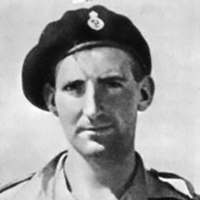
Keith Castellain Douglas (24 January 1920– 9 June 1944) was an English poet noted for his war poetry during the Second World War and his wry memoir of the Western Desert campaign, Alamein to Zem Zem. He was killed in action during the invasion of Normandy. Poetry Douglas described his poetic style as “extrospective”; that is, he focused on external impressions rather than inner emotions. The result is a poetry which, according to his detractors, can be callous in the midst of war’s atrocities. For others, Douglas’s work is powerful and unsettling because its exact descriptions eschew egotism and shift the burden of emotion from the poet to the reader. His best poetry is generally considered to rank alongside the 20th century’s finest soldier-poetry. In his poem, “Desert Flowers” (1943), Douglas mentions World War I poet Isaac Rosenberg, claiming that he is only repeating what Rosenberg has already written. Early life Douglas was born in Tunbridge Wells, Kent, the son of Capt. Keith Sholto Douglas, MC (retired) and Marie Josephine Castellain. His mother became unwell and collapsed in 1924 of encephalitis lethargica, never to fully recover. By 1926, the chicken farm set up by his father had collapsed. Douglas was sent to a preparatory school (Edgeborough School in Guildford) the same year. The family became increasingly poor, and his father had to leave home in early 1928 to seek better employment in Wales. The persistent ill-health of Marie led to the collapse of the marriage of his parents by the end of that year, and his father remarried in 1930. Douglas was deeply hurt by his father not communicating with him after 1928, and when Capt. Douglas did write at last in 1938, Keith did not agree to meet him. In one of his letters written in 1940 Douglas looked back on his childhood: “I lived alone during the most fluid and formative years of my life, and during that time I lived on my imagination, which was so powerful as to persuade me that the things I imagined would come true.” Education Marie Douglas faced extreme financial distress, so much so that only the generosity of the Edgeborough headmaster Mr. James permitted Douglas to attend school in 1930–1931, his last year there. Douglas sat in 1931 for the entrance examination to Christ’s Hospital, where education was free and there was monetary assistance to cover all other costs. He was accepted, and joined Christ’s Hospital, near Horsham, in September 1931, studying there till 1938. It was at this school that his considerable poetic talent and artistic ability were recognised. So was his cavalier attitude to authority and property, which nearly led to expulsion in 1935 over a purloined training rifle. In surprising contrast, he excelled as a member of the school’s Officers Training Corps, particularly enjoying drill, although he was philosophically opposed to militarism. University After his bruising brush with authority in 1935, Douglas settled down to a less troubled and more productive period at school, during which he excelled both at studies and games, and at the end of which he won an open exhibition to Merton College, Oxford in 1938 to read History and English. The First World War-veteran and well-known poet Edmund Blunden was his tutor at Merton, and regarded his poetic talent highly. Blunden sent his poems to T. S. Eliot, the doyen of English poetry, who found Douglas’s verses 'impressive’. Douglas became the editor of Cherwell, and one of the poets anthologised in the collection Eight Oxford Poets (1941), although by the time that volume appeared he was already in the army. He does not seem to have been acquainted with somewhat junior but contemporary Oxford poets such as Sidney Keyes, Drummond Allison, John Heath-Stubbs and Philip Larkin, who would make names for themselves. At Oxford, Douglas entered a relationship with a sophisticated Chinese student named Yingcheng, or Betty Sze, the daughter of a diplomat. Her own sentiments towards him were less intense, and she refused to marry him. Yingcheng remained the unrequited love of Douglas’s life and the source of his best romantic verse, despite his involvements with other women later, most notably Milena Guiterrez Penya. Military service Within days of the declaration of war he reported to an army recruiting centre with the intention of joining a cavalry regiment, but like many others keen to serve he had to wait, and it was not until July 1940 that he started his training. On 1 February 1941 he passed out from the Royal Military College, Sandhurst, the British Army training academy for officers, and was commissioned into the 2nd Derbyshire Yeomanry at Ripon. He was posted to the Middle East in July 1941 and transferred to the Nottinghamshire (Sherwood Rangers) Yeomanry. Posted initially at Cairo and Palestine, he found himself stuck at Headquarters twenty miles behind El Alamein as a camouflage officer as the Second Battle of El Alamein began. At dawn on 24 October 1942, the Regiment advanced, and suffered numerous casualties from enemy anti-tank guns. Chafing at inactivity, Douglas took off against orders on 27 October, drove to the Regimental HQ in a truck, and reported to the C.O., Colonel E. O. Kellett, lying that he had been instructed to go to the front (luckily this escapade did not land him in serious trouble; in a reprise of 1935, Douglas got off with an apology). Desperately needing officer replacements, the Colonel posted him to A Squadron, and gave him the opportunity to take part as a fighting tanker in the Eighth Army’s victorious sweep through North Africa vividly recounted in his memoir Alamein to Zem Zem, illustrated with his own drawings. Death Captain Douglas returned from North Africa to England in December 1943 and took part in the D-Day invasion of Normandy on 6 June 1944. He was killed by enemy mortar fire on 9 June, while his regiment was advancing from Bayeux. Captain Leslie Skinner (regimental chaplain) buried him by a hedge, close to where he had died on "forward slopes point 102". Shortly after the war his remains were reburied at Tilly-sur-Seulles War Cemetery (14 km south of Bayeux) in plot 1, row E, grave number 2. Bibliography * Selected Poems (Keith Douglas, J.C. Hall, Norman Nicholson) (1943) * Alamein to Zem Zem (1946), reprinted 1966 * Collected Poems (Editions Poetry London 1951), reprinted 1966 * Selected Poems (Faber 1964) * The Complete Poems (Faber & Faber 1978), reprinted in 1987, 1997, 2011 * Alldritt, Keith. Modernism in the Second World War ISBN 0-8204-0865-4 * The Letters of Keith Douglas edited by Desmond Graham (Carcanet Press, 2000) ISBN 978 1 857544 77 0 Biography * Keith Douglas, 1920–1944 by Desmond Graham (OUP, 1974) ISBN 0-19-211716-5 References Wikipedia—https://en.wikipedia.org/wiki/Keith_Douglas
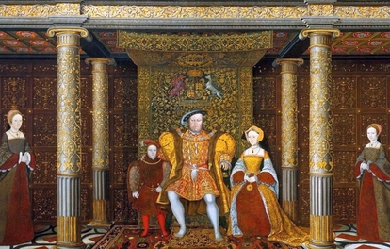
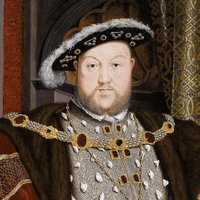
Henry VIII (28 June 1491– 28 January 1547) was King of England from 21 April 1509 until his death. He was the first English King of Ireland, and continued the nominal claim by English monarchs to the Kingdom of France. Henry was the second Tudor monarch, succeeding his father, Henry VII. Henry is known for his consequential role in the separation of the Church of England from the Roman Catholic Church, besides his six marriages and many extramarital affairs, as well as his effort to obtain an annulment of his marriage to Catherine of Aragon, which led to conflict with the Pope. His disagreements with the Pope led Henry to separate the Church of England from papal authority, with himself as king and as the Supreme Head of the Church of England; the disputes also led to the Dissolution of the Monasteries. His principal dispute was with papal authority rather than with doctrinal matters, and he remained a believer in core Catholic theological teachings despite his excommunication from the Roman Catholic Church. Henry oversaw the legal union of England and Wales with the Laws in Wales Acts 1535 and 1542. He is also well known for a long personal rivalry with both Francis I of France and the Holy Roman Emperor Charles V, with whom he frequently warred. Domestically, Henry is known for his radical changes to the English Constitution, ushering in the theory of the divine right of kings to England. Besides asserting the sovereign’s supremacy over the Church of England, thus initiating the English Reformation, he greatly expanded royal power. Charges of treason and heresy were commonly used to quash dissent, and those accused were often executed without a formal trial, by means of bills of attainder. He achieved many of his political aims through the work of his chief ministers, some of whom were banished or executed when they fell out of his favour. People such as Thomas Wolsey, Thomas More, Thomas Cromwell, Richard Rich, and Thomas Cranmer figured prominently in Henry’s administration. He was an extravagant spender and used the proceeds from the Dissolution of the Monasteries and acts of the Reformation Parliament to convert money into royal revenue that was formerly paid to Rome. Despite the influx of money from these sources, Henry was continually on the verge of financial ruin due to his personal extravagance as well as his numerous costly continental wars. His contemporaries considered Henry in his prime to be an attractive, educated, and accomplished king, and he has been described as “one of the most charismatic rulers to sit on the English throne”. Besides ruling with considerable power, he was also an author and composer. His desire to provide England with a male heir stemmed partly from personal vanity and partly from his belief that a daughter would be unable to consolidate Tudor power and maintain the fragile peace that existed following the Wars of the Roses. This led to the two things for which Henry is most remembered: his six marriages and his break with the pope (who would not allow an annulment of Henry’s first marriage). As he aged, Henry became severely obese and his health suffered, contributing to his death in 1547. He is frequently characterised in his later life as a lustful, egotistical, harsh, and insecure king. He was succeeded by his son Edward VI. Early years Born 28 June 1491 at the Palace of Placentia in Greenwich, London, Henry Tudor was the third child and second son of Henry VII and Elizabeth of York. Of the young Henry’s six siblings, only three– Arthur, Prince of Wales; Margaret; and Mary– survived infancy. He was baptised by Richard Fox, the Bishop of Exeter, at a church of the Observant Franciscans close to the palace. In 1493, at the age of two, Henry was appointed Constable of Dover Castle and Lord Warden of the Cinque Ports. He was subsequently appointed Earl Marshal of England and Lord Lieutenant of Ireland at age three, and was inducted into the Order of the Bath soon after. The day after the ceremony he was created Duke of York and a month or so later made Warden of the Scottish Marches. In May 1495, he was appointed to the Order of the Garter. Henry was given a first-rate education from leading tutors, becoming fluent in Latin and French, and learning at least some Italian. Not much is known about his early life– save for his appointments– because he was not expected to become king. In November 1501, Henry also played a considerable part in the ceremonies surrounding the marriage of his brother, Prince Arthur, to Catherine of Aragon, the youngest surviving child of King Ferdinand II of Aragon and Queen Isabella I of Castile. As Duke of York, Henry used the arms of his father as king, differenced by a label of three points ermine. In 1502, Arthur died at the age of 15 of sweating sickness, just 20 weeks after his marriage to Catherine. Arthur’s death thrust all his duties upon his younger brother, the 10-year-old Henry. After a little debate, Henry became the new Duke of Cornwall in October 1502, and the new Prince of Wales and Earl of Chester in February 1503. Henry VII gave the boy few tasks. Young Henry was strictly supervised and did not appear in public. As a result, the young Henry would later ascend the throne “untrained in the exacting art of kingship”. Henry VII renewed his efforts to seal a marital alliance between England and Spain, by offering his second son in marriage to Arthur’s widow Catherine. Both Isabella and Henry VII were keen on the idea, which had arisen very shortly after Arthur’s death. On 23 June 1503, a treaty was signed for their marriage, and they were betrothed two days later. A papal dispensation was only needed for the “impediment of public honesty” if the marriage had not been consummated as Catherine and her duenna claimed, but Henry VII and the Spanish ambassador set out instead to obtain a dispensation for “affinity”, which took account of the possibility of consummation. The young Henry’s age, only eleven, prevented cohabitation. Isabella’s death in 1504, and the ensuing problems of succession in Castile, complicated matters. Her father preferred her to stay in England, but Henry VII’s relations with Ferdinand had deteriorated. Catherine was therefore left in limbo for some time, culminating in Prince Henry’s rejection of the marriage as soon he was able, at the age of 14. Ferdinand’s solution was to make his daughter ambassador, allowing her to stay in England indefinitely. Devout, she began to believe that it was God’s will that she marry the prince despite his opposition. Early reign Henry VII died on 21 April 1509, and the 17-year-old Henry succeeded him as king. Soon after his father’s burial on 10 May, Henry suddenly declared that he would indeed marry Catherine, leaving unresolved several issues concerning the papal dispensation and a missing part of the marriage portion. The new king maintained that it had been his father’s dying wish that he marry Catherine. Whether or not this was true, it was certainly convenient. Holy Roman Emperor Maximilian I had been attempting to marry his granddaughter (and Catherine’s niece) Eleanor to Henry; she had now been jilted. Henry’s wedding to Catherine was kept low-key and was held at the friar’s church in Greenwich on 11 June 1509. On 23 June 1509, Henry led the now 23-year-old Catherine from the Tower of London to Westminster Abbey for their coronation, which took place the following day. It was a grand affair: the king’s passage was lined with tapestries and laid with fine cloth. Following the ceremony, there was a grand banquet in Westminster Hall. As Catherine wrote to her father, “our time is spent in continuous festival”. Two days after Henry’s coronation, he arrested his father’s two most unpopular ministers, Sir Richard Empson and Edmund Dudley. They were charged with high treason and were executed in 1510. Historian Ian Crofton has maintained that such executions would become Henry’s primary tactic for dealing with those who stood in his way; the two executions were certainly not the last. Henry also returned to the public some of the money supposedly extorted by the two ministers. By contrast, Henry’s view of the House of York– potential rival claimants for the throne– was more moderate than his father’s had been. Several who had been imprisoned by his father, including the Marquess of Dorset, were pardoned. Others (most notably Edmund de la Pole) went unreconciled; de la Pole was eventually beheaded in 1513, an execution prompted by his brother Richard siding against the king. Soon after, Catherine conceived, but the child, a girl, was stillborn on 31 January 1510. About four months later, Catherine again became pregnant. On New Year’s Day 1511, the child– Henry– was born. After the grief of losing their first child, the couple were pleased to have a boy and there were festivities to celebrate, including a jousting tournament. However, the child died seven weeks later. Catherine had two stillborn sons in 1514 and 1515, but gave birth in February 1516 to a girl, Mary. Relations between Henry and Catherine had been strained, but they eased slightly after Mary’s birth. Although Henry’s marriage to Catherine has since been described as “unusually good”, it is known that Henry took mistresses. It was revealed in 1510 that Henry had been conducting an affair with one of the sisters of Edward Stafford, 3rd Duke of Buckingham, either Elizabeth or Anne Hastings, Countess of Huntingdon. The most significant mistress for about three years, starting in 1516, was Elizabeth Blount. Blount is one of only two completely undisputed mistresses, few for a virile young king. Exactly how many Henry had is disputed: David Loades believes Henry had mistresses “only to a very limited extent”, whilst Alison Weir believes there were numerous other affairs. Catherine did not protest, and in 1518 fell pregnant again with another girl, who was also stillborn. Blount gave birth in June 1519 to Henry’s illegitimate son, Henry FitzRoy. The young boy was made Duke of Richmond in June 1525 in what some thought was one step on the path to his eventual legitimisation. In 1533, FitzRoy married Mary Howard, but died childless three years later. At the time of Richmond’s death in June 1536, Parliament was enacting the Second Succession Act, which could have allowed him to become king. France and the Habsburgs In 1510, France, with a fragile alliance with the Holy Roman Empire in the League of Cambrai, was winning a war against Venice. Henry renewed his father’s friendship with Louis XII of France, an issue that divided his council. Certainly war with the combined might of the two powers would have been exceedingly difficult. Shortly thereafter, however, Henry also signed a pact with Ferdinand. After Pope Julius II created the anti-French Holy League in October 1511, Henry followed Ferdinand’s lead and brought England into the new League. An initial joint Anglo-Spanish attack was planned for the spring to recover Aquitaine for England, the start of making Henry’s dreams of ruling France a reality. The attack, however, following a formal declaration of war in April 1512, was not led by Henry personally and was a considerable failure; Ferdinand used it simply to further his own ends, and it strained the Anglo-Spanish alliance. Nevertheless, the French were pushed out of Italy soon after, and the alliance survived, with both parties keen to win further victories over the French. Henry then pulled off a diplomatic coup by convincing the Emperor to join the Holy League. Remarkably, Henry had also secured the promised title of “Most Christian King of France” from Julius and possibly coronation by the Pope himself in Paris, if only Louis could be defeated. On 30 June 1513, Henry invaded France, and his troops defeated a French army at the Battle of the Spurs– a relatively minor result, but one which was seized on by the English for propaganda purposes. Soon after, the English took Thérouanne and handed it over to Maximillian; Tournai, a more significant settlement, followed. Henry had led the army personally, complete with large entourage. His absence from the country, however, had prompted his brother-in-law, James IV of Scotland, to invade England at the behest of Louis. Nevertheless, the English army, overseen by Queen Catherine, decisively defeated the Scots at the Battle of Flodden on 9 September 1513. Among the dead was the Scottish king, thus ending Scotland’s brief involvement in the war. These campaigns had given Henry a taste of the military success he so desired. However, despite initial indications, he decided not to pursue a 1514 campaign. He had been supporting Ferdinand and Maximilian financially during the campaign but had received little in return; England’s coffers were now empty. With the replacement of Julius by Pope Leo X, who was inclined to negotiate for peace with France, Henry signed his own treaty with Louis: his sister Mary would become Louis’ wife, having previously been pledged to the younger Charles, and peace was secured for eight years, a remarkably long time. Charles V ascended the thrones of both Spain and the Holy Roman Empire following the deaths of his grandfathers, Ferdinand in 1516 and Maximilian in 1519. Francis I likewise became king of France upon the death of Louis in 1515, leaving three relatively young rulers and an opportunity for a clean slate. The careful diplomacy of Cardinal Thomas Wolsey had resulted in the Treaty of London in 1518, aimed at uniting the kingdoms of western Europe in the wake of a new Ottoman threat, and it seemed that peace might be secured. Henry met Francis I on 7 June 1520 at the Field of the Cloth of Gold near Calais for a fortnight of lavish entertainment. Both hoped for friendly relations in place of the wars of the previous decade. The strong air of competition laid to rest any hopes of a renewal of the Treaty of London, however, and conflict was inevitable. Henry had more in common with Charles, whom he met once before and once after Francis. Charles brought the Empire into war with France in 1521; Henry offered to mediate, but little was achieved and by the end of the year Henry had aligned England with Charles. He still clung to his previous aim of restoring English lands in France, but also sought to secure an alliance with Burgundy, then part of Charles’ realm, and the continued support of Charles. A small English attack in the north of France made up little ground. Charles defeated and captured Francis at Pavia and could dictate peace; but he believed he owed Henry nothing. Sensing this, Henry decided to take England out of the war before his ally, signing the Treaty of the More on 30 August 1525. Annulment from Catherine During his first marriage to Catherine of Aragon, Henry conducted an affair with Mary Boleyn, Catherine’s lady-in-waiting. There has been speculation that Mary’s two children, Henry and Catherine Carey, were fathered by Henry, but this has never been proved, and the King never acknowledged them as he did Henry FitzRoy. In 1525, as Henry grew more impatient with Catherine’s inability to produce the male heir he desired, he became enamoured of Mary Boleyn’s sister, Anne, then a charismatic young woman of 25 in the Queen’s entourage. Anne, however, resisted his attempts to seduce her, and refused to become his mistress as her sister Mary Boleyn had. It was in this context that Henry considered his three options for finding a dynastic successor and hence resolving what came to be described at court as the King’s “great matter”. These options were legitimising Henry FitzRoy, which would take the intervention of the pope and would be open to challenge; marrying off Mary as soon as possible and hoping for a grandson to inherit directly, but Mary was considered unlikely to conceive before Henry’s death; or somehow rejecting Catherine and marrying someone else of child-bearing age. Probably seeing the possibility of marrying Anne, the third was ultimately the most attractive possibility to the 34-year-old Henry, and it soon became the King’s absorbing desire to annul his marriage to the now 40-year-old Catherine. It was a decision that would lead Henry to reject papal authority and initiate the English Reformation. Henry’s precise motivations and intentions over the coming years are not widely agreed on. Henry himself, at least in the early part of his reign, was a devout and well-informed Catholic to the extent that his 1521 publication Assertio Septem Sacramentorum ("Defence of the Seven Sacraments") earned him the title of Fidei Defensor (Defender of the Faith) from Pope Leo X. The work represented a staunch defence of papal supremacy, albeit one couched in somewhat contingent terms. It is not clear exactly when Henry changed his mind on the issue as he grew more intent on a second marriage. Certainly, by 1527 he had convinced himself that in marrying Catherine, his brother’s wife, he had acted contrary to Leviticus 20:21, an impediment the Pope had never had (he now believed) the authority to dispense with. It was this argument Henry took to Pope Clement VII in 1527 in the hope of having his marriage to Catherine annulled, forgoing at least one less openly defiant line of attack. In going public, all hope of tempting Catherine to retire to a nunnery or otherwise stay quiet were lost. Henry sent his secretary, William Knight, to appeal directly to the Holy See by way of a deceptively worded draft papal bull. Knight was unsuccessful; the Pope could not be misled so easily. Other missions concentrated on arranging an ecclesiastical court to meet in England, with a representative from Clement VII. Though Clement agreed to the creation of such a court, he never had any intention of empowering his legate, Lorenzo Campeggio, to decide in Henry’s favour. This bias was perhaps the result of pressure from Charles V, Catherine’s nephew, though it is not clear how far this influenced either Campeggio or the Pope. After less than two months of hearing evidence, Clement called the case back to Rome in July 1529, from which it was clear that it would never re-emerge. With the chance for an annulment lost and England’s place in Europe forfeit, Cardinal Wolsey bore the blame. He was charged with praemunire in October 1529 and his fall from grace was “sudden and total”. Briefly reconciled with Henry (and officially pardoned) in the first half of 1530, he was charged once more in November 1530, this time for treason, but died while awaiting trial. After a short period in which Henry took government upon his own shoulders, Sir Thomas More took on the role of Lord Chancellor and chief minister. Intelligent and able, but also a devout Catholic and opponent of the annulment, More initially cooperated with the king’s new policy, denouncing Wolsey in Parliament. A year later, Catherine was banished from court, and her rooms were given to Anne. Anne was an unusually educated and intellectual woman for her time, and was keenly absorbed and engaged with the ideas of the Protestant Reformers, though the extent to which she herself was a committed Protestant is much debated. When Archbishop of Canterbury William Warham died, Anne’s influence and the need to find a trustworthy supporter of the annulment had Thomas Cranmer appointed to the vacant position. This was approved by the Pope, unaware of the King’s nascent plans for the Church. Marriage to Anne Boleyn In the winter of 1532, Henry met with Francis I at Calais and enlisted the support of the French king for his new marriage. Immediately upon returning to Dover in England, Henry, now 41, and Anne, now 32, went through a secret wedding service. She soon became pregnant, and there was a second wedding service in London on 25 January 1533. On 23 May 1533, Cranmer, sitting in judgment at a special court convened at Dunstable Priory to rule on the validity of the king’s marriage to Catherine of Aragon, declared the marriage of Henry and Catherine null and void. Five days later, on 28 May 1533, Cranmer declared the marriage of Henry and Anne to be valid. Catherine was formally stripped of her title as queen, becoming instead “princess dowager” as the widow of Arthur. In her place, Anne was crowned queen consort on 1 June 1533. The queen gave birth to a daughter slightly prematurely on 7 September 1533. The child was christened Elizabeth, in honour of Henry’s mother, Elizabeth of York. Following the marriage, there was a period of consolidation taking the form of a series of statutes of the Reformation Parliament aimed at finding solutions to any remaining issues, whilst protecting the new reforms from challenge, convincing the public of their legitimacy, and exposing and dealing with opponents. Although the canon law was dealt with at length by Cranmer and others, these acts were advanced by Thomas Cromwell, Thomas Audley and the Duke of Norfolk and indeed by Henry himself. With this process complete, in May 1532 More resigned as Lord Chancellor, leaving Cromwell as Henry’s chief minister. With the Act of Succession 1533, Catherine’s daughter, Mary, was declared illegitimate; Henry’s marriage to Anne was declared legitimate; and Anne’s issue was decided to be next in the line of succession. With the Acts of Supremacy in 1534, Parliament also recognised the King’s status as head of the church in England and, with the Act in Restraint of Appeals in 1532, abolished the right of appeal to Rome. It was only then that Pope Clement took the step of excommunicating Henry and Thomas Cranmer, although the excommunication was not made official until some time later. The king and queen were not pleased with married life. The royal couple enjoyed periods of calm and affection, but Anne refused to play the submissive role expected of her. The vivacity and opinionated intellect that had made her so attractive as an illicit lover made her too independent for the largely ceremonial role of a royal wife and it made her many enemies. For his part, Henry disliked Anne’s constant irritability and violent temper. After a false pregnancy or miscarriage in 1534, he saw her failure to give him a son as a betrayal. As early as Christmas 1534, Henry was discussing with Cranmer and Cromwell the chances of leaving Anne without having to return to Catherine. Henry is traditionally believed to have had an affair with Margaret ("Madge") Shelton in 1535, although historian Antonia Fraser argues that Henry in fact had an affair with her sister Mary Shelton. Opposition to Henry’s religious policies was quickly suppressed in England. A number of dissenting monks, including the first Carthusian Martyrs, were executed and many more pilloried. The most prominent resisters included John Fisher, Bishop of Rochester, and Sir Thomas More, both of whom refused to take the oath to the King. Neither Henry nor Cromwell sought to have the men executed; rather, they hoped that the two might change their minds and save themselves. Fisher openly rejected Henry as supreme head of the Church, but More was careful to avoid openly breaking the Treason Act, which (unlike later acts) did not forbid mere silence. Both men were subsequently convicted of high treason, however– More on the evidence of a single conversation with Richard Rich, the Solicitor General. Both were duly executed in the summer of 1535. These suppressions, as well as the Dissolution of the Lesser Monasteries Act of 1536, in turn contributed to more general resistance to Henry’s reforms, most notably in the Pilgrimage of Grace, a large uprising in northern England in October 1536. Some 20,000 to 40,000 rebels were led by Robert Aske, together with parts of the northern nobility. Henry VIII promised the rebels he would pardon them and thanked them for raising the issues. Aske told the rebels they had been successful and they could disperse and go home. Henry saw the rebels as traitors and did not feel obliged to keep his promises with them, so when further violence occurred after Henry’s offer of a pardon he was quick to break his promise of clemency. The leaders, including Aske, were arrested and executed for treason. In total, about 200 rebels were executed, and the disturbances ended. Execution of Anne Boleyn On 8 January 1536 news reached the king and the queen that Catherine of Aragon had died. Henry called for public displays of joy regarding Catherine’s death. The queen was pregnant again, and she was aware of the consequences if she failed to give birth to a son. Later that month, the King was unhorsed in a tournament and was badly injured and it seemed for a time that his life was in danger. When news of this accident reached the queen, she was sent into shock and miscarried a male child that was about 15 weeks old, on the day of Catherine’s funeral, 29 January 1536. For most observers, this personal loss was the beginning of the end of the royal marriage. Given the king’s desperate desire for a son, the sequence of Anne’s pregnancies has attracted much interest. Author Mike Ashley speculated that Anne had two stillborn children after Elizabeth’s birth and before the birth of the male child she miscarried in 1536. Most sources attest only to the birth of Elizabeth in September 1533, a possible miscarriage in the summer of 1534, and the miscarriage of a male child, of almost four months gestation, in January 1536. Although the Boleyn family still held important positions on the Privy Council, Anne had many enemies, including the Duke of Suffolk. Even her own uncle, the Duke of Norfolk, had come to resent her attitude to her power. The Boleyns preferred France over the Emperor as a potential ally, but the King’s favour had swung towards the latter (partly because of Cromwell), damaging the family’s influence. Also opposed to Anne were supporters of reconciliation with Princess Mary (among them the former supporters of Catherine), who had reached maturity. A second annulment was now a real possibility, although it is commonly believed that it was Cromwell’s anti-Boleyn influence that led opponents to look for a way of having her executed. Anne’s downfall came shortly after she had recovered from her final miscarriage. Whether it was primarily the result of allegations of conspiracy, adultery, or witchcraft remains a matter of debate among historians. Early signs of a fall from grace included the King’s new mistress, the 28-year-old Jane Seymour, being moved into new quarters, and Anne’s brother, George Boleyn, being refused the Order of the Garter, which was instead given to Nicholas Carew. Between 30 April and 2 May, five men, including Anne’s brother, were arrested on charges of treasonable adultery and accused of having sexual relationships with the queen. Anne was also arrested, accused of treasonous adultery and incest. Although the evidence against them was unconvincing, the accused were found guilty and condemned to death. George Boleyn and the other accused men were executed on 17 May 1536. At 8 am on 19 May 1536, Anne, age 36, was executed on Tower Green. Marriage to Jane Seymour; domestic and foreign affairs The day after Anne’s execution in 1536 the 45-year-old Henry became engaged to Seymour, who had been one of the Queen’s ladies-in-waiting. They were married ten days later. On 12 October 1537, Jane gave birth to a son, Prince Edward, the future Edward VI. The birth was difficult, and the queen died on 24 October 1537 from an infection and was buried in Windsor. The euphoria that had accompanied Edward’s birth became sorrow, but it was only over time that Henry came to long for his wife. At the time, Henry recovered quickly from the shock. Measures were immediately put in place to find another wife for Henry, which, at the insistence of Cromwell and the court, were focused on the European continent. With Charles V distracted by the internal politics of his many kingdoms and external threats, and Henry and Francis on relatively good terms, domestic and not foreign policy issues had been Henry’s priority in the first half of the 1530s. In 1536, for example, Henry granted his assent to the Laws in Wales Act 1535, which legally annexed Wales, uniting England and Wales into a single nation. This was followed by the Second Succession Act (the Act of Succession 1536), which declared Henry’s children by Jane to be next in the line of succession and declared both Mary and Elizabeth illegitimate, thus excluding them from the throne. The king was also granted the power to further determine the line of succession in his will, should he have no further issue. However, when Charles and Francis made peace in January 1539, Henry became increasingly paranoid, perhaps as a result of receiving a constant list of threats to the kingdom (real or imaginary, minor or serious) supplied by Cromwell in his role as spymaster. Enriched by the dissolution of the monasteries, Henry used some of his financial reserves to build a series of coastal defences and set some aside for use in the event of a Franco-German invasion. Marriage to Anne of Cleves Having considered the matter, Cromwell, now Earl of Essex, suggested Anne, the 25-year-old sister of the Duke of Cleves, who was seen as an important ally in case of a Roman Catholic attack on England, for the duke fell between Lutheranism and Catholicism. Hans Holbein the Younger was dispatched to Cleves to paint a portrait of Anne for the king. Despite speculation that Holbein painted her in an overly flattering light, it is more likely that the portrait was accurate; Holbein remained in favour at court. After seeing Holbein’s portrait, and urged on by the complimentary description of Anne given by his courtiers, the 49-year-old king agreed to wed Anne. However, it was not long before Henry wished to annul the marriage so he could marry another. Anne did not argue, and confirmed that the marriage had never been consummated. Anne’s previous betrothal to the Duke of Lorraine’s son provided further grounds for the annulment. The marriage was subsequently dissolved, and Anne received the title of “The King’s Sister”, two houses and a generous allowance. It was soon clear that Henry had fallen for the 17-year-old Catherine Howard, the Duke of Norfolk’s niece, the politics of which worried Cromwell, for Norfolk was a political opponent. Shortly after, the religious reformers (and protégés of Cromwell) Robert Barnes, William Jerome and Thomas Garret were burned as heretics. Cromwell, meanwhile, fell out of favour although it is unclear exactly why, for there is little evidence of differences of domestic or foreign policy. Despite his role, he was never formally accused of being responsible for Henry’s failed marriage. Cromwell was now surrounded by enemies at court, with Norfolk also able to draw on his niece’s position. Cromwell was charged with treason, selling export licences, granting passports, and drawing up commissions without permission, and may also have been blamed for the failure of the foreign policy that accompanied the attempted marriage to Anne. He was subsequently attainted and beheaded. Marriage to Catherine Howard On 28 July 1540 (the same day Cromwell was executed), Henry married the young Catherine Howard, a first cousin and lady-in-waiting of Anne Boleyn. He was absolutely delighted with his new queen, and awarded her the lands of Cromwell and a vast array of jewellery. Soon after the marriage, however, Queen Catherine had an affair with the courtier Thomas Culpeper. She also employed Francis Dereham, who had previously been informally engaged to her and had an affair with her prior to her marriage, as her secretary. The court was informed of her affair with Dereham whilst Henry was away; they dispatched Thomas Cranmer to investigate, who brought evidence of Queen Catherine’s previous affair with Dereham to the king’s notice. Though Henry originally refused to believe the allegations, Dereham confessed. It took another meeting of the council, however, before Henry believed the accusations against Dereham and went into a rage, blaming the council before consoling himself in hunting. When questioned, the queen could have admitted a prior contract to marry Dereham, which would have made her subsequent marriage to Henry invalid, but she instead claimed that Dereham had forced her to enter into an adulterous relationship. Dereham, meanwhile, exposed Queen Catherine’s relationship with Culpeper. Culpeper and Dereham were both executed, and Catherine too was beheaded on 13 February 1542. Shrines destroyed and monasteries dissolved In 1538, the chief minister T. Cromwell pursued an extensive campaign against what is termed “idolatry” by the followers of the old religion, culminating in September with the dismantling of the shrine of St. Thomas Becket at Canterbury. As a consequence, the king was excommunicated by the Pope Paul III on 17 December of the same year. In 1540, Henry sanctioned the complete destruction of shrines to saints. In 1542, England’s remaining monasteries were all dissolved, and their property transferred to the Crown. Abbots and priors lost their seats in the House of Lords; only archbishops and bishops remained. Consequently, the Lords Spiritual– as members of the clergy with seats in the House of Lords were known– were for the first time outnumbered by the Lords Temporal. Second invasion of France and the “Rough Wooing” of Scotland The 1539 alliance between Francis and Charles had soured, eventually degenerating into renewed war. With Catherine of Aragon and Anne Boleyn dead, relations between Charles and Henry improved considerably, and Henry concluded a secret alliance with the Emperor and decided to enter the Italian War in favour of his new ally. An invasion of France was planned for 1543. In preparation for it, Henry moved to eliminate the potential threat of Scotland under the youthful James V. Victory would continue the Reformation in Scotland, which was still Catholic, and Henry hoped to unite the crowns of England and Scotland by marriage of James’ daughter, the future Mary, Queen of Scots, to his son Edward. Henry made war on Scotland for several years in pursuit of this goal, a campaign dubbed by Victorian chroniclers as “the Rough Wooing”. The Scots were defeated at Battle of Solway Moss on 24 November 1542, and James died on 15 December. The Scottish Regent Arran agreed to the marriage in the Treaty of Greenwich on 1 July 1543. Despite the success with Scotland, Henry hesitated to invade France, annoying Charles. Henry finally went to France in June 1544 with a two-pronged attack. One force under Norfolk ineffectively besieged Montreuil. The other, under Suffolk, laid siege to Boulogne. Henry later took personal command, and Boulogne fell on 18 September 1544. However, Henry had refused Charles’ request to march against Paris. Charles’ own campaign fizzled, and he made peace with France that same day. Henry was left alone against France, unable to make peace. Francis attempted to invade England in the summer of 1545, but reached only the Isle of Wight before being repulsed. Out of money, France and England signed the Treaty of Camp on 7 June 1546. Henry secured Boulogne for eight years. The city was then to be returned to France for 2 million crowns (£750,000). Henry needed the money; the 1544 campaign had cost £650,000, and England was once again bankrupt. Meanwhile, though Henry still clung to the Treaty of Greenwich, the Scots repudiated it in December 1543. Henry launched another war on Scotland, sending an army to burn Edinburgh and lay waste to the country. The Scots would not submit, though. Defeat at Ancrum Moor prompted a second invasion force. This war was nominally ended by the Treaty of Camp, although unrest continued in Scotland, including French and English interventions, up to Henry’s death. Marriage to Catherine Parr Henry married his last wife, the wealthy widow Catherine Parr, in July 1543. A reformer at heart, she argued with Henry over religion. Ultimately, Henry remained committed to an idiosyncratic mixture of Catholicism and Protestantism; the reactionary mood which had gained ground following the fall of Cromwell had neither eliminated his Protestant streak nor been overcome by it. Parr helped reconcile Henry with his daughters Mary and Elizabeth. In 1543, an Act of Parliament put the daughters back in the line of succession after Edward, Prince of Wales. The same act allowed Henry to determine further succession to the throne in his will. Physical decline Late in life, Henry became obese, with a waist measurement of 54 inches (140 cm), and had to be moved about with the help of mechanical inventions. He was covered with painful, pus-filled boils and possibly suffered from gout. His obesity and other medical problems can be traced from the jousting accident in 1536, in which he suffered a leg wound. The accident re-opened and aggravated a previous injury he had sustained years earlier, to the extent that his doctors found it difficult to treat. The wound festered for the remainder of his life and became ulcerated, thus preventing him from maintaining the level of physical activity he had previously enjoyed. The jousting accident is also believed to have caused Henry’s mood swings, which may have had a dramatic effect on his personality and temperament. The theory that Henry suffered from syphilis has been dismissed by most historians. A more recent theory suggests that Henry’s medical symptoms are characteristic of untreated type 2 diabetes. Alternatively, his wives’ pattern of pregnancies and his mental deterioration have led some to suggest that the king may have been Kell positive and suffered from McLeod syndrome. According to another study, Henry VIII’s history and body morphology may have been the result of traumatic brain injury after his 1536 jousting accident, which in turn led to a neuroendocrine cause of his obesity. This analysis identifies growth hormone deficiency (GHD) as the source for his increased adiposity but also significant behavioural changes noted in his later years, including his multiple marriages. Death and burial Henry’s obesity hastened his death at the age of 55, which occurred on 28 January 1547 in the Palace of Whitehall, on what would have been his father’s 90th birthday. He allegedly uttered his last words: “Monks! Monks! Monks!” perhaps in reference to the monks he caused to be evicted during the Dissolution of the Monasteries. On 14 February 1547 Henry’s coffin lay overnight at Syon Monastery, en route for burial in St George’s Chapel, Windsor Castle. Twelve years before in 1535 a Franciscan friar named William Peyto (or Peto, Petow) (died 1558 or 1559), had preached before the King at Greenwich Palace “that God’s judgements were ready to fall upon his head and that dogs would lick his blood, as they had done to Ahab”, whose infamy rests upon 1 Kings 16:33: “And Ahab did more to provoke the Lord God of Israel to anger than all the kings of Israel that were before him”. The prophecy was said to have been fulfilled during this night at Syon, when some “corrupted matter of a bloody colour” fell from the coffin to the floor. Henry VIII was interred in St George’s Chapel in Windsor Castle, next to Jane Seymour. Over a hundred years later, King Charles I (1625–1649) was buried in the same vault. Succession After his death, Henry’s only legitimate son, Edward, inherited the Crown, becoming Edward VI (1547–1553). Since Edward was then only nine years old, he could not exercise actual power. Rather, Henry’s will designated 16 executors to serve on a council of regency until Edward reached the age of 18. The executors chose Edward Seymour, 1st Earl of Hertford, Jane Seymour’s elder brother, to be Lord Protector of the Realm. If Edward went childless, the throne was to pass to Mary, Henry VIII’s daughter by Catherine of Aragon, and her heirs. If Mary’s issue failed, the crown was to go to Elizabeth, Henry’s daughter by Anne Boleyn, and her heirs. Finally, if Elizabeth’s line became extinct, the crown was to be inherited by the descendants of Henry VIII’s deceased younger sister, Queen Mary of France, the Greys. The descendants of Henry’s sister Margaret– the Stuarts, rulers of Scotland– were thereby excluded from the succession. This final provision failed when James VI of Scotland became James I of England upon Elizabeth’s death. Public image Henry cultivated the image of a Renaissance man, and his court was a centre of scholarly and artistic innovation and glamorous excess, epitomised by the Field of the Cloth of Gold. He scouted the country for choirboys, taking some directly from Wolsey’s choir, and introduced Renaissance music into court. Musicians included Benedict de Opitiis, Richard Sampson, Ambrose Lupo, and Venetian organist Dionisio Memo. Henry himself kept a considerable collection of instruments; he was skilled on the lute, could play the organ, and was a talented player of the virginals. He could also sight read music and sing well. He was an accomplished musician, author, and poet; his best known piece of music is “Pastime with Good Company” ("The Kynges Ballade"). He is often reputed to have written “Greensleeves” but probably did not. He was an avid gambler and dice player, and excelled at sports, especially jousting, hunting, and real tennis. He was known for his strong defence of conventional Christian piety. The King was involved in the original construction and improvement of several significant buildings, including Nonsuch Palace, King’s College Chapel, Cambridge and Westminster Abbey in London. Many of the existing buildings Henry improved were properties confiscated from Wolsey, such as Christ Church, Oxford; Hampton Court Palace; the Palace of Whitehall; and Trinity College, Cambridge. Henry was an intellectual. The first English king with a modern humanist education, he read and wrote English, French and Latin, and was thoroughly at home in his well-stocked library. He personally annotated many books and wrote and published one of his own. To promote the public support for the reformation of the church, Henry had numerous pamphlets and lectures prepared. For example, Richard Sampson’s Oratio (1534) was an argument for absolute obedience to the monarchy and claimed that the English church had always been independent from Rome. At the popular level, theatre and minstrel troupes funded by the crown travelled around the land to promote the new religious practices: the pope and Catholic priests and monks were mocked as foreign devils, while the glorious king was hailed as a brave and heroic defender of the true faith. Henry worked hard to present an image of unchallengeable authority and irresistible power. A large well-built athlete (over 6 feet [1.8 m] tall and strong and broad in proportion), Henry excelled at jousting and hunting. More than pastimes, they were political devices that served multiple goals, from enhancing his athletic royal image to impressing foreign emissaries and rulers, to conveying Henry’s ability to suppress any rebellion. Thus he arranged a jousting tournament at Greenwich in 1517, where he wore gilded armour, gilded horse trappings, and outfits of velvet, satin and cloth of gold dripping with pearls and jewels. It suitably impressed foreign ambassadors, one of whom wrote home that, “The wealth and civilisation of the world are here, and those who call the English barbarians appear to me to render themselves such”. Henry finally retired from jousting in 1536 after a heavy fall from his horse left him unconscious for two hours, but he continued to sponsor two lavish tournaments a year. He then started adding weight and lost the trim, athletic figure that had made him so handsome; Henry’s courtiers began dressing in heavily padded clothes to emulate– and flatter– their increasingly stout monarch. Towards the end of his reign his health rapidly declined. Government The power of Tudor monarchs, including Henry, was 'whole’ and 'entire’, ruling, as they claimed, by the grace of God alone. The crown could also rely on the exclusive use of those functions that constituted the royal prerogative. These included acts of diplomacy (including royal marriages), declarations of war, management of the coinage, the issue of royal pardons and the power to summon and dissolve parliament as and when required. Nevertheless, as evident during Henry’s break with Rome, the monarch worked within established limits, whether legal or financial, that forced him to work closely with both the nobility and parliament (representing the gentry). In practice, Tudor monarchs used patronage to maintain a royal court that included formal institutions such as the Privy Council as well as more informal advisers and confidants. Both the rise and fall of court nobles could be swift: although the often-quoted figure of 72,000 executions during his reign is inflated, Henry did undoubtedly execute at will, burning or beheading two of his wives, twenty peers, four leading public servants, six close attendants and friends, one cardinal (John Fisher) and numerous abbots. Among those who were in favour at any given point in Henry’s reign, one could usually be identified as a chief minister, though one of the enduring debates in the historiography of the period has been the extent to which those chief ministers controlled Henry rather than vice versa. In particular, historian G. R. Elton has argued that one such minister, Thomas Cromwell, led a “Tudor revolution in government” quite independent of the king, whom Elton presented as an opportunistic, essentially lazy participant in the nitty-gritty of politics. Where Henry did intervene personally in the running of the country, Elton argued, he mostly did so to its detriment. The prominence and influence of faction in Henry’s court is similarly discussed in the context of at least five episodes of Henry’s reign, including the downfall of Anne Boleyn. From 1514 to 1529, Thomas Wolsey (1473–1530), a cardinal of the established Church, oversaw domestic and foreign policy for the young king from his position as Lord Chancellor. Wolsey centralised the national government and extended the jurisdiction of the conciliar courts, particularly the Star Chamber. The Star Chamber’s overall structure remained unchanged, but Wolsey used it to provide for much-needed reform of the criminal law. The power of the court itself did not outlive Wolsey, however, since no serious administrative reform was undertaken and its role was eventually devolved to the localities. Wolsey helped fill the gap left by Henry’s declining participation in government (particularly in comparison to his father) but did so mostly by imposing himself in the King’s place. His use of these courts to pursue personal grievances, and particularly to treat delinquents as if mere examples of a whole class worthy of punishment, angered the rich, who were annoyed as well by his enormous wealth and ostentatious living. Following Wolsey’s downfall, Henry took full control of his government, although at court numerous complex factions continued to try to ruin and destroy each other. Thomas Cromwell (c. 1485–1540) also came to define Henry’s government. Returning to England from the continent in 1514 or 1515, Cromwell soon entered Wolsey’s service. He turned to law, also picking up a good knowledge of the Bible, and was admitted to Gray’s Inn in 1524. He became Wolsey’s “man of all work”. Cromwell, driven in part by his religious beliefs, attempted to reform the body politic of the English government through discussion and consent, and through the vehicle of continuity and not outward change. He was seen by many people as the man they wanted to bring about their shared aims, including Thomas Audley. By 1531, Cromwell and those associated with him were already responsible for the drafting of much legislation. Cromwell’s first office was that of the master of the King’s jewels in 1532, from which he began to invigorate the government finances. By this point, Cromwell’s power as an efficient administrator in a Council full of politicians exceeded what Wolsey had achieved. Cromwell did much work through his many offices to remove the tasks of government from the Royal Household (and ideologically from the personal body of the King) and into a public state. He did so, however, in a haphazard fashion that left several remnants, not least because he needed to retain Henry’s support, his own power, and the possibility of actually achieving the plan he set out. Cromwell made the various income streams put in place by Henry VII more formal and assigned largely autonomous bodies for their administration. The role of the King’s Council was transferred to a reformed Privy Council, much smaller and more efficient than its predecessor. A difference emerged between the financial health of the king, and that of the country, although Cromwell’s fall undermined much of his bureaucracy, which required his hand to keep order among the many new bodies and prevent profligate spending that strained relations as well as finances. Cromwell’s reforms ground to a halt in 1539, the initiative lost, and he failed to secure the passage of an enabling act, the Proclamation by the Crown Act 1539. He too was executed, on 28 July 1540. Finances Henry inherited a vast fortune and a prosperous economy from his father Henry VII, who had been frugal and careful with money. This fortune was estimated to £1,250,000 (£375 million by today’s standards). By comparison, however, the reign of Henry was a near-disaster in financial terms. Although he further augmented his royal treasury through the seizure of church lands, Henry’s heavy spending and long periods of mismanagement damaged the economy. Much of this wealth was spent by Henry on maintaining his court and household, including many of the building works he undertook on royal palaces. Henry hung 2,000 tapestries in his palaces; by comparison, James V of Scotland hung just 200. Henry took pride in showing off his collection of weapons, which included exotic archery equipment, 2,250 pieces of land ordnance and 6,500 handguns. Tudor monarchs had to fund all the expenses of government out of their own income. This income came from the Crown lands that Henry owned as well as from customs duties like tonnage and poundage, granted by parliament to the king for life. During Henry’s reign the revenues of the Crown remained constant (around £100,000), but were eroded by inflation and rising prices brought about by war. Indeed, war and Henry’s dynastic ambitions in Europe exhausted the surplus he had inherited from his father by the mid-1520s. Whereas Henry VII had not involved Parliament in his affairs very much, Henry VIII had to turn to Parliament during his reign for money, in particular for grants of subsidies to fund his wars. The Dissolution of the Monasteries provided a means to replenish the treasury, and as a result the Crown took possession of monastic lands worth £120,000 (£36 million) a year. The Crown had profited a small amount in 1526 when Wolsey had put England onto a gold, rather than silver, standard, and had debased the currency slightly. Cromwell debased the currency more significantly, starting in Ireland in 1540. The English pound halved in value against the Flemish pound between 1540 and 1551 as a result. The nominal profit made was significant, helping to bring income and expenditure together, but it had a catastrophic effect on the overall economy of the country. In part, it helped to bring about a period of very high inflation from 1544 onwards. Reformation Henry is generally credited with initiating the English Reformation– the process of transforming England from a Catholic country to a Protestant one– though his progress at the elite and mass levels is disputed, and the precise narrative not widely agreed. Certainly, in 1527, Henry, until then an observant and well-informed Catholic, appealed to the Pope for an annulment of his marriage to Catherine. No annulment was immediately forthcoming, the result in part of Charles V’s control of the Papacy. The traditional narrative gives this refusal as the trigger for Henry’s rejection of papal supremacy (which he had previously defended), though as historian A. F. Pollard has argued, even if Henry had not needed an annulment, Henry may have come to reject papal control over the governance of England purely for political reasons. In any case, between 1532 and 1537, Henry instituted a number of statutes that dealt with the relationship between king and pope and hence the structure of the nascent Church of England. These included the Statute in Restraint of Appeals (passed 1533), which extended the charge of praemunire against all who introduced papal bulls into England, potentially exposing them to the death penalty if found guilty. Other acts included the Supplication against the Ordinaries and the Submission of the Clergy, which recognised Royal Supremacy over the church. The Ecclesiastical Appointments Act 1534 required the clergy to elect bishops nominated by the Sovereign. The Act of Supremacy in 1534 declared that the King was “the only Supreme Head in Earth of the Church of England” and the Treasons Act 1534 made it high treason, punishable by death, to refuse the Oath of Supremacy acknowledging the King as such. Similarly, following the passage of the Act of Succession 1533, all adults in the Kingdom were required to acknowledge the Act’s provisions (declaring Henry’s marriage to Anne legitimate and his marriage to Catherine illegitimate) by oath; those who refused were subject to imprisonment for life, and any publisher or printer of any literature alleging that the marriage to Anne was invalid subject to the death penalty. Finally, the Peter’s Pence Act was passed, and it reiterated that England had “no superior under God, but only your Grace” and that Henry’s “imperial crown” had been diminished by “the unreasonable and uncharitable usurpations and exactions” of the Pope. The King had much support from the Church under Cranmer. Henry, to Thomas Cromwell’s annoyance, insisted on parliamentary time to discuss questions of faith, which he achieved through the Duke of Norfolk. This led to the passing of the Act of Six Articles, whereby six major questions were all answered by asserting the religious orthodoxy, thus restraining the reform movement in England. It was followed by the beginnings of a reformed liturgy and of the Book of Common Prayer, which would take until 1549 to complete. The victory won by religious conservatives did not convert into much change in personnel, however, and Cranmer remained in his position. Overall, the rest of Henry’s reign saw a subtle movement away from religious orthodoxy, helped in part by the deaths of prominent figures from before the break with Rome, especially the executions of Thomas More and John Fisher in 1535 for refusing to renounce papal authority. Henry established a new political theology of obedience to the crown that was continued for the next decade. It reflected Martin Luther’s new interpretation of the fourth commandment ("Honour thy father and mother"), brought to England by William Tyndale. The founding of royal authority on the Ten Commandments was another important shift: reformers within the Church utilised the Commandments’ emphasis on faith and the word of God, while conservatives emphasised the need for dedication to God and doing good. The reformers’ efforts lay behind the publication of the Great Bible in 1539 in English. Protestant Reformers still faced persecution, particularly over objections to Henry’s annulment. Many fled abroad, including the influential Tyndale, who was eventually executed and his body burned at Henry’s behest. When taxes once payable to Rome were transferred to the Crown, Cromwell saw the need to assess the taxable value of the Church’s extensive holdings as they stood in 1535. The result was an extensive compendium, the Valor Ecclesiasticus. In September of the same year, Cromwell commissioned a more general visitation of religious institutions, to be undertaken by four appointee visitors. The visitation focussed almost exclusively on the country’s religious houses, with largely negative conclusions. In addition to reporting back to Cromwell, the visitors made the lives of the monks more difficult by enforcing strict behavioural standards. The result was to encourage self-dissolution. In any case, the evidence gathered by Cromwell led swiftly to the beginning of the state-enforced dissolution of the monasteries with all religious houses worth less than £200 vested by statute in the crown in January 1536. After a short pause, surviving religious houses were transferred one by one to the Crown and onto new owners, and the dissolution confirmed by a further statute in 1539. By January 1540 no such houses remained: some 800 had been dissolved. The process had been efficient, with minimal resistance, and brought the crown some £90,000 a year. The extent to which the dissolution of all houses was planned from the start is debated by historians; there is some evidence that major houses were originally intended only to be reformed. Cromwell’s actions transferred a fifth of England’s landed wealth to new hands. The programme was designed primarily to create a landed gentry beholden to the crown, which would use the lands much more efficiently. Although little opposition to the supremacy could be found in England’s religious houses, they had links to the international church and were an obstacle to further religious reform. Response to the reforms was mixed. The religious houses had been the only support of the impoverished, and the reforms alienated much of the population outside London, helping to provoke the great northern rising of 1536–1537, known as the Pilgrimage of Grace. Elsewhere the changes were accepted and welcomed, and those who clung to Catholic rites kept quiet or moved in secrecy. They would re-emerge during the reign of Henry’s daughter Mary (1553–1558). Military Apart from permanent garrisons at Berwick, Calais, and Carlisle, England’s standing army numbered only a few hundred men. This was increased only slightly by Henry. Henry’s invasion force of 1513, some 30,000 men, was composed of billmen and longbowmen, at a time when the other European nations were moving to hand guns and pikemen. The difference in capability was at this stage not significant, however, and Henry’s forces had new armour and weaponry. They were also supported by battlefield artillery, a relatively new invention, and several large and expensive siege guns. The invasion force of 1544 was similarly well-equipped and organised, although command on the battlefield was laid with the dukes of Suffolk and Norfolk, which in the case of the latter produced disastrous results at Montreuil. Henry is traditionally cited as one of the founders of the Royal Navy. Technologically, Henry invested in large cannon for his warships, an idea that had taken hold in other countries, to replace the smaller serpentines in use. He also flirted with designing ships personally– although his contribution to larger vessels, if any, is not known, it is believed that he influenced the design of rowbarges and similar galleys. Henry was also responsible for the creation of a permanent navy, with the supporting anchorages and dockyards. Tactically, Henry’s reign saw the Navy move away from boarding tactics to employ gunnery instead. The Navy was enlarged up to fifty ships (the Mary Rose was one of them), and Henry was responsible for the establishment of the “council for marine causes” to specifically oversee all the maintenance and operation of the Navy, becoming the basis for the later Admiralty. Henry’s break with Rome incurred the threat of a large-scale French or Spanish invasion. To guard against this, in 1538, he began to build a chain of expensive, state-of-the-art defences, along Britain’s southern and eastern coasts from Kent to Cornwall, largely built of material gained from the demolition of the monasteries. These were known as Henry VIII’s Device Forts. He also strengthened existing coastal defence fortresses such as Dover Castle and, at Dover, Moat Bulwark and Archcliffe Fort, which he personally visited for a few months to supervise. Wolsey had many years before conducted the censuses required for an overhaul of the system of militia, but no reform resulted. In 1538–39, Cromwell overhauled the shire musters, but his work mainly served to demonstrate how inadequate they were in organisation. The building works, including that at Berwick, along with the reform of the militias and musters, were eventually finished under Queen Mary. Ireland At the beginning of Henry’s reign, Ireland was effectively divided into three zones: the Pale, where English rule was unchallenged; Leinster and Munster, the so-called “obedient land” of Anglo-Irish peers; and the Gaelic Connaught and Ulster, with merely nominal English rule. Until 1513, Henry continued the policy of his father, to allow Irish lords to rule in the king’s name and accept steep divisions between the communities. However, upon the death of the 8th Earl of Kildare, governor of Ireland, fractious Irish politics combined with a more ambitious Henry to cause trouble. When Thomas Butler, 7th Earl of Ormond died, Henry recognised one successor for Ormond’s English, Welsh and Scottish lands, whilst in Ireland another took control. Kildare’s successor, the 9th Earl, was replaced as Lord Lieutenant of Ireland by Thomas Howard, Earl of Surrey in 1520. Surrey’s ambitious aims were costly, but ineffective; English rule became trapped between winning the Irish lords over with diplomacy, as favoured by Henry and Wolsey, and a sweeping military occupation as proposed by Surrey. Surrey was recalled in 1521, with Piers Butler– one of claimants to the Earldom of Ormond– appointed in his place. Butler proved unable to control opposition, including that of Kildare. Kildare was appointed chief governor in 1524, resuming his dispute with Butler, which had before been in a lull. Meanwhile, the Earl of Desmond, an Anglo-Irish peer, had turned his support to Richard de la Pole as pretender to the English throne; when in 1528 Kildare failed to take suitable actions against him, Kildare was once again removed from his post. The Desmond situation was resolved on his death in 1529, which was followed by a period of uncertainty. This was effectively ended with the appointment of Henry FitzRoy, Duke of Richmond and the king’s son, as lord lieutenant. Richmond had never before visited Ireland, his appointment a break with past policy. For a time it looked as if peace might be restored with the return of Kildare to Ireland to manage the tribes, but the effect was limited and the Irish parliament soon rendered ineffective. Ireland began to receive the attention of Cromwell, who had supporters of Ormond and Desmond promoted. Kildare, on the other hand, was summoned to London; after some hesitation, he departed for London in 1534, where he would face charges of treason. His son, Thomas, Lord Offaly was more forthright, denouncing the king and leading a “Catholic crusade” against the king, who was by this time mired in marital problems. Offaly had the Archbishop of Dublin murdered, and besieged Dublin. Offaly led a mixture of Pale gentry and Irish tribes, although he failed to secure the support of Lord Darcy, a sympathiser, or Charles V. What was effectively a civil war was ended with the intervention of 2,000 English troops– a large army by Irish standards– and the execution of Offaly (his father was already dead) and his uncles. Although the Offaly revolt was followed by a determination to rule Ireland more closely, Henry was wary of drawn-out conflict with the tribes, and a royal commission recommended that the only relationship with the tribes was to be promises of peace, their land protected from English expansion. The man to lead this effort was Sir Antony St Leger, as Lord Deputy of Ireland, who would remain into the post past Henry’s death. Until the break with Rome, it was widely believed that Ireland was a Papal possession granted as a mere fiefdom to the English king, so in 1541 Henry asserted England’s claim to the Kingdom of Ireland free from the Papal overlordship. This change did, however, also allow a policy of peaceful reconciliation and expansion: the Lords of Ireland would grant their lands to the King, before being returned as fiefdoms. The incentive to comply with Henry’s request was an accompanying barony, and thus a right to sit in the Irish House of Lords, which was to run in parallel with England’s. The Irish law of the tribes did not suit such an arrangement, because the chieftain did not have the required rights; this made progress tortuous, and the plan was abandoned in 1543, not to be replaced. Historiography The complexities and sheer scale of Henry’s legacy ensured that, in the words of Betteridge and Freeman, "throughout the centuries [since his death], Henry has been praised and reviled, but he has never been ignored". A particular focus of modern historiography has been the extent to which the events of Henry’s life (including his marriages, foreign policy and religious changes) were the result of his own initiative and, if they were, whether they were the result of opportunism or of a principled undertaking by Henry. The traditional interpretation of those events was provided by historian A.F. Pollard, who in 1902 presented his own, largely positive, view of the king, "laud[ing him] as the king and statesman who, whatever his personal failings, led England down the road to parliamentary democracy and empire". Pollard’s interpretation, which was broadly comparable to 17th century publications of Lord Herbert of Cherbury and his contemporaries, remained the dominant interpretation of Henry’s life until the publication of the doctoral thesis of G. R. Elton in 1953. That thesis, entitled “The Tudor Revolution in Government”, maintained Pollard’s positive interpretation of the Henrician period as a whole, but reinterpreted Henry himself as a follower rather than a leader. For Elton, it was Cromwell and not Henry who undertook the changes in government– Henry was shrewd, but lacked the vision to follow a complex plan through. Henry was little more, in other words, than an “ego-centric monstrosity” whose reign "owed its successes and virtues to better and greater men about him; most of its horrors and failures sprang more directly from [the king]". Although the central tenets of Elton’s thesis have now been all but abandoned, it has consistently provided the starting point for much later work, including that of J. J. Scarisbrick, his student. Scarisbrick largely kept Elton’s regard for Cromwell’s abilities, but returned agency to Henry, who Scarisbrick considered to have ultimately directed and shaped policy. For Scarisbrick, Henry was a formidable, captivating man who “wore regality with a splendid conviction”. The effect of endowing Henry with this ability, however, was largely negative in Scarisbrick’s eyes: to Scarisbrick the Henrician period was one of upheaval and destruction and those in charge worthy of blame more than praise. Even among more recent biographers, including David Loades, David Starkey and John Guy, there has ultimately been little consensus on the extent to which Henry was responsible for the changes he oversaw or the correct assessment of those he did bring about. This lack of clarity about Henry’s control over events has contributed to the variation in the qualities ascribed to him: religious conservative or dangerous radical; lover of beauty or brutal destroyer of priceless artefacts; friend and patron or betrayer of those around him; chivalry incarnate or ruthless chauvinist. One traditional approach, favoured by Starkey and others, is to divide Henry’s reign into two halves, the first Henry being dominated by positive qualities (politically inclusive, pious, athletic but also intellectual) who presided over a period of stability and calm, and the latter a “hulking tyrant” who presided over a period of dramatic, sometimes whimsical, change. Other writers have tried to merge Henry’s disparate personality into a single whole; Lacey Baldwin Smith, for example, considered him an egotistical borderline neurotic given to great fits of temper and deep and dangerous suspicions, with a mechanical and conventional, but deeply held piety, and having at best a mediocre intellect. Style and arms Many changes were made to the royal style during his reign. Henry originally used the style “Henry the Eighth, by the Grace of God, King of England, France and Lord of Ireland”. In 1521, pursuant to a grant from Pope Leo X rewarding Henry for his Defence of the Seven Sacraments, the royal style became “Henry the Eighth, by the Grace of God, King of England and France, Defender of the Faith and Lord of Ireland”. Following Henry’s excommunication, Pope Paul III rescinded the grant of the title “Defender of the Faith”, but an Act of Parliament declared that it remained valid; and it continues in royal usage to the present day. Henry’s motto was “Coeur Loyal” ("true heart"), and he had this embroidered on his clothes in the form of a heart symbol and with the word “loyal”. His emblem was the Tudor rose and the Beaufort portcullis. As king, Henry’s arms were the same as those used by his predecessors since Henry IV: Quarterly, Azure three fleurs-de-lys Or (for France) and Gules three lions passant guardant in pale Or (for England). In 1535, Henry added the “supremacy phrase” to the royal style, which became “Henry the Eighth, by the Grace of God, King of England and France, Defender of the Faith, Lord of Ireland and of the Church of England in Earth Supreme Head”. In 1536, the phrase “of the Church of England” changed to “of the Church of England and also of Ireland”. In 1541, Henry had the Irish Parliament change the title “Lord of Ireland” to “King of Ireland” with the Crown of Ireland Act 1542, after being advised that many Irish people regarded the Pope as the true head of their country, with the Lord acting as a mere representative. The reason the Irish regarded the Pope as their overlord was that Ireland had originally been given to King Henry II of England by Pope Adrian IV in the 12th century as a feudal territory under papal overlordship. The meeting of Irish Parliament that proclaimed Henry VIII as King of Ireland was the first meeting attended by the Gaelic Irish chieftains as well as the Anglo-Irish aristocrats. The style “Henry the Eighth, by the Grace of God, King of England, France and Ireland, Defender of the Faith and of the Church of England and also of Ireland in Earth Supreme Head” remained in use until the end of Henry’s reign. Ancestry Marriages and issue References Wikipedia—https://en.wikipedia.org/wiki/Henry_VIII_of_England
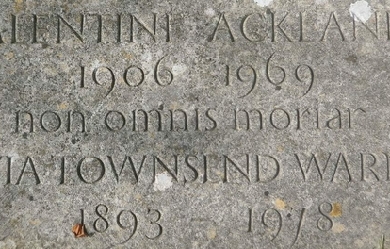
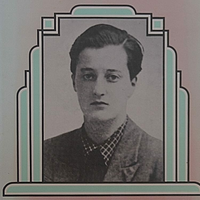
Valentine Ackland (20 May 1906– 9 November 1969) was an English poet, an important figure in the emergence of modernism in twentieth-century British poetry. Life Ackland was born Mary Kathleen Macrory Ackland to Robert Craig Ackland and his wife Ruth Kathleen (née Macrory), and nicknamed “Molly” by her family. With no sons born to the family, Valentine’s father, a West End London dentist, worked at making a symbolic son of Molly, teaching her to shoot rifles and to box. This attention to Molly made her sister Joan Alice Elizabeth (b. 1898) immensely jealous. Older by eight years, Joan psychologically tormented and physically abused Molly as a way of unleashing her jealousy and anger. Molly received an Anglo-Catholic upbringing in Norfolk and a convent school education in London. In 1925 at the age of nineteen, she impetuously married Richard Turpin, a homosexual youth who was unable to consummate their marriage. Upon her marriage, she was also received into the Catholic church, a religion that she later abandoned, returned to, and then abandoned again in the last decade of her life. In less than a year, she had her marriage to Turpin annulled, and, despite numerous pleas from her family and much psychological pressure from them, never returned to a serious relationship with a man again. Alert to social mores of her day, she became aware of societal patterns of male privilege and female submission set about challenging the female gender identifications expected of her. She took to wearing men’s clothing, cut her hair in a short style called the Eton crop, and was at times mistaken for a handsome young boy. She changed her name to the androgynous Valentine Ackland when she decided to become a serious poet in the late 1920s. Her poetry appeared in British and American literary journals during the 1920s to the 1940s, but Ackland deeply regretted that she never became a noted and widely read poet. In this regard, much of her poetry was published posthumously, and she received little attention from critics until a revival of interest in her work in the 1970s. In 1930, Ackland was introduced to the short story writer and novelist Sylvia Townsend Warner, with whom she had a lifelong relationship, albeit tumultuous at times given Ackland’s increasing alcoholism and infidelities. Warner was twelve years older than Ackland, and the two lived together until Ackland’s death from breast cancer in 1969. Warner went on to outlive Ackland by nine years, dying in 1978. The pair were together for thirty-nine years. Ackland’s reflections upon her relationship with Warner and the former’s long affair with American heiress and writer Elizabeth Wade White (1908–1994), were posthumously published in For Sylvia: An Honest Account (1985). Ackland was a highly emotional woman prone to numerous self-doubts and shifts in emotions and intellectual interests. She was responsible for involving Warner in membership in the Communist Party in the 1930s and in 1937 she visited Valencia and Benicàssim within the framework of the Spanish Civil War as well as numerous socialist and pacifist activities. The two women’s involvement in the Communist Party came under investigation by the British government in the late 1930s and remained an open file until 1957, when the investigation was halted. Ackland and Warner supported the Republican cause during the Spanish Civil War, and Ackland criticised the British government for its indifference to the “sufferings of the Spanish people at the grass-roots level” in her poem "Instructions from England, 1936". Note nothing of why or how, enquire no deeper than you need into what set these veins on fire, Note simply that they bleed. After World War II, Ackland turned her attention to confessional poetry and a memoir concerning her relationship with Warner and its many emotional issues as Ackland pursued involvements with other women. At first, Warner was tolerant with her younger lover’s dalliances, but the seriousness and length of Ackland’s relationship with Elizabeth Wade White was distressing to Warner and also pushed her relationship with Ackland to the edge. Ackland’s distresses at loving two women simultaneously and of endeavouring to balance her feelings for each woman with the responsibilities and commitments of her primary relationship with Warner are presented openly in Ackland’s poetry and in her memoir of this period. Ackland was struggling with additional doubts and conflicts during this period as well. She continued to battle her alcoholism, and she was undergoing shifts in her political and religious alliances. Doubts about her sexual identity and her identity as a poet as well as about her Christian faith and her political convictions are evident in her poetry. In 1934, Ackland and Warner produced a volume of poetry, “Whether a Dove or a Seagull” that was an unusual and democratic experiment in writing as none of the poems is ascribed to either author. The volume was also an attempt by Warner to introduce Ackland to publication since Warner had an already established reputation as a novelist, and her work was widely read in the 1930s. The volume was controversial for its frank discussion of lesbianism at a time and in a society in which lesbianism was regarded as deviant and immoral behaviour. In 1937, Ackland and Warner moved from rural Dorset to a house near Dorchester. Both became involved with Communist ideals and issues, with Ackland writing a column called “Country Dealings” concerning rural poverty for the “Daily Worker” and the “Left Review.” In 1939, the two women attended the American Writers Congress in New York City to consider the loss of democracy in Europe and returned when World War II broke out. Ackland’s poetry of this period attempted to capture the political dynamics she saw at work, but she had a difficult time as a poet mastering the craft of combining political polemics with her natural tendency toward lyrical expression. In a similar vein, her distress over the loss of democracy in Europe became a broader identification with Existentialism and the sense that the human condition itself was hopeless. Death Ackland died on 9 November 1969 from breast cancer that had metastasised to her lungs. She was buried together with Sylvia Townsend Warner in St Nicholas’s churchyard at Chaldon Herring with the inscription from Horace Non omnis moriar (Ode III.30, “I shall not wholly die”) on her gravestone. Critical assessment Ackland’s poetry—largely neglected after the 1940s—came into a resurgence of interest with the emergence of both women’s studies and of lesbian literature. Contemporary critical reaction finds much to value in Ackland’s poetry and confessional writings, which are of historical interest to the development of self-reflective, modernist poetry, and to the political and cultural issues of the 1930s and 1940s. One example of a recent critical analysis is Wendy Milford’s 1988 study, This Narrow Place: Sylvia Townsend Warner and Valentine Ackland. With regard to her self-reflection as a poet, Ackland exhibits themes and explorations similar to poets like Sylvia Plath and Anne Sexton. Of interest, too, is Ackland’s explorations of terminal illness as her life was drawing to a close from cancer. In her later years, Ackland turned from Catholicism to Quaker beliefs and also to involvement with issues of environmentalism. In overall assessment, Milford considers the two-minds at work in Ackland’s work. She cites as examples Ackland’s focus on optimism and dread, the longing for emotional closeness and the fear of intimacy, self-assertion and self-negation, the search for privacy and solitude amidst the longing for connection and social acceptance as a lesbian and as a noteworthy poet. In this regard, Ackland shares much thematically—though not in artistic achievement—with metaphysical poets like John Donne and Philip Larkin in the effort to see personal experience from multiple perspectives and never fully resting with one perspective or another. A contemporary examination of Ackland’s poetry and essays was published by Carcanet Press in 2008 titled Journey from Winter: Selected Poems. The volume is edited by Frances Bingham, who also provides a contextual and critical introduction. Bibliography * Whether a Dove or a Seagull (1934) volume of poetry with Sylvia Townsend Warner * Twenty-Eight Poems (1957) privately printed in London * Later Poems by Valentine Ackland (1970) * The Nature of the Moment (1973) * Further Poems of Valentine Ackland (1978) * For Sylvia: An Honest Account (1985) a memoir of Ackland’s relationship with Sylvia Townsend Warner * This Narrow Place: Sylvia Townsend Warner and Valentine Ackland 1931–1951, by Wendy Mulford (1988) * Jealousy in Connecticut, by Susanna Pinney (1998) References Wikipedia—https://en.wikipedia.org/wiki/Valentine_Ackland
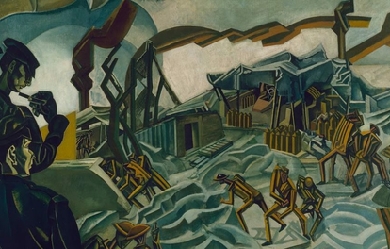
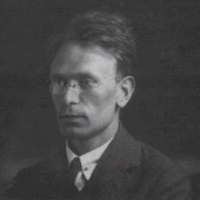
Frank Stuart Flint (19 December 1885– 28 February 1960) was an English poet and translator who was a prominent member of the Imagist group. Ford Madox Ford called him “one of the greatest men and one of the beautiful spirits of the country”. Life and career British poet, and a poetry reviewer with an unusual gift for language, a self-educated man, born in Islington, London; he left school at 13 and worked in various capacities before beginning his long and distinguished career in the Civil Service in 1904. He published a book on French poets, starting in 1908 and by 1910, his intensive private study had gained him recognition as one of Britain’s most highly informed authorities on modern French poetry. His first collection of poems, In the Net of the Stars (1909), consisted mainly of conventional love lyrics. Flint is mostly known for his participation in the “School of Images” with Ezra Pound and T. E. Hulme in 1909, of which he gave an account in the “Poetry Review” in 1909, and which was to serve as the theoretical basis for the later Imagist movement (1913). His subsequent association with Ezra Pound and T. E. Hulme, together with his deepening knowledge of innovative French poetic techniques, radically affected his poetry’s development. Glenn Hughes reports Flint ‘claiming to inventing the open verse form ’unrimed cadence’, by cutting away all personal emotion, where symbolism was barely suggested, but instead shortened and hardened, and where meter was supplanted by cadence’. Hughes explaining Flint’s form is best understood ‘by comparing his poem ’ A Swan Song’(Published in 1909 and later by Pound in 1914 in 'Des Imagistes’) and, his later ‘cadenced ’ version thereof, ' The Swan’, a poem so devoid of superfluities and cliches, to achieve that perfect chiseled beauty which is the essence of classical art’ In 1916 Flint was described as having ' the gift of artistic courage clothed in beauty which will help build the poetry of the future’. Flint himself, considered his 'cadenced’ form to be a reversion to the real tradition of the English poetry of Cynewulf in the 'Riddle, The Nightingale’ Earlier Flint had published a series of articles on contemporary French poets (1912) that much influenced his contemporaries. In 1914 he was included by Pound in Des Imagistes. He entered into a short-lived dispute with Pound as to each one’s relative contribution to the Imagist movement. During the 1930s Flint was among a number of poets who moved away from poetry and towards economics, working for the Statistics Division of the Ministry of Labour writing that "[t]he proper study of mankind is, for the time being, economics". Flint would go on to publish an article entitled The Plain Man and Economics in The Criterion in 1937. He became a leading spokesman for Imagism and exemplified its methods in the concentration and clarity displayed by much of the work in Cadences (1915). Otherworld, his third and last collection, was published in 1920, its lengthy title poem responding to the desolation of the First World War in its meditations on more viable modes of existence. For some years after he ceased publishing poetry, Flint continued to contribute influential articles to the Times Literary Supplement and The Criterion. He was also a prolific translator of prose works and poetry by French, German, and classical authors. With the exception of some short works arising from his activities as a civil servant, he ceased writing for publication entirely in the early 1930s. Poetry In the Net of the Stars, BiblioBazaar (Jun 2009) ISBN 978-1-110-85842-2 Cadences, Poetry Bookshop. London, 1915 Otherworld: Cadences, Poetry Bookshop, 1920 Translations The Love Poems of Emile Verhaeren, Houghton Mifflin, Boston 1916 The Closed Door, by Jean de Bosschere, John Lane, London 1917 Essays etc ‘Contemporary French Poetry’, article in The Poetry Review, August 1912 ‘Some Modern French Poets( A Commentarey with a Specimen) The Chapbook: A Monthly Miscellany, London October 1919 ‘ The Younger French Poets The Chapbook; A Monthly Miscellany, London November 1920 ‘The History of Imagism’, essay in The Egoist, May 1915 ‘The Poetry of HD ’ essay in The Egoist, May 1915 ‘ Six French Poets’ essay in The Egoist, January 1916 ‘Imagisme, Poetry Chicago March 1913 References Wikipedia—https://en.wikipedia.org/wiki/F._S._Flint
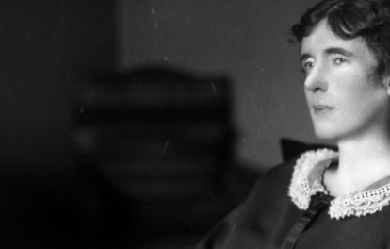
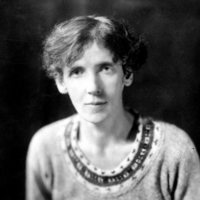
Dame Emilie Rose Macaulay, DBE (1 August 1881– 30 October 1958) was an English writer, most noted for her award-winning novel The Towers of Trebizond, about a small Anglo-Catholic group crossing Turkey by camel. The story is seen as a spiritual autobiography, reflecting her own changing and conflicting beliefs. Macaulay’s novels were partly-influenced by Virginia Woolf; she also wrote biographies and travelogues. Early years and education Macaulay was born in Rugby, Warwickshire the daughter of George Campbell Macaulay, a Classical scholar, and his wife, Grace Mary (née Conybeare). Her father was descended in the male-line directly from the Macaulay family of Lewis. She was educated at Oxford High School for Girls and read Modern History at Somerville College at Oxford University. Career Macaulay began writing her first novel, Abbots Verney (published 1906), after leaving Somerville and while living with her parents at Ty Isaf, near Aberystwyth, in Wales. Later novels include The Lee Shore (1912), Potterism (1920), Dangerous Ages (1921), Told by an Idiot (1923), And No Man’s Wit (1940), The World My Wilderness (1950), and The Towers of Trebizond (1956). Her non-fiction work includes They Went to Portugal, Catchwords and Claptrap, a biography of Milton, and Pleasure of Ruins. Macaulay’s fiction was influenced by Virginia Woolf and Anatole France. During World War I Macaulay worked in the British Propaganda Department, after some time as a nurse and later as a civil servant in the War Office. She pursued a romantic affair with Gerald O’Donovan, a writer and former Jesuit priest, from 1918 until his death in 1942. During the interwar period she was a sponsor of the pacifist Peace Pledge Union; however she resigned from the PPU and later recanted her pacifism in 1940. Her London flat was utterly destroyed in the Blitz, and she had to rebuild her life and library from scratch, as documented in the semi-autobiographical short story, Miss Anstruther’s Letters, which was published in 1942. The Towers of Trebizond, her final novel, is generally regarded as her masterpiece. Strongly autobiographical, it treats with wistful humour and deep sadness the attractions of mystical Christianity, and the irremediable conflict between adulterous love and the demands of the Christian faith. For this work, she received the James Tait Black Memorial Prize in 1956. Personal life Macaulay was never a simple believer in “mere Christianity”; however, and her writings reveal a more complex, mystical sense of the divine. That said, she did not return to the Anglican church until 1953; she had been an ardent secularist before and, while religious themes pervade her novels, previous to her conversion she often treats Christianity satirically, for instance in Going Abroad and The World My Wilderness. She never married, as a result of her lengthy and secret relationship with Gerald O’Donovan. They met in 1918 and the affair lasted until his death in 1942. She was created a Dame Commander of the Order of the British Empire (DBE) on 31 December 1957 in the 1958 New Years Honours. Macaulay was an active feminist throughout her life. Dame Rose Macaulay died on 30 October 1958, aged 77. Memorable quotes From The Towers of Trebizond: “Adultery is a meanness and a stealing, a taking away from someone what should be theirs, a great selfishness, and surrounded and guarded by lies lest it should be found out. And out of meanness and selfishness and lying flow love and joy and peace beyond anything that can be imagined.” First line of The Towers of Trebizond, cited by librarian Nancy Pearl in “Famous First Words: A Librarian Shares Favorite Literary Opening Lines,” [1] hosted by Steve Inskeep on NPR’s Morning Edition, 8 September 2004, as an example among “some notable opening lines that have made Pearl’s heart pound”. “Take my camel, dear”, said my Aunt Dot, as she climbed down from this animal on her return from High Mass. From Staying with Relations. Discussing the coat worn by a visitor, a character remarks: “Is rabbit fur disgusting because it’s cheap, or is it cheap because it’s disgusting?”
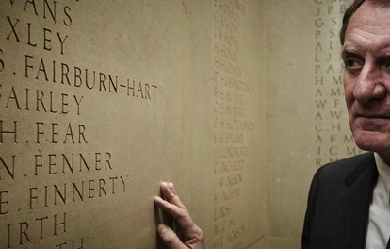
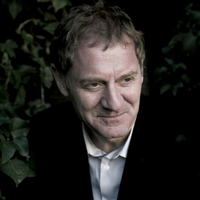
Sir Andrew Motion FRSL (born 26 October 1952) is an English poet, novelist, and biographer, who was Poet Laureate of the United Kingdom from 1999 to 2009. During the period of his laureateship, Motion founded the Poetry Archive, an online resource of poems and audio recordings of poets reading their own work. In 2012, he became President of the Campaign to Protect Rural England, taking over from Bill Bryson. Early life Motion was born on 26 October 1952 in London; his mother was Catherine Gillian Bakewell (known as Gillian) and his father Andrew Richard Michael Motion (known as Richard). The family moved to Stisted, near Braintree in Essex, when Motion was 12 years old. Motion went to boarding school from the age of seven joined by his younger brother. Most of the boy’s friends were from the school and when Motion was in the village he spent a lot of time on his own. He began to have an interest and affection for the countryside and he went for walks with a pet dog. Later he went to Radley College, where, in the sixth form, he encountered Peter Way, an inspiring English teacher who introduced him to poetry– first Hardy, then Philip Larkin, W. H. Auden, Heaney, Hughes, Wordsworth and Keats. When Motion was 17 years old, his mother had a horse riding accident and suffered a serious head injury requiring a life-saving neurosurgery operation. She regained some speech, but she was severely paralysed and remained in and out of coma for nine years. She died in 1978 and her husband died of cancer in 2006. Motion has said that he wrote to keep his memory of his mother alive and that she was a muse of his work. When Motion was about 18 years old he moved away from the village to study English at University College, Oxford; however, since then he has remained in contact with the village to visit the church graveyard, where his parents are buried, and also to see his brother, who lives nearby. At University he studied at weekly sessions with W. H. Auden, whom he greatly admired. Motion won the university’s Newdigate Prize and graduated with a first class honours degree. Career Between 1976 and 1980, Motion taught English at the University of Hull and while there, at age 24, he had his first volume of poetry published. At Hull he met university librarian and poet Philip Larkin. Motion was later appointed as one of Larkin’s literary executors which would privilege Motion’s role as his biographer following Larkin’s death in 1985. In Philip Larkin: A Writer’s Life, Motion says that at no time during their nine-year friendship did they discuss writing his biography and it was Larkin’s longtime companion Monica Jones who requested it. He reports how, as executor, he rescued many of Larkin’s papers from imminent destruction following his friend’s death. His 1993 biography of Larkin, which won the Whitbread Prize for Biography, was responsible for bringing about a substantial revision of Larkin’s reputation. Motion was Editorial Director and Poetry Editor at Chatto & Windus (1983–89), he edited the Poetry Society’s Poetry Review from 1980–1982 and succeeded Malcolm Bradbury as Professor of Creative Writing at the University of East Anglia. He is now on the faculty at the Johns Hopkins Writing Seminars. Laureateship Motion was appointed Poet Laureate on 1 May 1999, following the death of Ted Hughes, the previous incumbent. The Nobel Prize-winning Northern Irish poet and translator Seamus Heaney had ruled himself out for the post. Breaking with the tradition of the laureate retaining the post for life, Motion stipulated that he would stay for only ten years. The yearly stipend of £200 was increased to £5,000 and he received the customary butt of sack. He wanted to write “poems about things in the news, and commissions from people or organisations involved with ordinary life,” rather than be seen a 'courtier’. So, he wrote "for the TUC about liberty, about homelessness for the Salvation Army, about bullying for ChildLine, about the foot and mouth outbreak for the Today programme, about the Paddington rail disaster, the 11 September attacks and Harry Patch for the BBC, and more recently about shell shock for the charity Combat Stress, and climate change for the song cycle he finished for Cambridge University with Peter Maxwell Davies.” On 14 March 2002, as part of the 'Re-weaving Rainbows’ event of National Science Week 2002, Motion unveiled a blue plaque on the front wall of 28 St Thomas Street, Southwark, to commemorate the sharing of lodgings there by John Keats and Henry Stephens while they were medical students at Guy’s and St Thomas’ Hospital in 1815–16. In 2003, Motion wrote Regime change, a poem in protest at Invasion of Iraq from the point of view of Death walking the streets during the conflict, and in 2005, Spring Wedding in honour of the wedding of the Prince of Wales to Camilla Parker Bowles. Commissioned to write in the honour of 109-year-old Harry Patch, the last surviving “Tommy” to have fought in World War I, Motion composed a five-part poem, read and received by Patch at the Bishop’s Palace in Wells in 2008. As laureate, he also founded the Poetry Archive, an on-line library of historic and contemporary recordings of poets reciting their own work. Motion remarked that he found some of the duties attendant to the post of poet laureate difficult and onerous and that the appointment had been "very, very damaging to [his] work". The appointment of Motion met with criticism from some quarters. As he prepared to stand down from the job, Motion published an article in The Guardian that concluded, "To have had 10 years working as laureate has been remarkable. Sometimes it’s been remarkably difficult, the laureate has to take a lot of flak, one way or another. More often it has been remarkably fulfilling. I’m glad I did it, and I’m glad I’m giving it up– especially since I mean to continue working for poetry." Motion spent his last day as Poet Laureate holding a creative writing class at his alma mater, Radley College, before giving a poetry reading and thanking Peter Way, the man who taught him English at Radley, for making him who he was. Carol Ann Duffy succeeded him as Poet Laureate on 1 May 2009. Post-laureateship Motion is Chairman of the Arts Council of England’s Literature Panel (appointed 1996) and is also a Fellow of the Royal Society of Literature. In 2003, he became Professor of Creative Writing at Royal Holloway, University of London. Since July 2009, Motion has been Chairman of the Museums, Libraries and Archives Council (MLA) appointed by the Department for Culture, Media and Sport. He is also a Vice-President of the Friends of the British Library, a charity which provides funding support to the British Library. He was knighted in the 2009 Queen’s Birthday Honours list. He has been a member of English Heritage’s Blue Plaques Panel since 2008. Motion was selected as jury chair for the Man Booker Prize 2010 and in March 2010, he announced that he was working with publishers Jonathan Cape on a sequel to Robert Louis Stevenson’s Treasure Island. Entitled Silver, the story is set a generation on from the original book and was published in March 2012. In July 2010, Motion returned to Kingston-upon-Hull for the annual Humber Mouth literature festival and taking part in the Larkin 25 festival commemorating the 25th anniversary of Philip Larkin’s death. In his capacity as Larkin’s biographer and as a former lecturer in English at the University of Hull, Motion named an East Yorkshire Motor Services bus Philip Larkin. Motion’s debut play Incoming, about the war in Afghanistan, premièred at the High Tides Festival in Halesworth, Suffolk in May 2011. Motion also featured in Jamie’s Dream School in 2011 as the poetry teacher. In June 2012, he became the President of the Campaign to Protect Rural England. In March 2014 he was elected an Honorary Fellow at Homerton College, Cambridge. Motion won the 2015 Ted Hughes Award for new work in poetry for the radio programme Coming Home. The production featured poetry by Motion based on recordings he made of British soldiers returning from the wars in Iraq and Afghanistan. Work Motion has said of himself: “My wish to write a poem is inseparable from my wish to explain something to myself.” His work combines lyrical and narrative aspects in a “postmodern-romantic sensibility”. Motion says that he aims to write in clear language without tricks. The Independent describes the stalwart poet as the “charming and tireless defender of the art form”. Motion has won the Arvon Prize, the John Llewellyn Rhys Prize, Eric Gregory Award, Whitbread Prize for Biography and the Dylan Thomas Prize. Motion took part in the Bush Theatre’s 2011 project Sixty-Six Books, writing and performing a piece based upon a book of the King James Bible. Personal life Motion’s marriage to Joanna Powell ended in 1983. He was married to Jan Dalley from 1985 to 2009, divorcing after a seven-year separation. They had one son born in 1986 and twins, a son and a daughter, born in 1988. In 2009 he married Kyeong-Soo Kim. They live in Baltimore, Maryland. Selected honours and awards 1975: won the Newdigate prize for Oxford undergraduate poetry 1976: Eric Gregory Award 1981: wins Arvon Foundation’s International Poetry Competition with The Letter 1984: John Llewellyn Rhys Prize for Dangerous Play: Poems 1974–1984 1986: Somerset Maugham Award for The Lamberts 1987: Dylan Thomas Prize for Natural Causes 1999: appointed Poet Laureate for ten years 1994: Philip Larkin: A Writer’s Life, Whitbread Prize for Biography 2009: Knighthood 2014: Wilfred Owen Poetry Award Selected works Poetry collections * 1972: Goodnestone: a sequence. Workshop Press * 1976: Inland. Cygnet Press * 1977: The Pleasure Steamers. Carcanet * 1981: Independence. Salamander Press * 1983: Secret Narratives. Salamander Press * 1984: Dangerous Play: Poems 1974–1984. Salamander Press / Penguin * 1987: Natural Causes. Chatto & Windus * 1988: Two Poems. Words Ltd * 1991: Love in a Life. Faber and Faber * 1994: The Price of Everything. Faber and Faber * 1997: Salt Water Faber and Faber * 1998: Selected Poems 1976–1997. Faber and Faber * 2001: A Long Story. The Old School Press * 2002: Public Property. Faber and Faber * 2009: The Cinder Path. Faber and Faber * 2012: The Customs House. Faber and Faber * 2015: Peace Talks. Faber and Faber * 2015: Coming Home. Published by Andrew J Moorhouse at Fine Press Poetry http://www.finepresspoetry.com Criticism * 1980: The Poetry of Edward Thomas. Routledge & Kegan Paul * 1982: Philip Larkin. (Contemporary Writers series) Methuen * 1986: Elizabeth Bishop. (Chatterton Lectures on an English Poet) * 1998: Sarah Raphael: Strip!. Marlborough Fine Art (London) * 2008: Ways of Life: On Places, Painters and Poets. Faber and Faber Biography and memoir * 1986: The Lamberts: George, Constant and Kit. Chatto & Windus * 1993: Philip Larkin: A Writer’s Life. Faber and Faber * 1997: Keats: A Biography. Faber and Faber * 2006: In the Blood: A Memoir of my Childhood. Faber and Faber Fiction * 1989: The Pale Companion. Penguin * 1991: Famous for the Creatures. Viking * 2003: The Invention of Dr Cake. Faber and Faber * 2000: Wainewright the Poisoner: The Confessions of Thomas Griffiths Wainewright (biographical novel) * 2012: Silver. Jonathan Cape Edited works, introductions, and forewords * 1981: Selected Poems: William Barnes. Penguin Classics * 1982: The Penguin Book of Contemporary British Poetry with Blake Morrison. Penguin * 1994: Thomas Hardy: Selected Poems. Dent * 1993: New Writing 2 (With Malcolm Bradbury). Minerva in association with the British Council * 1994: New Writing 3 (With Candice Rodd). Minerva in association with the British Council * 1997: Penguin Modern Poets: Volume 11 with Michael Donaghy and Hugo Williams. Penguin * 1998: Take 20: New Writing. University of East Anglia * 1999: Verses of the Poets Laureate: From John Dryden to Andrew Motion. With Hilary Laurie. Orion. * 1999: Babel: New Writing by the University of East Anglia’s MA Writers. University of East Anglia. * 2001: Firsthand: The New Anthology of Creative Writing from the University of East Anglia. University of East Anglia * 2002: Paper Scissors Stone: New Writing from the MA in Creative Writing at UEA. University of East Anglia. * 2001: The Creative Writing Coursebook: Forty Authors Share Advice and Exercises for Fiction & Poetry. With Julia Bell. Macmillan * 2000: John Keats: Poems Selected by Andrew Motion. Faber and Faber * 2001: Here to Eternity: An Anthology of Poetry. Faber and Faber * 2002: The Mays Literary Anthology; Guest editor. Varsity Publications * 2003: 101 Poems Against War . Faber and Faber (Afterword) * 2003: First World War Poems. Faber and Faber * 2006: Collins Rhyming Dictionary. Collins * 2007: Bedford Square 2: New Writing from the Royal Holloway Creative Writing Programme. John Murray Ltd. References Wikipedia—https://en.wikipedia.org/wiki/Andrew_Motion

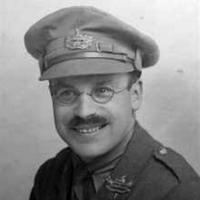
Frederick William Harvey DCM (26 March 1888– 13 February 1957), often known as Will Harvey, and dubbed “the Laureate of Gloucestershire”, was an English poet, broadcaster and solicitor whose poetry became popular during and after World War I. Early life Harvey was born in 1888 in Hartpury, Gloucestershire, and grew up in Minsterworth. He was educated at the King’s School, Gloucester, where he formed a close friendship with Ivor Gurney, and then at Rossall School. Gurney and Herbert Howells, another local composer, would set a number of his poems to music. He started on a legal career, which would always be somewhat tentative; and began to consider conversion to Roman Catholicism. World War I On 8 August 1914, only four days after the United Kingdom had declared war on Germany, Harvey joined the 5th battalion of the Gloucestershire Regiment as a private. Shortly afterwards, in November, he became a Roman Catholic. He was an adherent of the distributism movement, described as a “third way”, in opposition to both socialism and capitalism; and he was influenced by the work of G. K. Chesterton and Hilaire Belloc. His battalion was posted to France in March 1915, where he was promoted to lance corporal and awarded the Distinguished Conduct Medal. His citation for the DCM reads: 2371 Lance-Corpl. F.W. Harvey, 1/5th Gloucestershire R[egiment]. (T.F.) For conspicuous gallantry on the night of Aug. 3-4, 1915, near Hebuterne, when, with a patrol, he and another non-commissioned officer went out to reconnoiter in the direction of a suspected listening-post. In advancing they encountered the hostile post, evidently covering a working party in the rear. Corporal Knight at once shot one of the enemy, and, with Lance-Corporal Harvey, rushed the post, shooting two others, and, assistance arriving, the enemy fled. Lance-Corporal Harvey pursued, felling one of the retreating Germans with a bludgeon. He seized him, but, finding his revolver empty and the enemy having opened fire, he was called back by Corporal Knight, and the prisoner escaped. Three Germans were killed, and their rifles and a Mauser pistol were brought in. The patrol had no loss. He returned to England for officer training, but after being commissioned and returning to France he was captured on 17 August 1916 in the German front-line trench while carrying out a reconnaissance patrol. He spent the remainder of the war in prisoner-of-war camps, including those at Gütersloh, Crefeld, Schwarmstedt, Holzminden, Bad Colberg, and Stralsund. Writing Soon after his arrival in France, Harvey had begun to contribute to a trench newspaper, the Fifth Gloucester Gazette. His first volume of poems, A Gloucestershire Lad At Home and Abroad, was published in September 1916, shortly after his capture. He began to write more intensively in captivity, and poems were sent back to England for publication: his second collection, Gloucestershire Friends, appeared in 1917. His time in the camps is held to be his most productive period of writing. On returning from a spell of solitary confinement at Holzminden after a failed escape attempt, he saw that a fellow prisoner had drawn a picture over his bed in chalk of ducks in a pool of water. This inspired his most celebrated poem (and the title poem of his third collection, published in 1919), “Ducks”. Post-war life Harvey returned home in 1919, married in 1921, and returned to legal practice. He became a respected and loved figure in the Forest of Dean. He worked largely as a defence solicitor (his own captivity convincing him that incarceration was destructive and pointless), and became known as the “poor man’s solicitor”. His work was not financially successful, and in the 1930s he sold his practice. In 1920 he published a memoir of his prison-camp experiences, Comrades in Captivity; and in 1921 Farewell, the title an acknowledgement of his intention to remove himself from the literary world. He had a brief creative union with his great friend and collaborator, Ivor Gurney, which was cut short by Gurney’s mental breakdown. His gift for oration, versatile voice and scripting led him to become a popular broadcaster at the BBC, Bristol, where he used his popularity to promote the Forest of Dean, its people and traditions. He promoted local choirs, musicians and young authors such as Leonard Clark. He was friends with Rutland Boughton and the local MP, Morgan Philips Price, who worked with him to promote the arts and the interests of Foresters. Later years In later life Harvey craved the comradeship he had found in the trenches and was disappointed that the new social order he had anticipated never happened. His later poetry of remembrance captured those feelings, but retained the essential humour of his early work and included verse in the local dialect. In 1956, in failing health, he attended the Three Choirs Festival at Gloucester Cathedral to hear Elgar’s The Dream of Gerontius, a work that had inspired his ideas about creativity and beauty some fifty years earlier. He died the following year and was buried at Minsterworth. Personal life In 1921 Harvey married Anne Kane, an Irish nurse. They had two children, Eileen Anne (born 1922) and Patrick (born 1925). He led a bohemian lifestyle, rejecting material values, and often recklessly gave away his professional services and income. Reputation and legacy Harvey’s poems published during and immediately after World War I were highly acclaimed, and his status was acknowledged when a collection was published in 1926 in the Augustan Books of Modern Poetry series, edited by Edward Thompson. The lyricism of his poetry led to it being set to music by his friends Ivor Gurney, Herbert Howells and Sir Herbert Brewer, among others. It continues to be used by contemporary composers including Johnny Coppin. His work is particularly noted for its appreciation of the natural world and the landscape and traditions of West Gloucestershire. Harvey was commemorated by a slate memorial tablet in the south transept of Gloucester Cathedral in 1980. “Ducks”, Harvey’s best known work, was voted one of the nation’s 100 favourite poems in 1996 in a nationwide poll conducted by the BBC. Works Poetry collections * A Gloucestershire Lad At Home and Abroad. London: Sidgwick & Jackson. 1916. * Gloucestershire Friends: Poems from a German Prison Camp. London: Sidgwick & Jackson. 1917. * Ducks, and other Verses. London: Sidgwick & Jackson. 1919. * Farewell. London: Sidgwick & Jackson. 1921. * September and Other Poems. London: Sidgwick & Jackson. 1925. * In Pillowell Woods. Lydney: Frank Harris. 1926. * Gloucestershire: A Selection from the Poems of F.W. Harvey. Edinburgh: Oliver & Boyd. 1947. Edited collections * Thompson, Edward, ed. (1926). The Augustan Books of Modern Poetry: Frederick William Harvey. London: Ernest Benn. * Forest Offering: A Selection from the Unpublished Poems of F.W. Harvey, 1888-1957. Frank Green. 1962. * F.W. Harvey: Collected Poems 1912-1957. Coleford: Douglas McLean. 1983. * Boden, Anthony; Thornton, R.K.R., eds. (2011). F.W. Harvey: Selected Poems. Coleford: Douglas McLean. Novel * Harvey, F.W. (2014). A War Romance. Stroud, Glos.: The History Press. Prose (war memoirs) * Harvey, F.W. (1920). Comrades in Captivity: a Record of Life in Seven German Prison Camps. London: Sidgwick & Jackson. References Wikipedia—https://en.wikipedia.org/wiki/F._W._Harvey
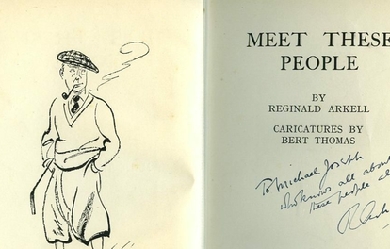
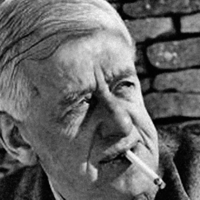
Reginald Arkell (1882–1959) was a British script writer and comic novelist who wrote many musical plays for the London theatre. The most popular of those was an adaptation of the spoof history book 1066 and All That: 1066—and all that: A Musical Comedy based on that Memorable History by Sellar and Yeatman. He was the author of A Cottage in the Country and the Green Fingers series of garden verse. Arkell was born on 14 October 1882 at Lechlade, Gloucestershire, England, was educated at Burford Grammar School and trained as a journalist. He married actress Elizabeth Evans in 1912. During the First World War he served with the King’s Own Yorkshire Light Infantry and The Norfolk Regiment. Arkell died on 1 May 1959 at Cricklade, England. Works * The Round House (1958) (novel) * Charley Moon (1953) (novel) Published by Michael Joseph Ltd. * “Trumpets Over Merriford” (1955), American title: The Miracle Of Merriford (1956) (novel) * Collected Green Fingers (1956) (poems) * Come to the ball; or, Harlequin (1951) (adaptation of Johann Strauss II’s Die Fledermaus) * Old Herbaceous (1950, republished 2002) * Green fingers Again (1942) (poems) * War Rumours (1939) (verse, illustrated by Edgar Norfield) * Percy Ponsonby (1939) (TV series) * 1066 And All That (1939) (TV version) * The Street Singer or Interval for Romance (1937) (film musical which starred Arthur Tracy) * Smash and Grab (1937) (film) * Green fingers, and other poems (1934) (includes Roses at Owlpen) * The Last Waltz (1936) (film of the musical comedy) * 1066 And All That (1935) (revue) * A Kingdom for a Cow (1935) (adaptation of Kurt Weill’s operetta Der Kuhhandel) * Playing the Games (1935) (humour) * Bridge Without Sighs (1934) (A Harmless Handbook to the game, written in rhyme) * Richard Jefferies (1933) (biography) * Winter Sportings (1929) * Meet These People (1928) - Poetry with caricatures by Bert Thomas. Published by Herbert Jenkins. * Columbine– A Fantasy of Summertime (1928) (adaptation for radio) * The Blue Train (1927) (musical, music by Robert Stolz, additional lyrics by Ivy St. Helier) * Frasquita (1925) (operetta, music by Franz Lehár) * Our Nell (1924) (musical play, music by Ivor Novello and Harold Fraser-Simson) * The tragedy of Mr. Punch (1923) (play) * Columbine (1922) (play) * Catherine (1922) (musical play, music by Tchaikovsky) * The Last Waltz (1922) (musical comedy, music by Oscar Straus) * All the Rumors (1916) (contains the poem Actual Evidence I Have None... Published by Duckworth & Company, 1916 - World War, 1914-1918 - 47 pages) * The Holidays (Children’s poem in The Captain Dec 1910) Old Herbaceous * Old Herbaceous is a classic British novel of the garden, with a title character as outsized and unforgettable as P. G. Wodehouse’s immortal manservant, Jeeves. Born at the dusk of the Victorian era, Bert Pinnegar, an awkward orphan child with one leg a tad longer than the other, rises from inauspicious schoolboy days spent picking wildflowers and dodging angry farmers to become the legendary head gardener “Old Herbaceous,” the most esteemed flower-show judge in the county and a famed horticultural wizard capable of producing dazzling April strawberries from the greenhouse and the exact morning glories his Lady spies on the French Riviera, “so blue, so blue it positively hurts.” * Sprinkled with nuggets of gardening wisdom, Old Herbaceous is a witty comic portrait of the most archetypal—and crotchety—head gardener ever to plant a row of bulbs at a British country house. External links * Works by Reginald Arkell at Faded Page (Canada) * BBC page on Percy Ponsonby * Reginald Arkell on Internet Movie Database References Wikipedia—https://en.wikipedia.org/wiki/Reginald_Arkell
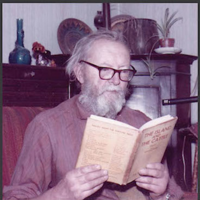
Nicholas Moore (16 November 1918 – 26 January 1986) was an English poet, associated with the New Apocalyptics in the 1940s, whose reputation stood as high as Dylan Thomas’s. He later dropped out of the literary world. Moore was born in Cambridge, England, the elder child of the philosopher G. E. Moore and Dorothy Ely. His paternal uncle was the poet, artist and critic Thomas Sturge Moore, and his brother was the composer Timothy Moore (1922-2003). He was educated at the Dragon School in Oxford, Leighton Park School in Reading, the University of St Andrews in Scotland, and Trinity College in Cambridge. Moore was editor and co-founder of a literary review, Seven (1938–40), while still an undergraduate. Seven, Magazine of People's Writing, had a complex later history: Moore edited it with John Goodland; it later appeared edited by Gordon Cruikshank, and then by Sydney D. Tremayne, after Randall Swingler bought it in 1941 from Philip O'Connor. While in Cambridge Moore became closely involved with literary London, in particular Tambimuttu. He published pamphlets under the Poetry London imprint in 1941 (of George Scurfield, G. S. Fraser, Anne Ridler and his own work). This led to Moore becoming Tambimuttu's assistant. Moore later worked for the Grey Walls Press. The Glass Tower, a selected poems collection from 1944, appeared with illustrations by the young Lucian Freud. In 1945 he edited The PL Book of Modern American Short Stories, and won Contemporary Poetry's Patron Prize (judged that year by W. H. Auden) for Girl with a Wine Glass. In 1947 he won the Harriet Monroe Memorial Prize for Girls and Birds and various other poems. Later Moore encountered difficulty in publishing; he was in the unusual position for a British poet of having a higher reputation in the USA. His association with the "romantics" of the 1940s was, in fact, rather an inaccurate reflection of his style. In the 1950s he worked as a horticulturist, writing a book The Tall Bearded Iris (1956). In 1968 he entered 31 separate pseudonymous translations of a single Baudelaire poem, in a competition for the Sunday Times, run by George Steiner. Each translation focused on a different element of the poem: rhyme, pattern, tropes, symbolism, etc. producing vastly different results, to illustrate the inadequacies and lacunae produced in translation. This work was published in 1973 as Spleen; it is also available online. Longings of the Acrobats, a selected poems volume, was edited by Peter Riley and published in 1990 by Carcanet Press. An interview with Riley concerning Moore's rediscovery and later years appears as a documentary element within the "Guilty River" chapter of Iain Sinclair's novel Downriver. According to Riley, Moore was extremely prolific and left behind many unpublished poems. An example of one of Moore's "pomenvylopes" – idiosyncratic documents consisting of poems and comments typed onto envelopes and posted to friends and acquaintances – appears online at The Fortnightly Review. His Selected Poems was published by Shoestring Press in 2014. Bibliography * A Wish in Season (1941) * The Island and the Cattle (1941) * A Book for Priscilla (1941) * Buzzing around with a Bee (1941) * The Cabaret, the Dancer, the Gentlemen (1942) * The Glass Tower (1944) * Thirty-Five Anonymous Odes (published anonymously, 1944) * The War of the Little Jersey Cows (published under the pseudonym "Guy Kelly", 1945) * The Anonymous Elegies and other poems (published anonymously, 1945) * Recollections of the Gala: Selected Poems 1943-48 (1950) * The Tall Bearded Iris (1956) * Anxious To Please (1968) (published under the pseudonym (anagram) "Romeo Anschilo", 1995 by Oasis Books) * Identity (1969) * Resolution and Identity (1970) * Spleen (1973) * Lacrimae Rerum (1988) * Longings of the Acrobats: Selected Poems (1990) * The Orange Bed (2011) References Wikipedia—http://en.wikipedia.org/wiki/Nicholas_Moore
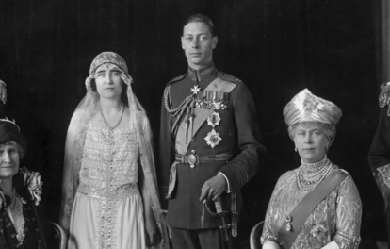
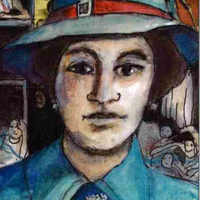
Lilian Helen Bowes Lyon (1895–1949) was a British poet. Biography Born 23 December 1895 at Ridley Hall, Northumberland. She was the youngest daughter of the Honourable Francis Bowes Lyon and was a first cousin of Elizabeth Bowes-Lyon, Queen Elizabeth the Queen Mother. During the First World War, Bowes Lyon helped at Glamis Castle (owned by her uncle) which became a convalescence home for soldiers. Her brother Charles Bowes Lyon was killed in the war on 23 October 1914, inspiring her poem “Battlefield” which was later published in Bright Feather Fading. After the Great War, Bowes Lyon studied for a time at the University of Oxford and then moved to London. She was independently wealthy. In 1929, she met the writer William Plomer CBE and through him, Laurens van der Post. She published two novels, The Buried Stream (1929) and Under the Spreading Tree (1931) but thereafter focused on poetry. Bowes Lyon published six individual collections with Jonathan Cape and a Collected Poems in 1948. Her “Collected Poems” contains an introduction by C. Day-Lewis, who noted the influences of Emily Dickinson, Hopkins and Christina Rossetti. Her verse appeared in many periodicals and anthologies including The Adelphi, Country Life, Kingdom Come, The Listener, The London Mercury, The Lyric (USA), The Observer, Orion, Punch, The Spectator, Time and Tide and “Poetry” (USA). During the Second World War, Bowes Lyon moved to the East End of London, where she used the Tilbury Docks unofficial air raid shelter and assisted with nursing the injured. She had several amputations due to thromboangiitis obliterans (Buerger’s Disease), losing toes, a foot, her lower legs and eventually both her legs below her hips. She returned to her home in Kensington and continued to write poetry despite the thromboangitis obliterans beginning to affect her hands. These poems, found amongst William Plomer’s papers at University of Durham, were published in “Uncollected Poems” by Tragara Press. She died on 25 July 1949.

